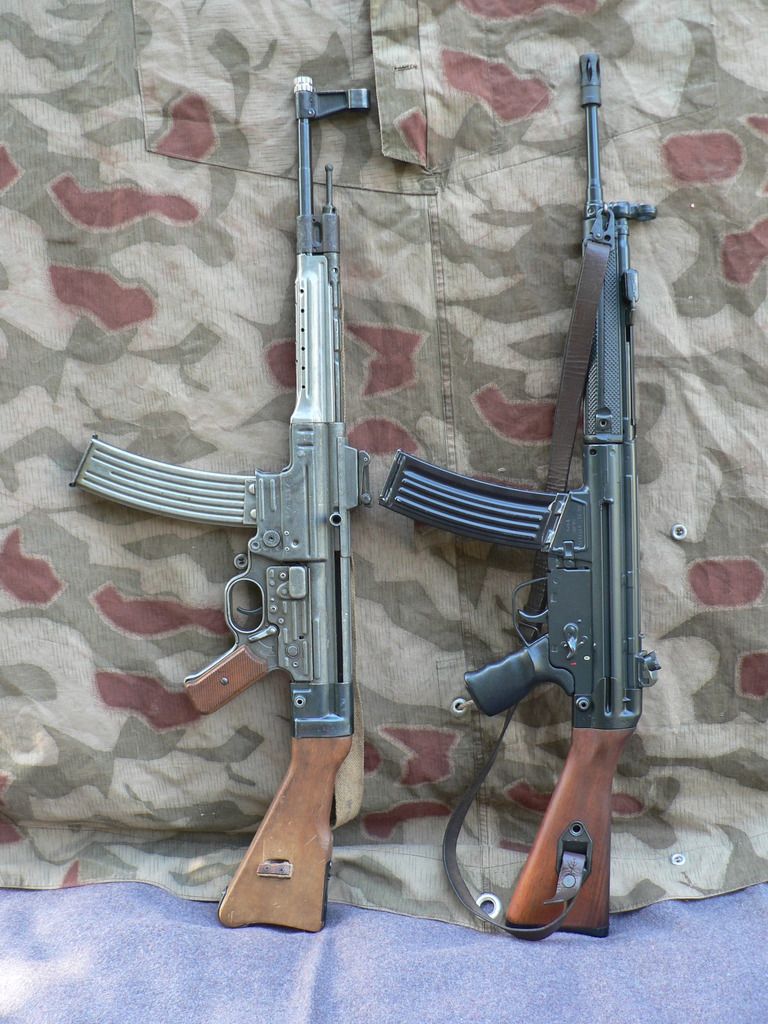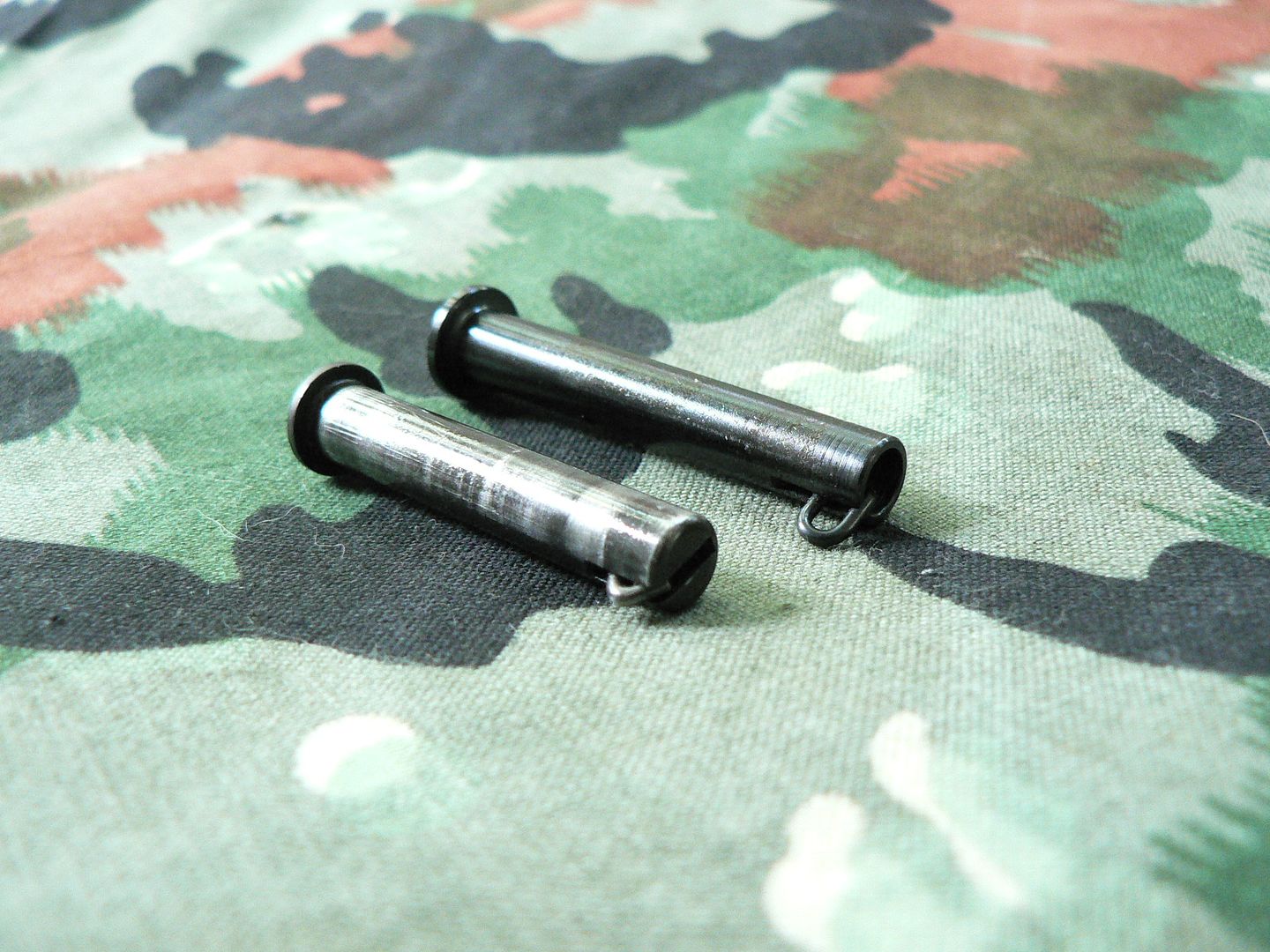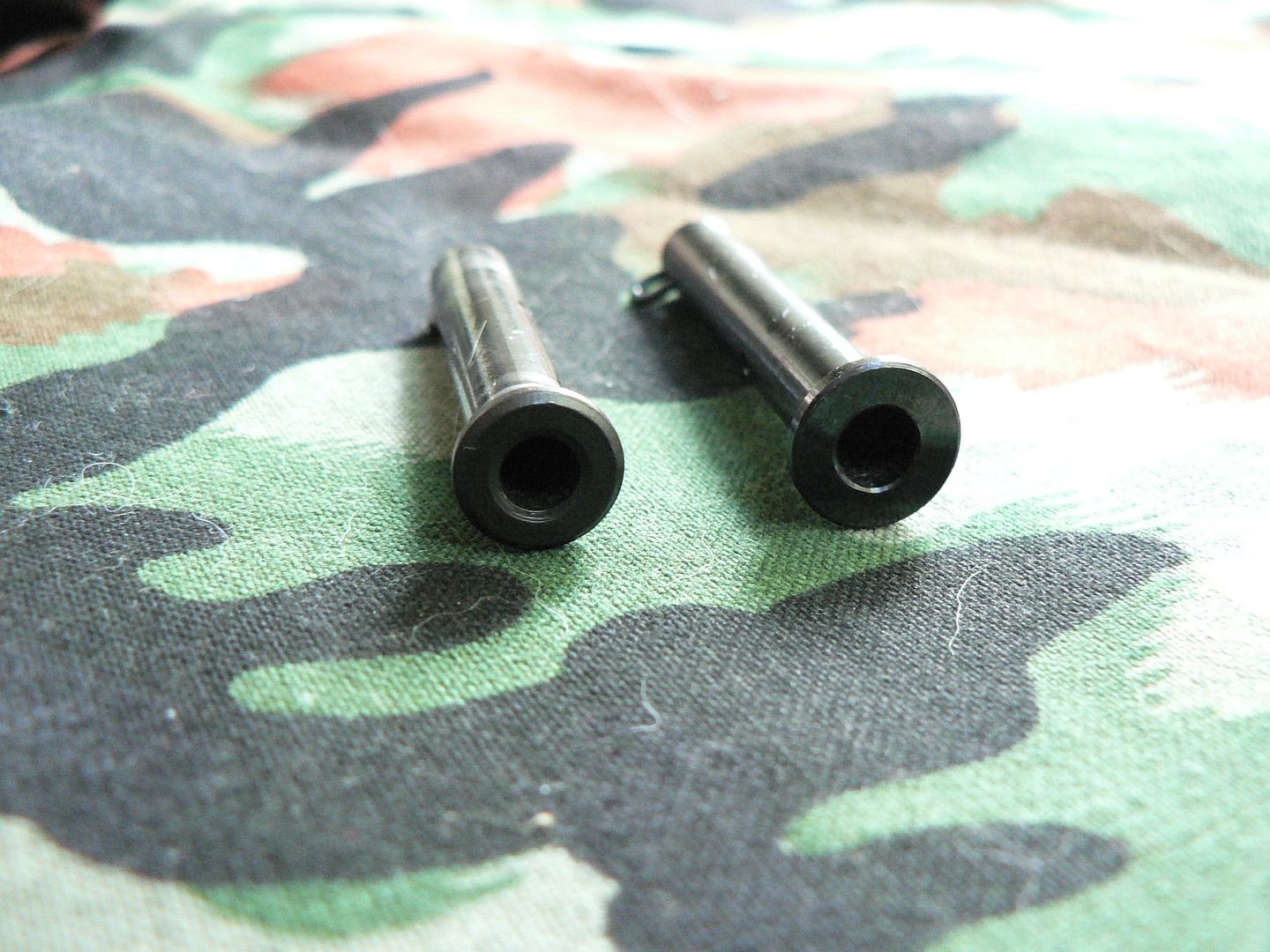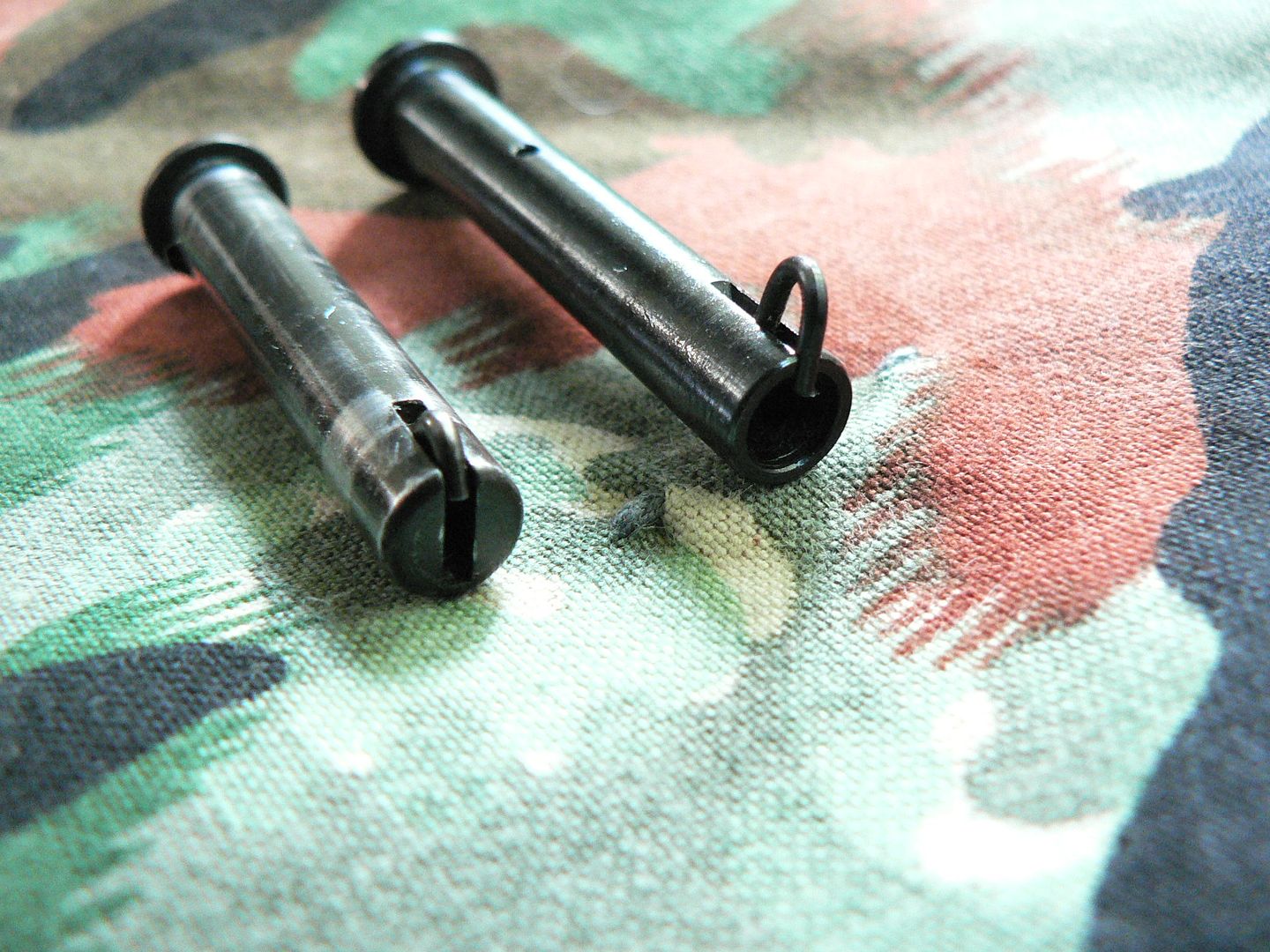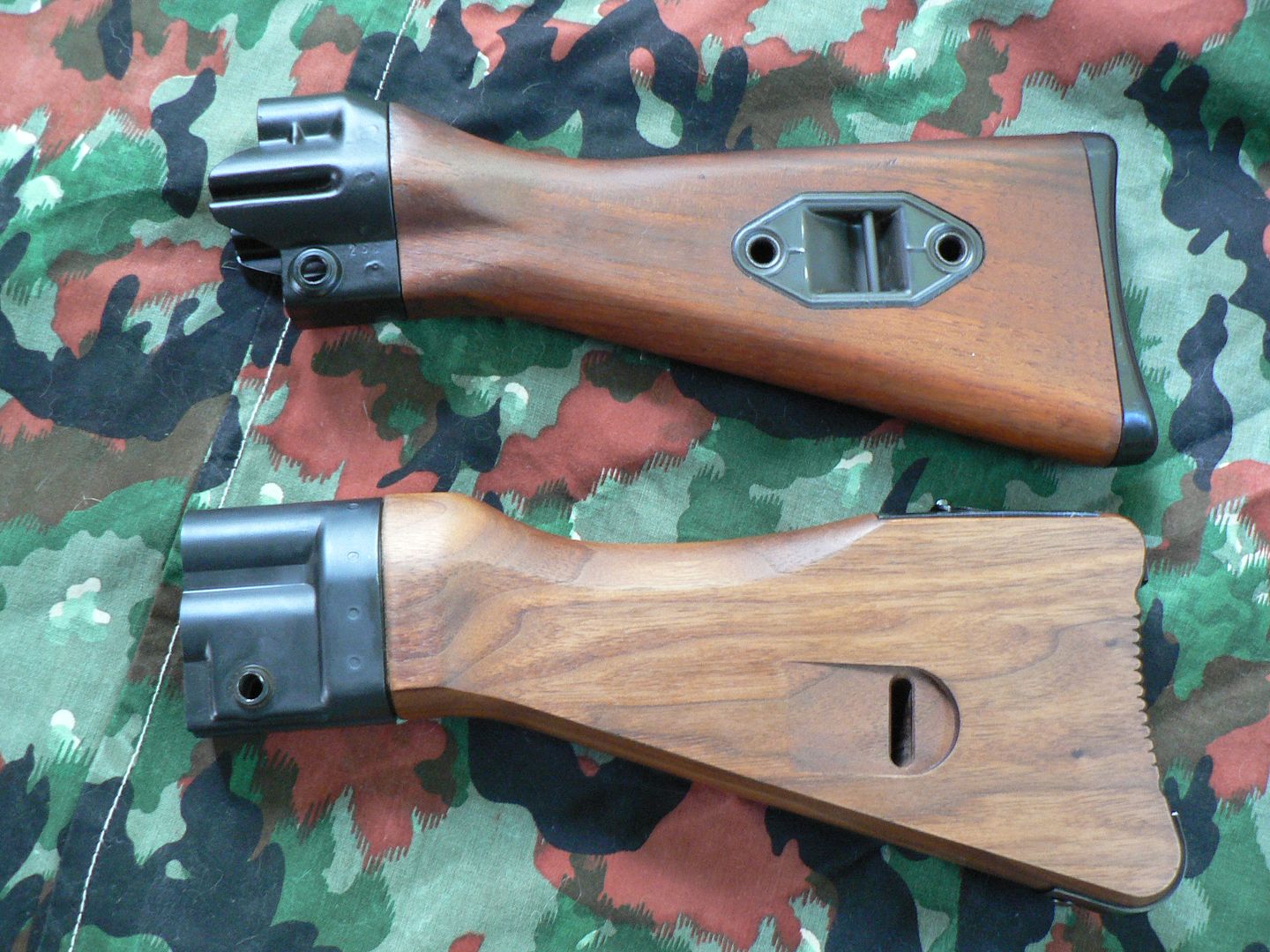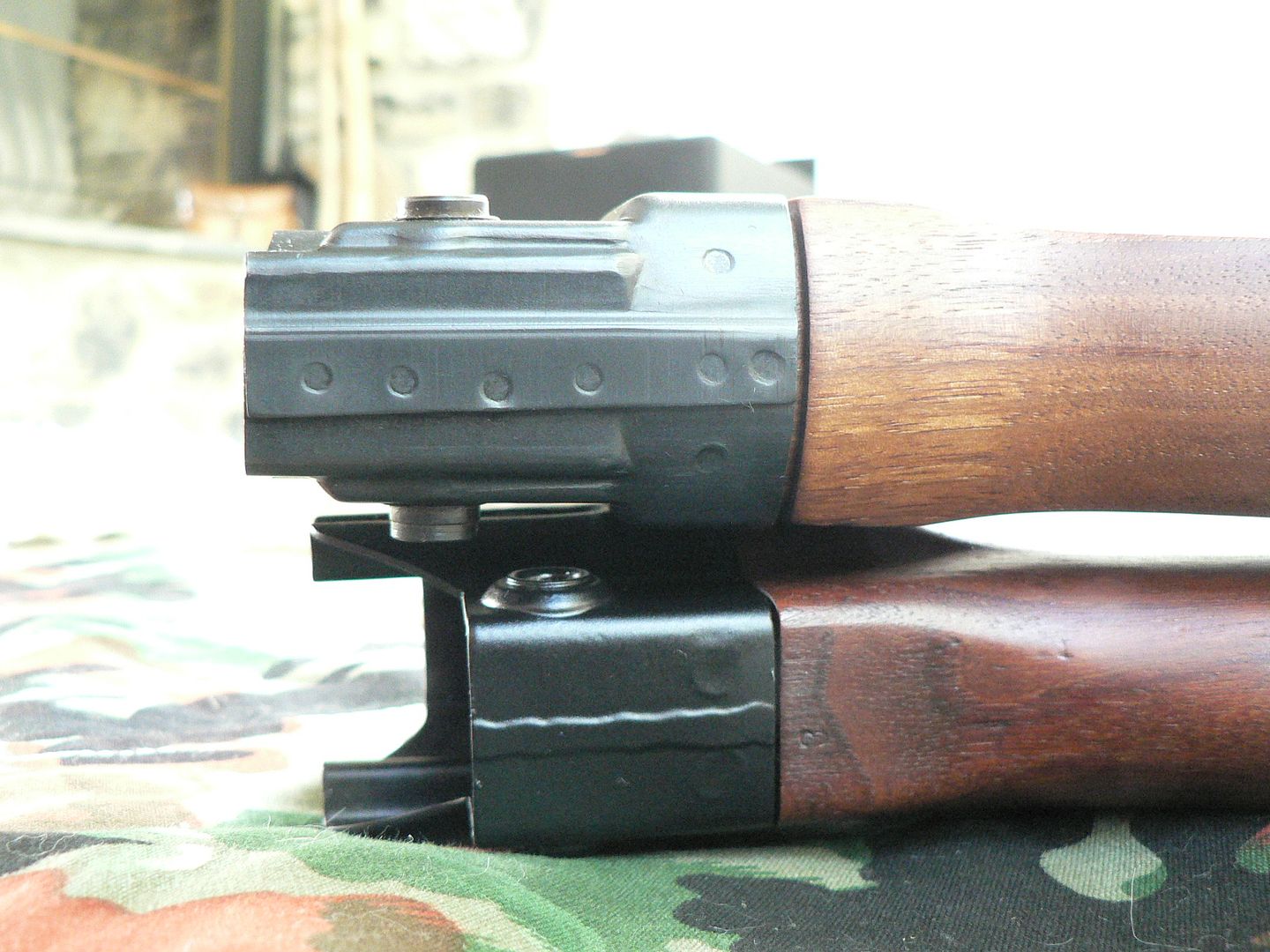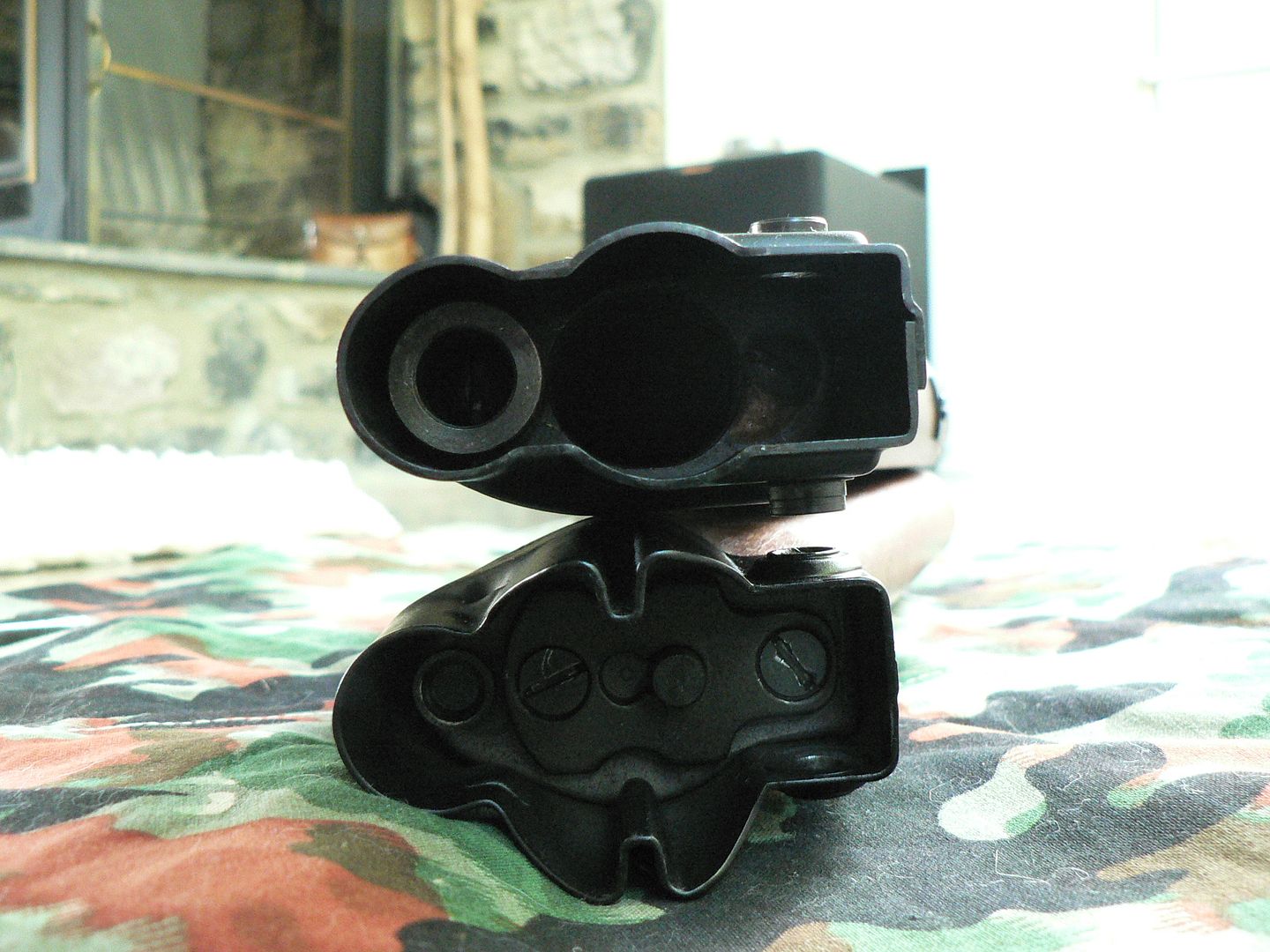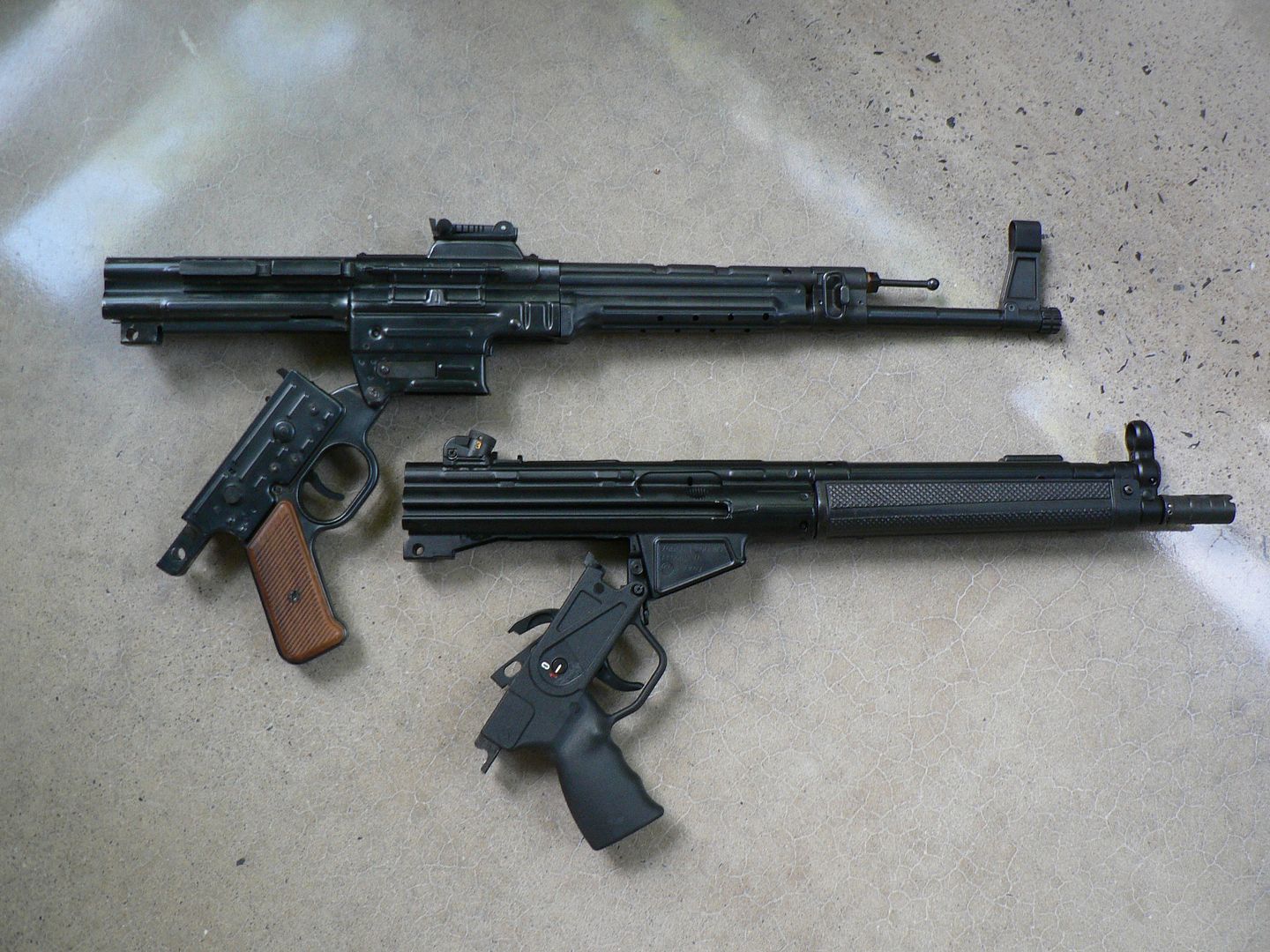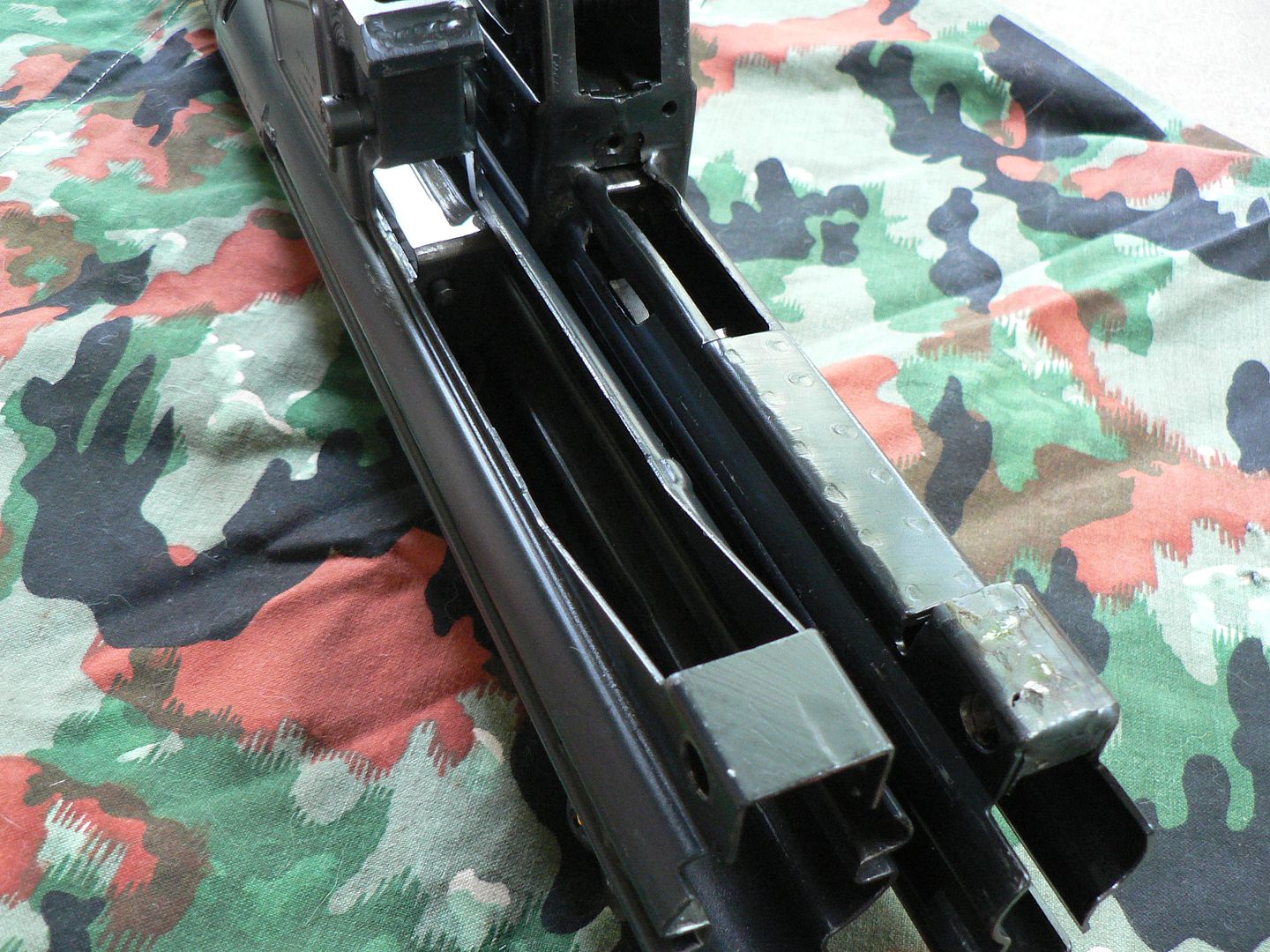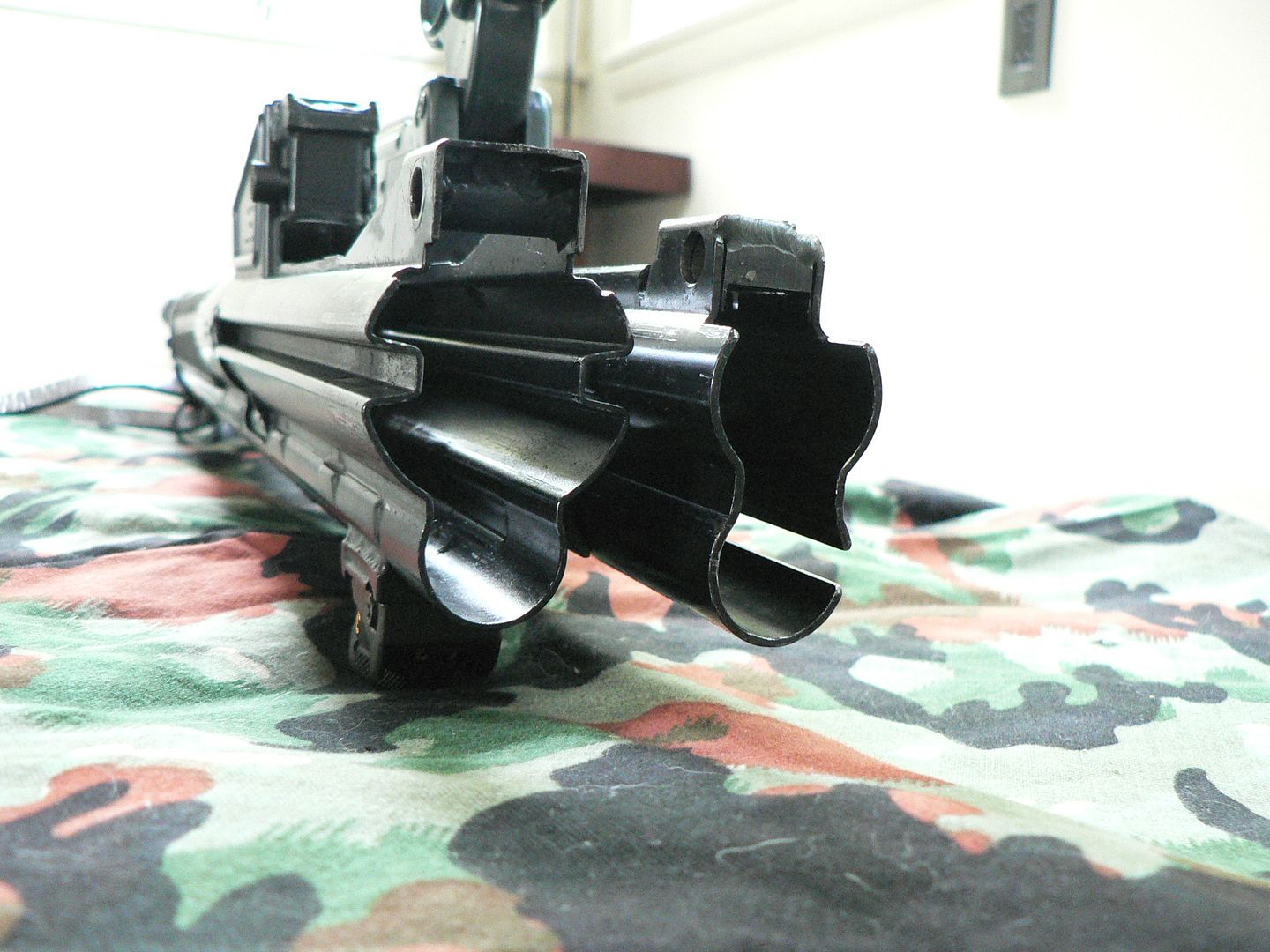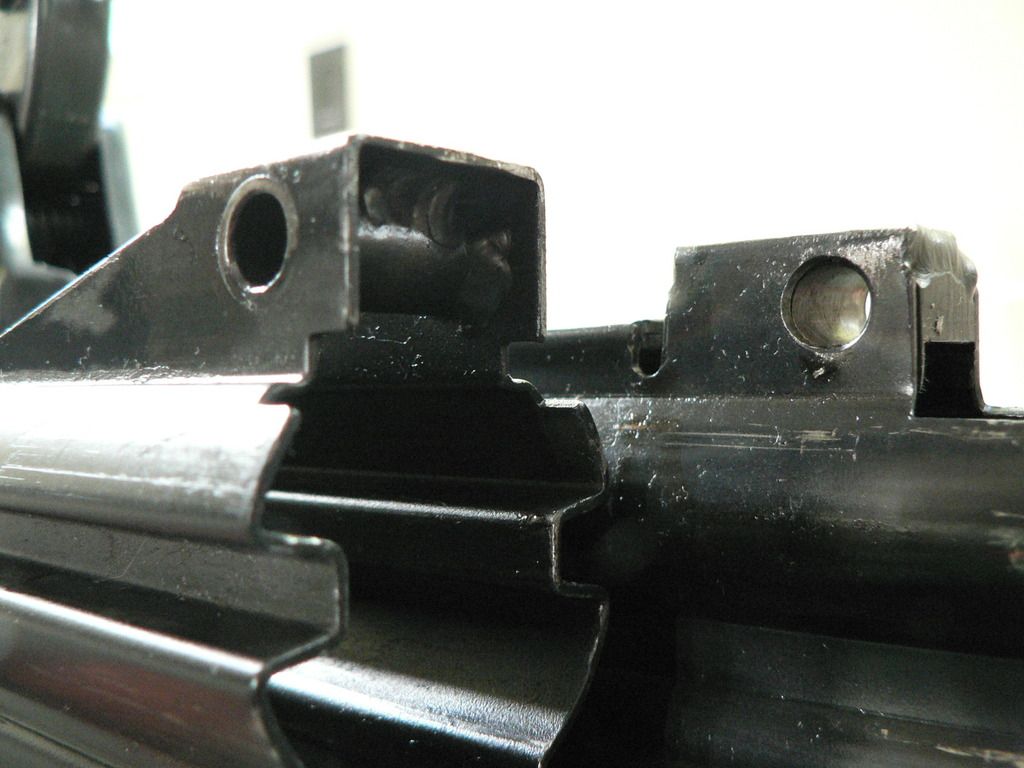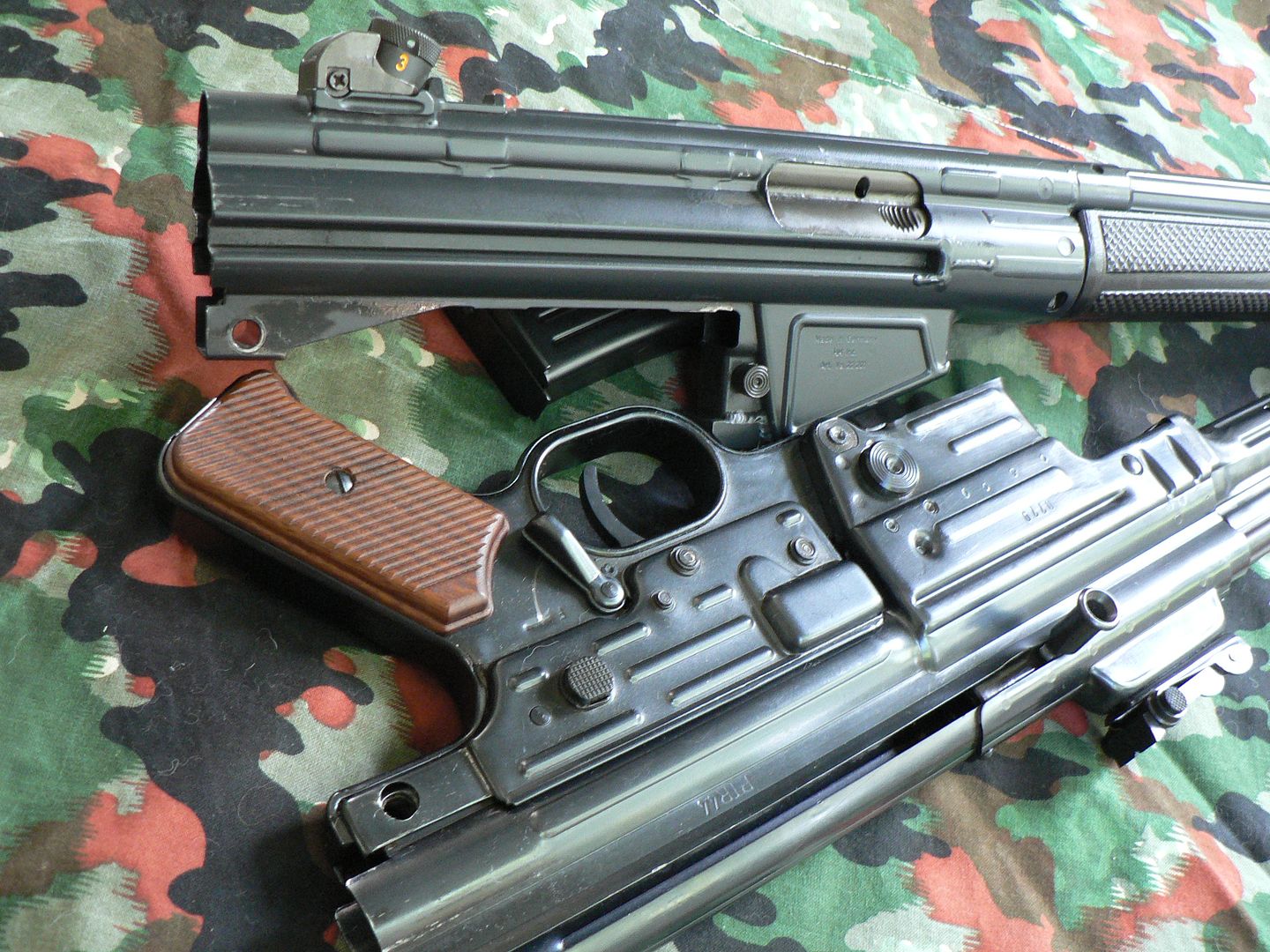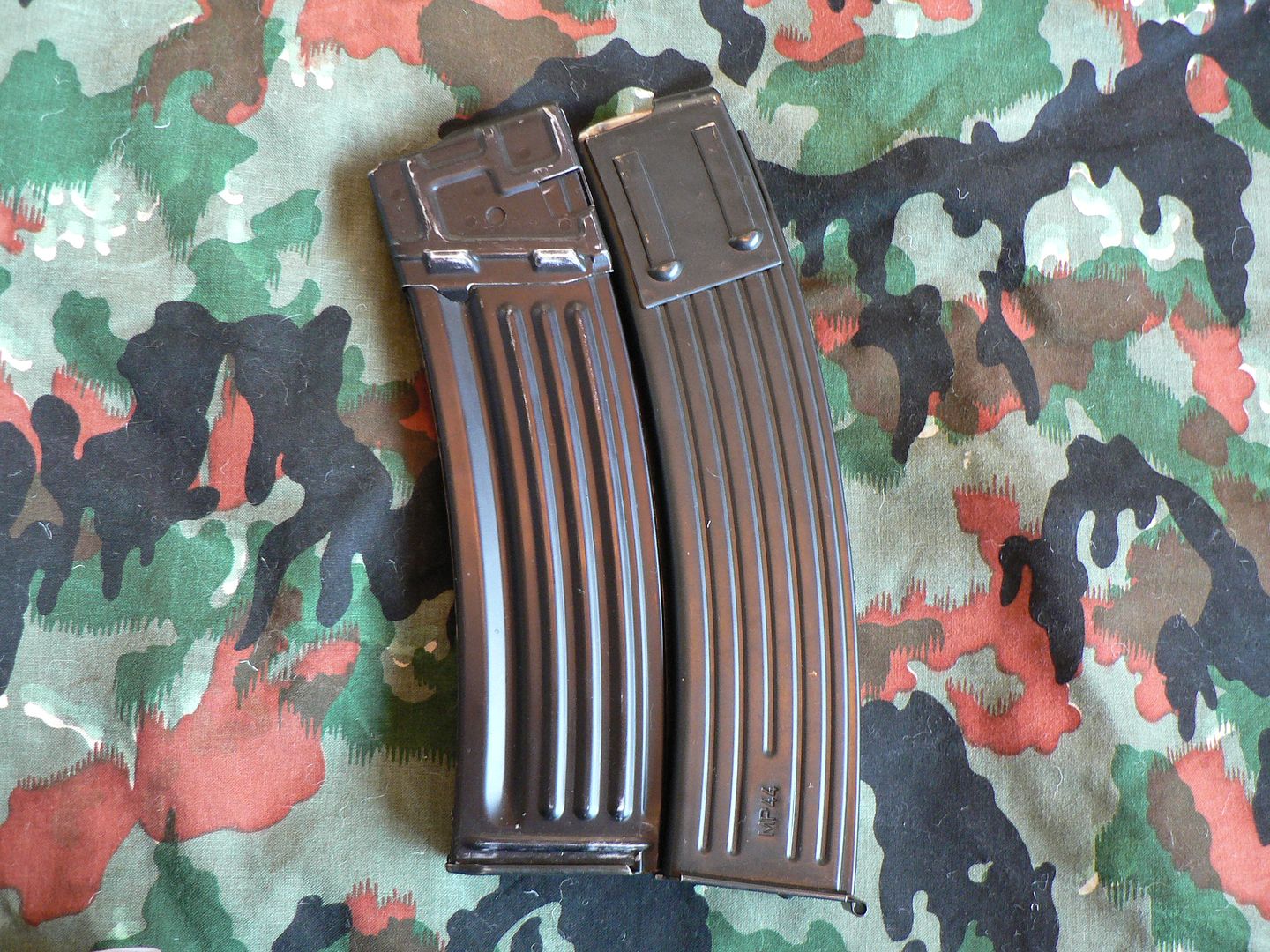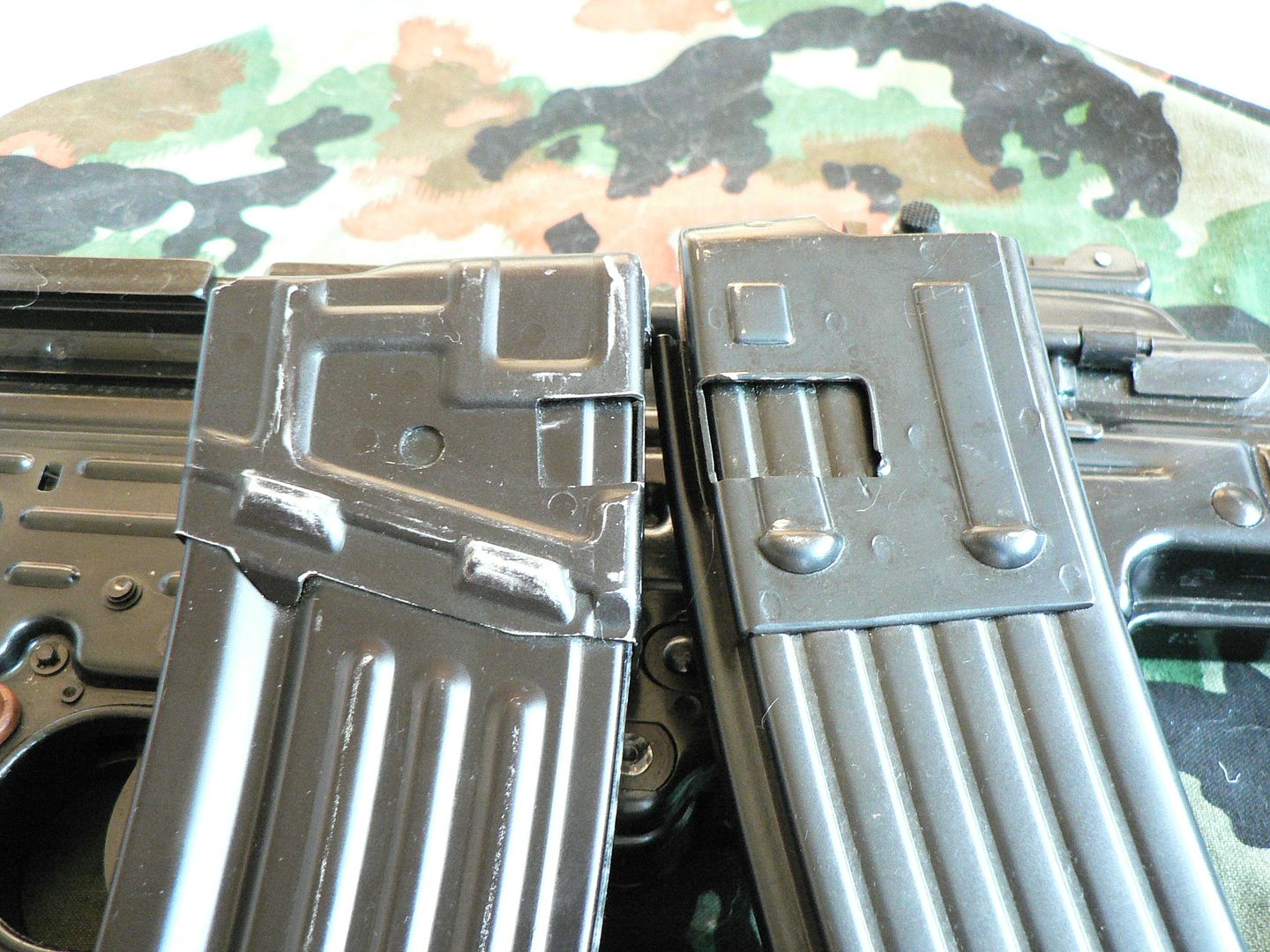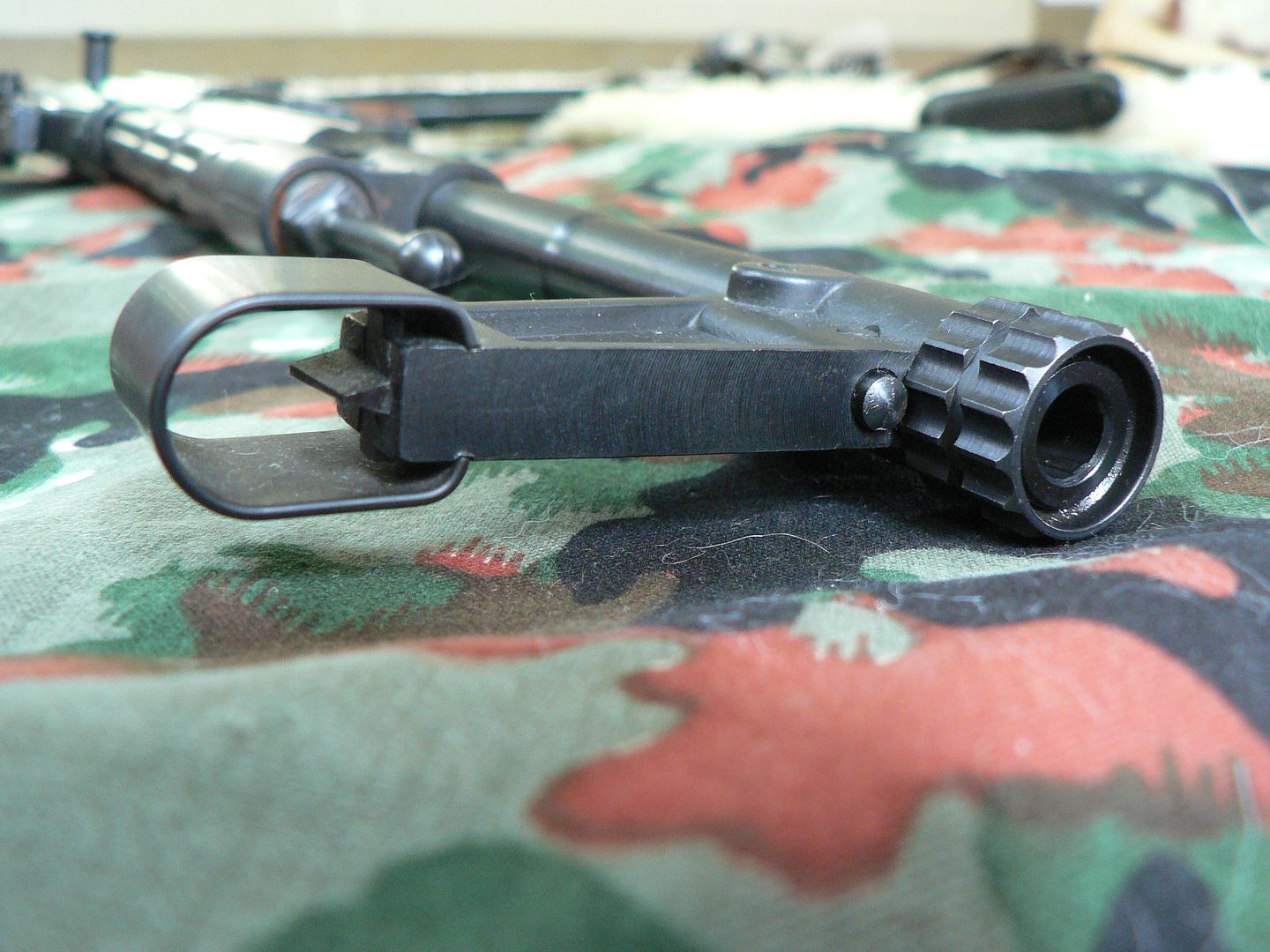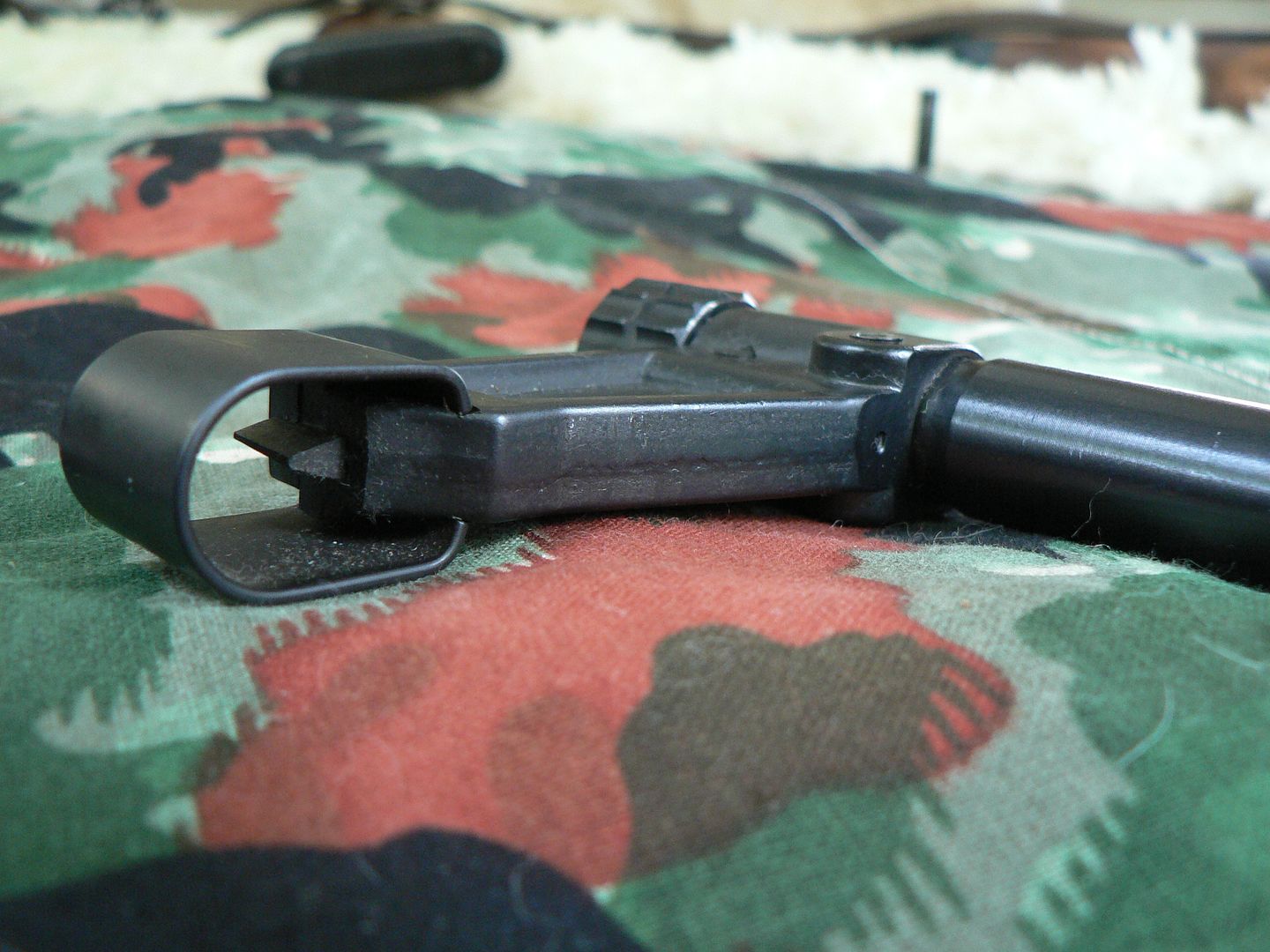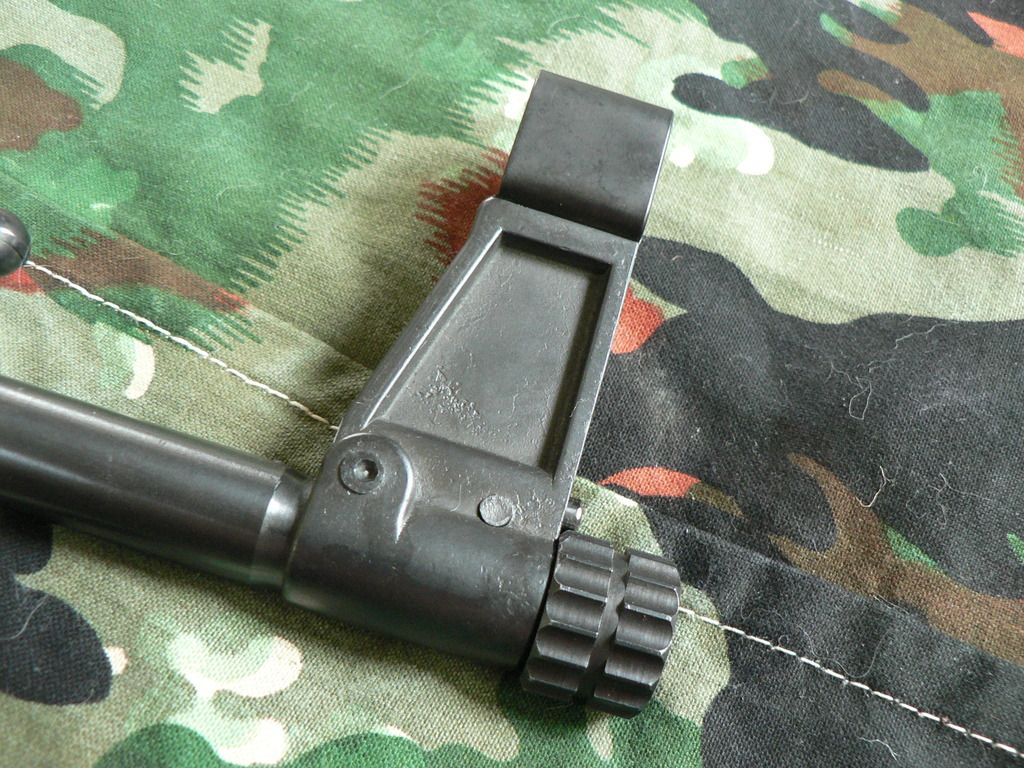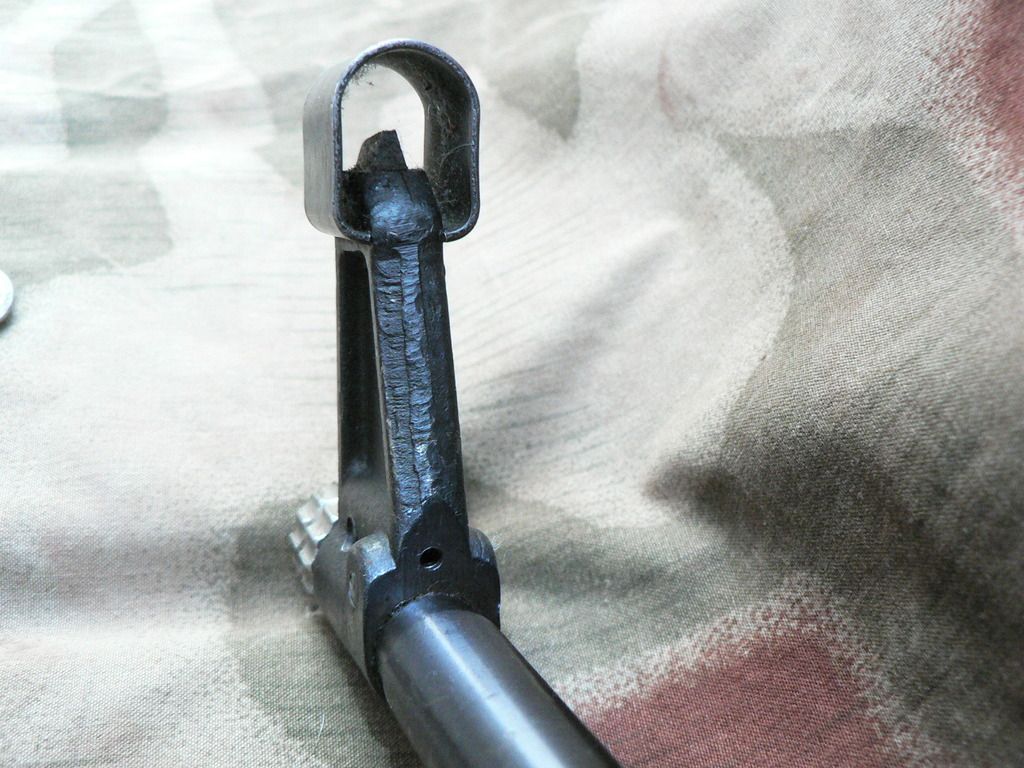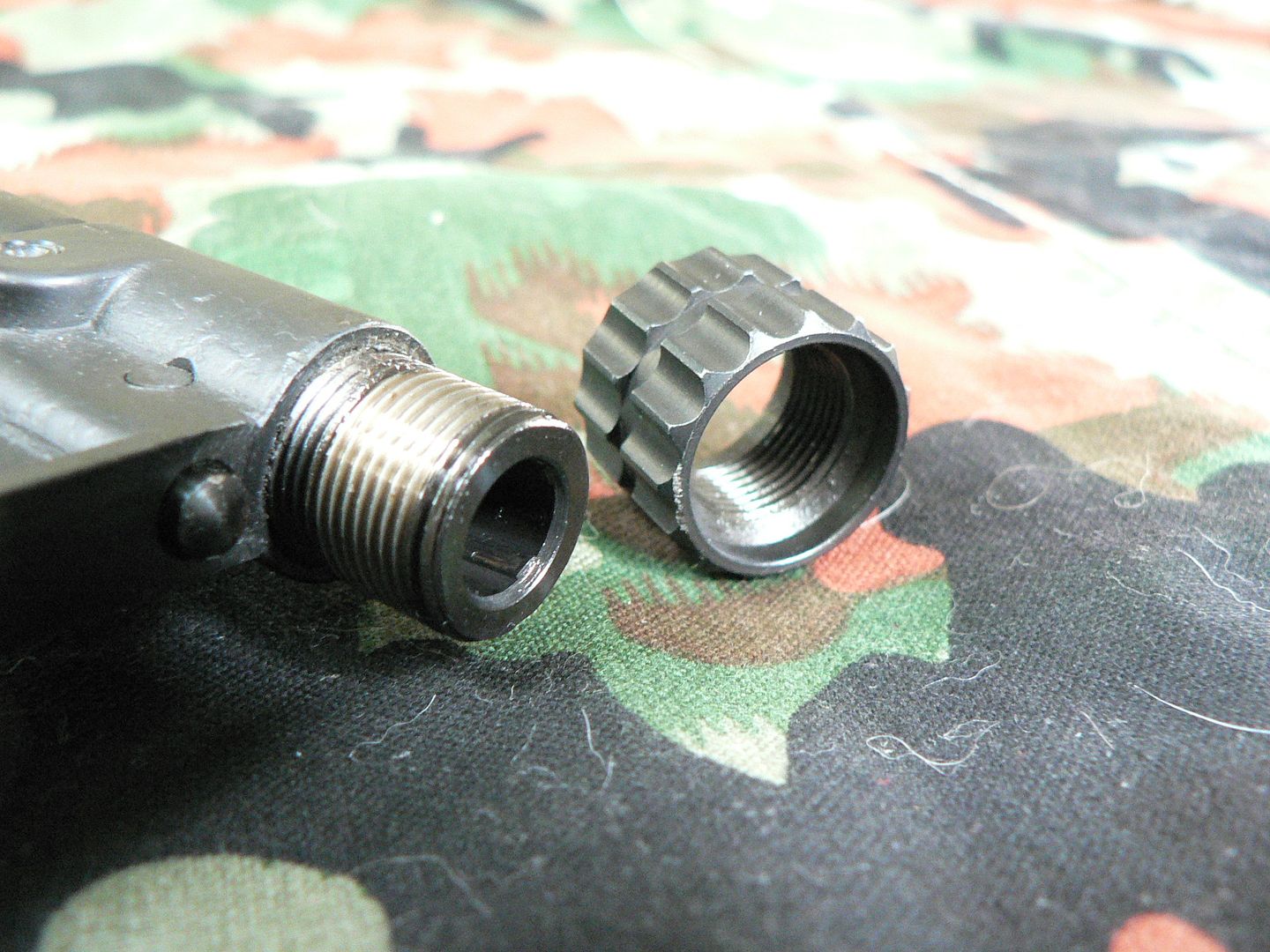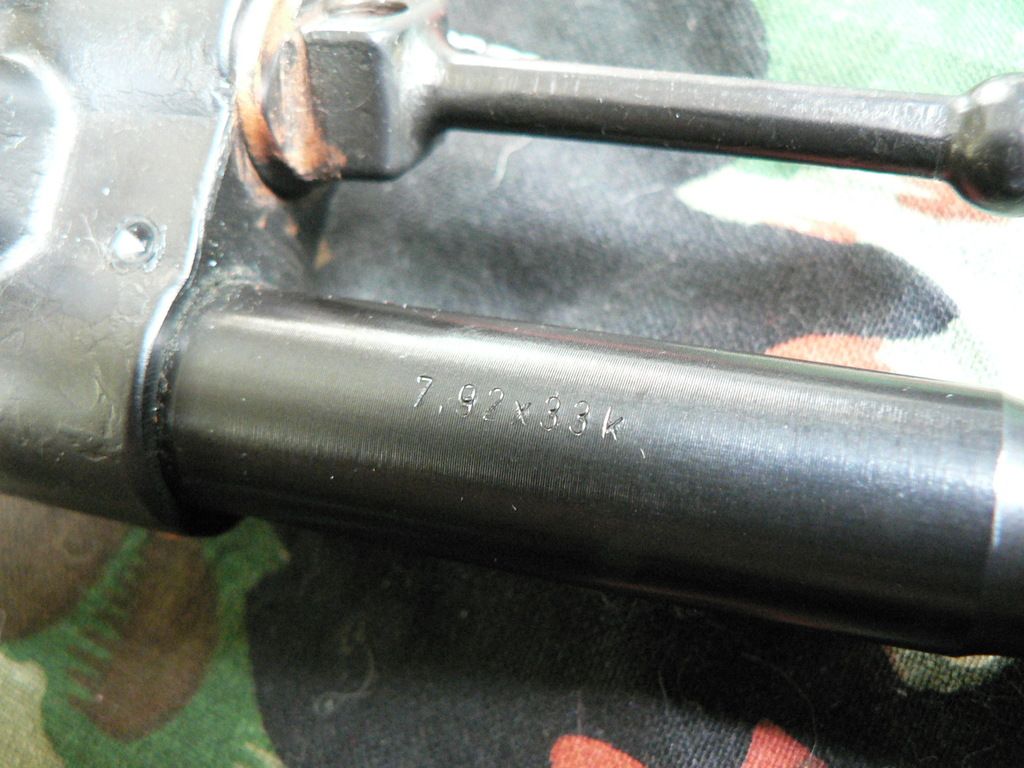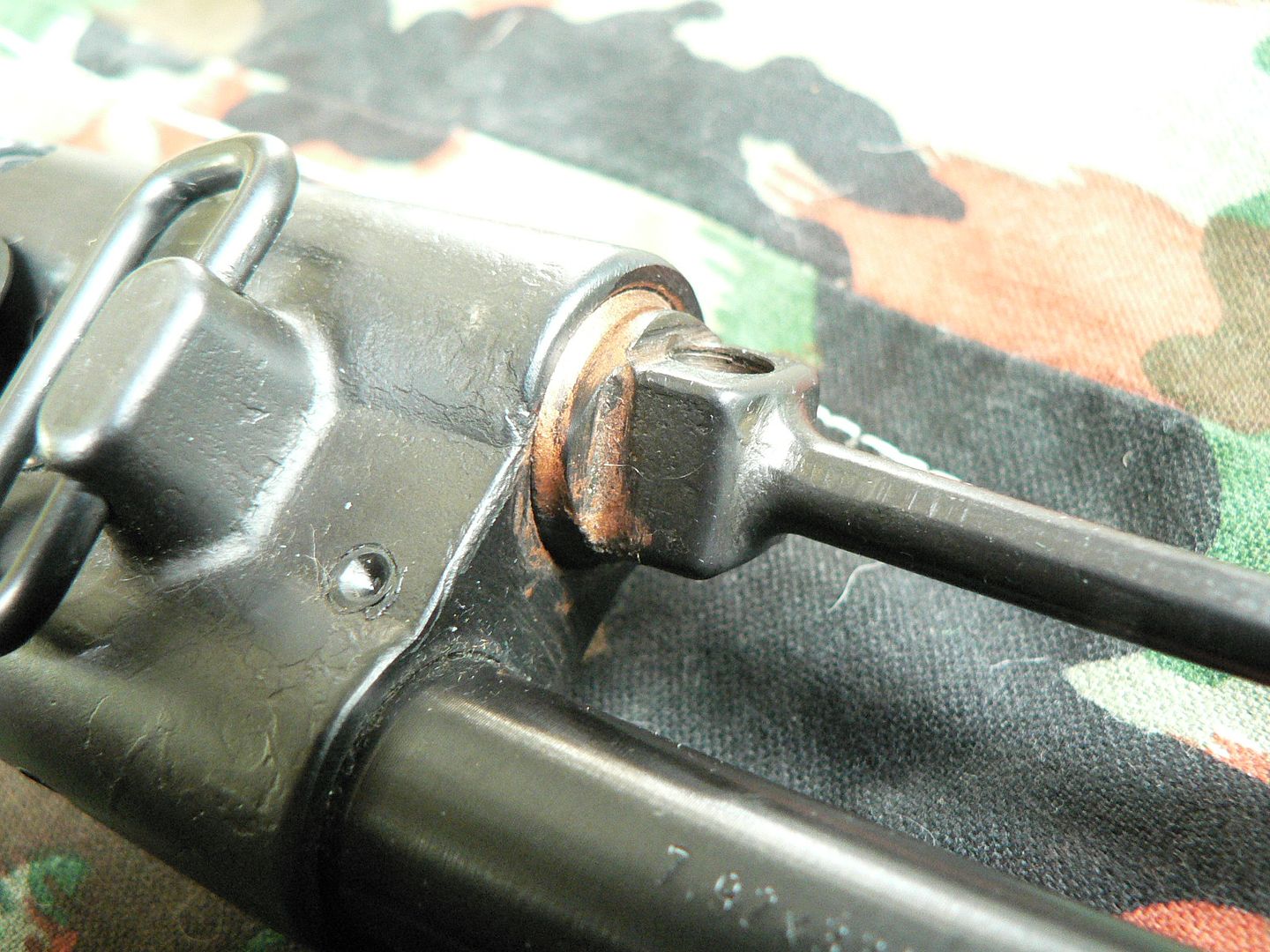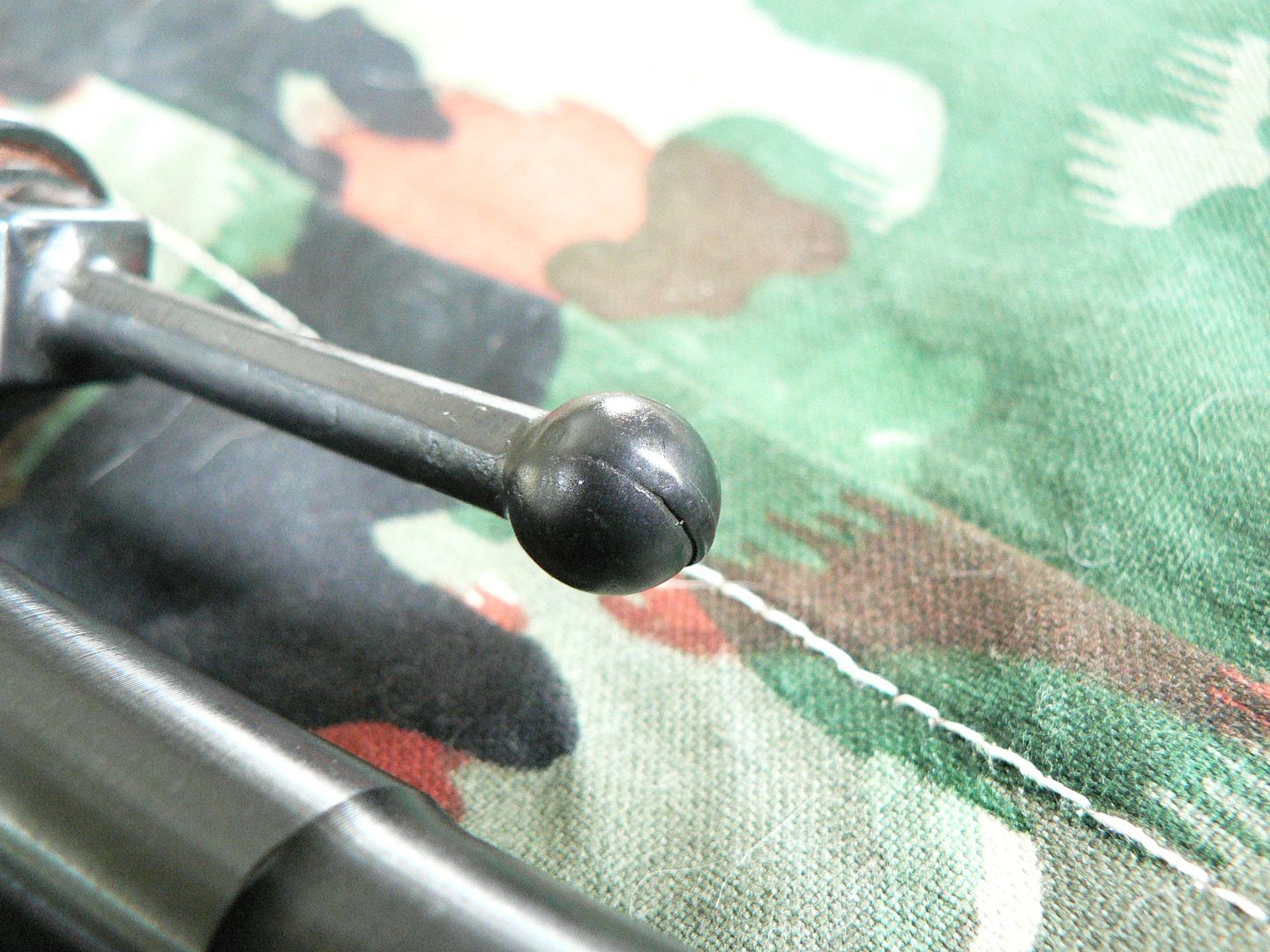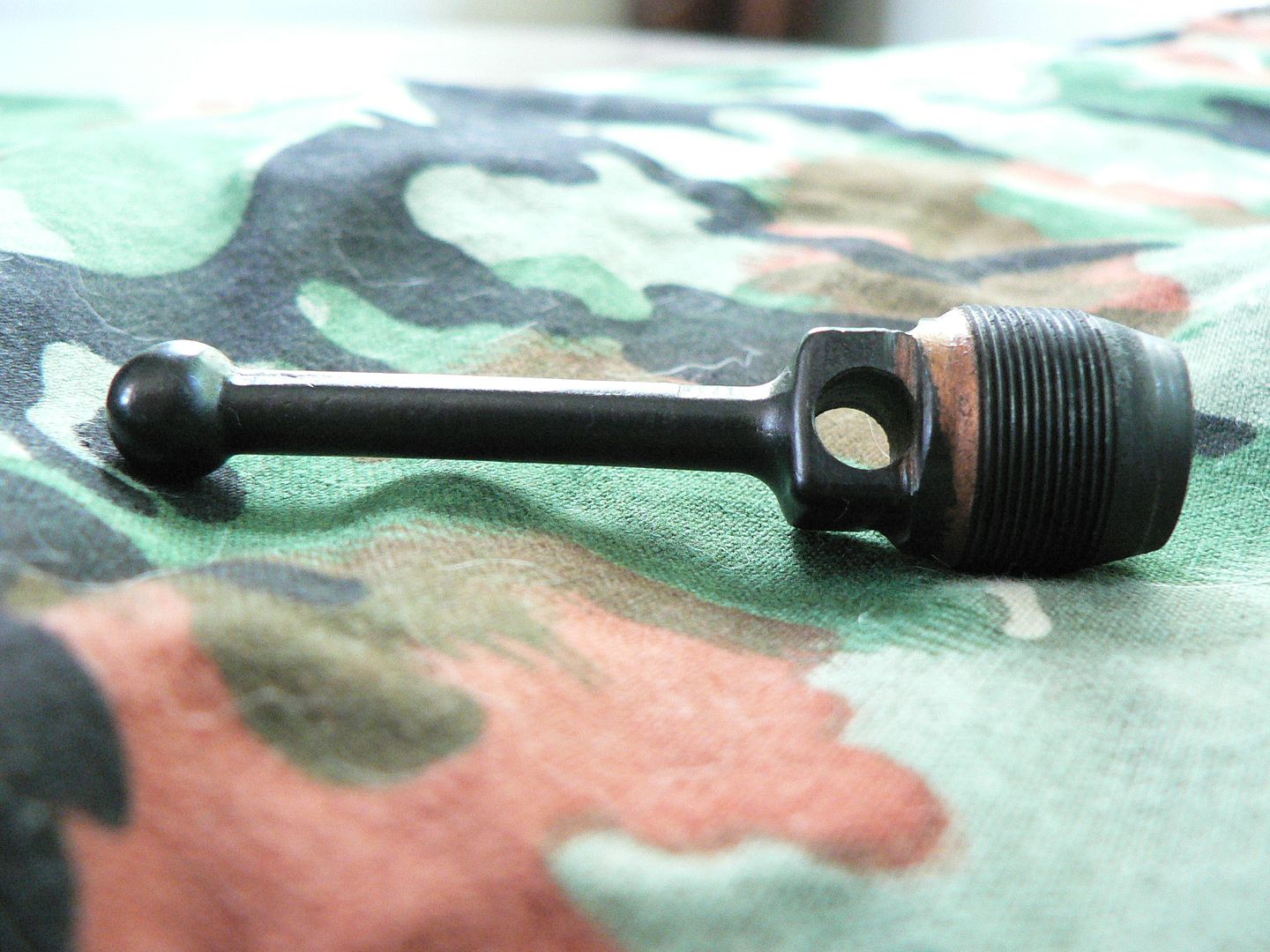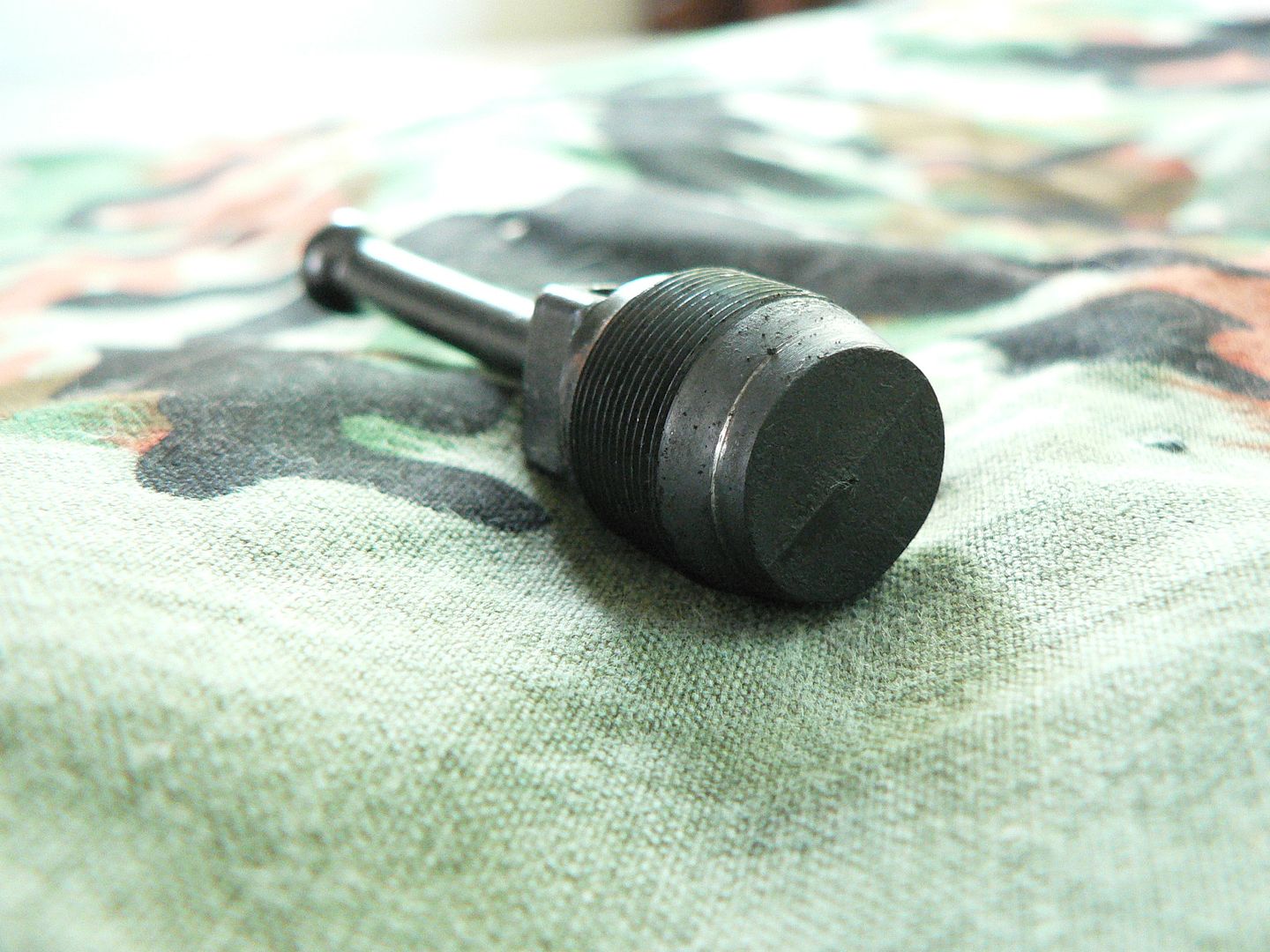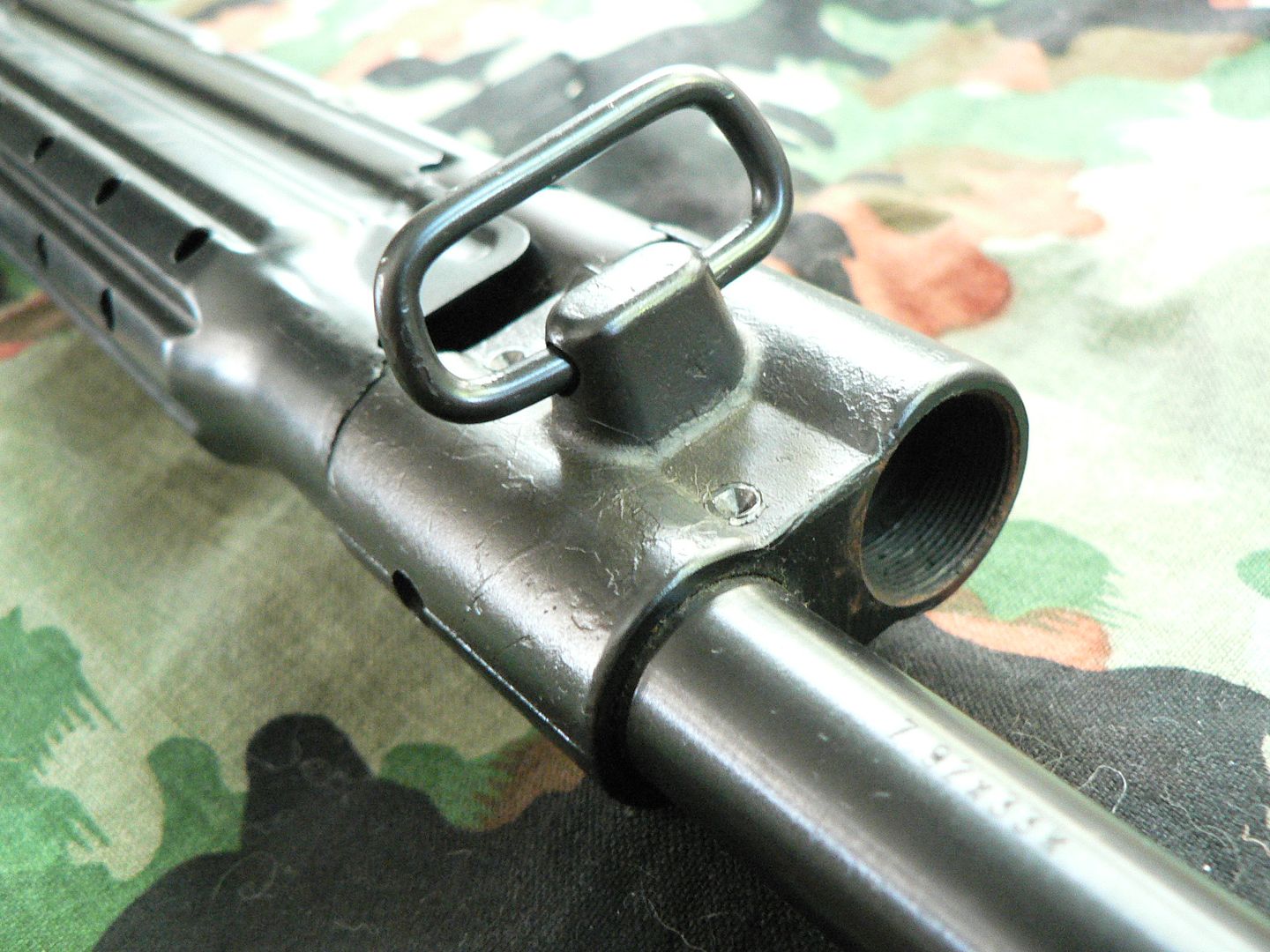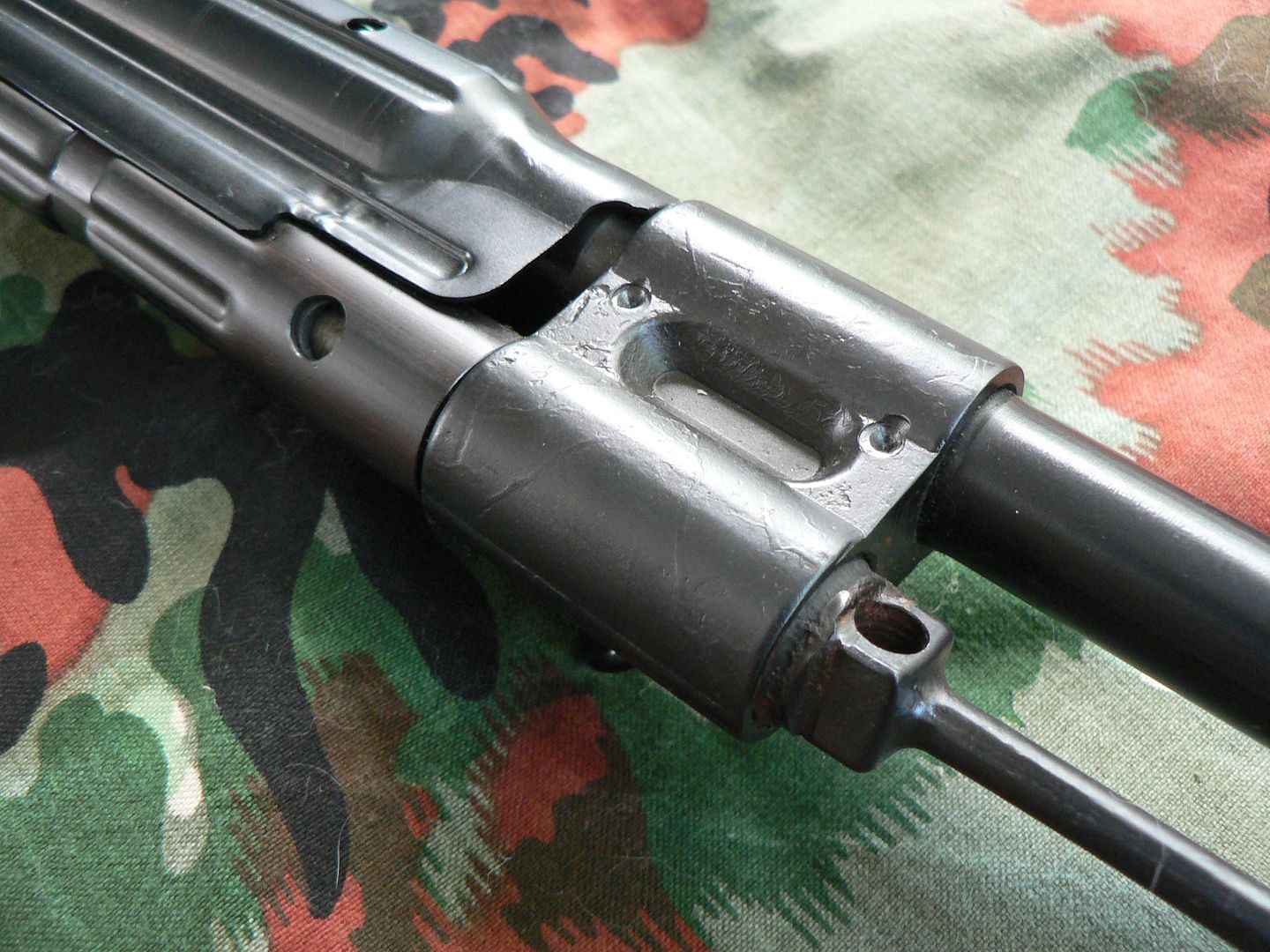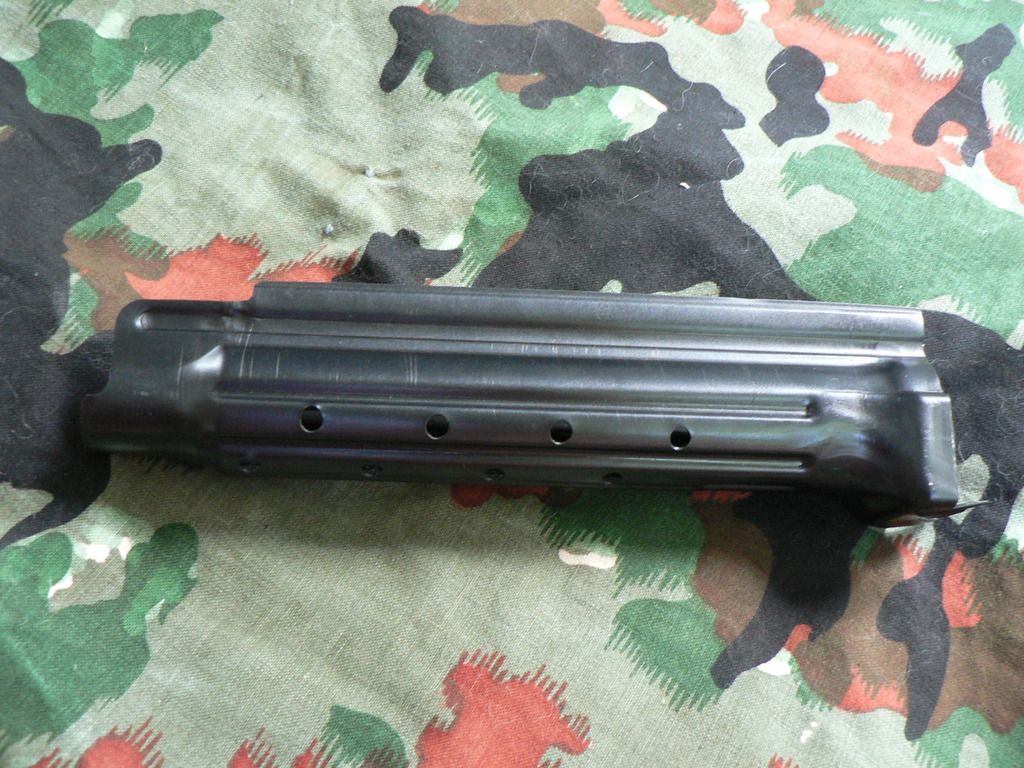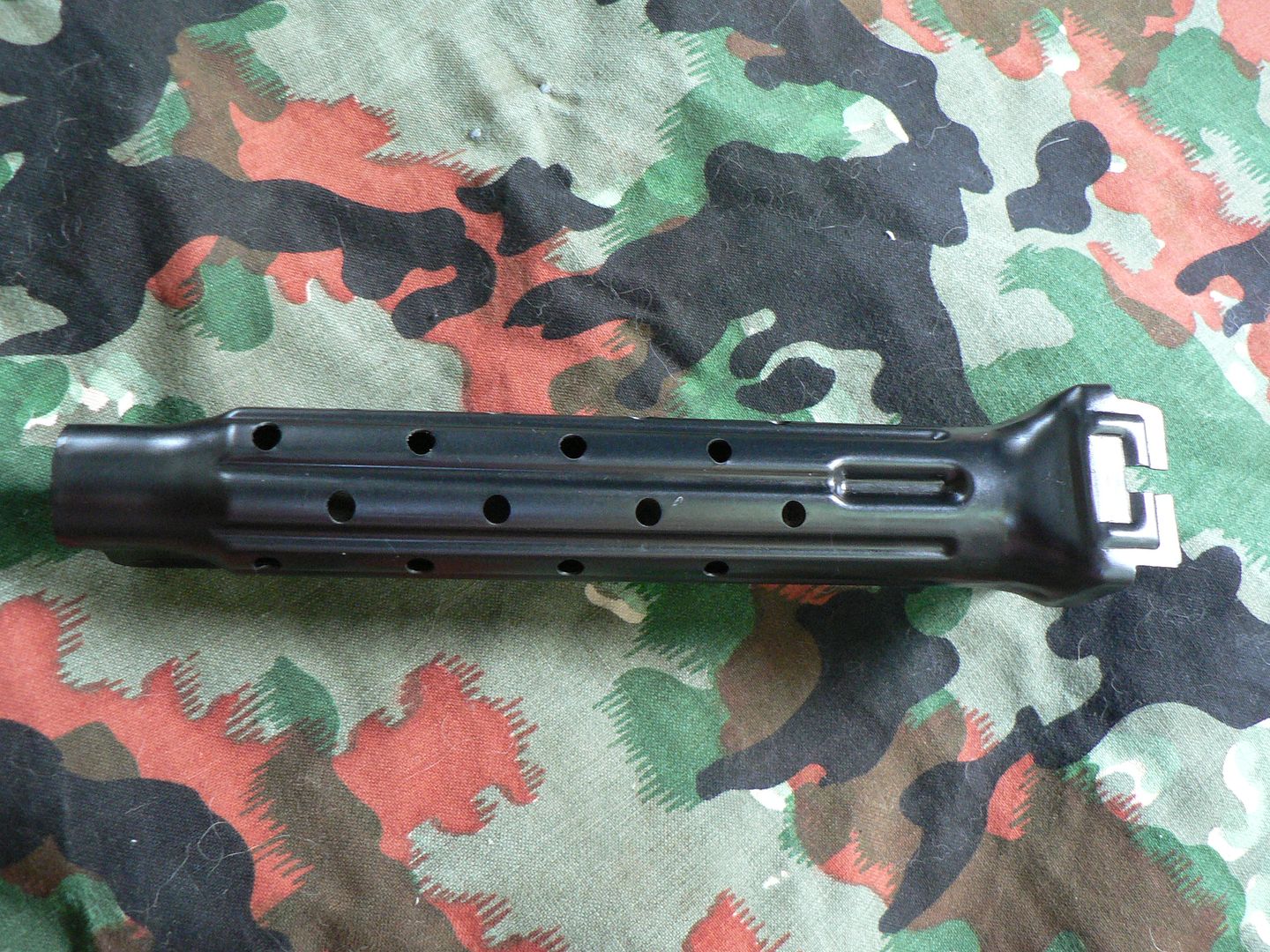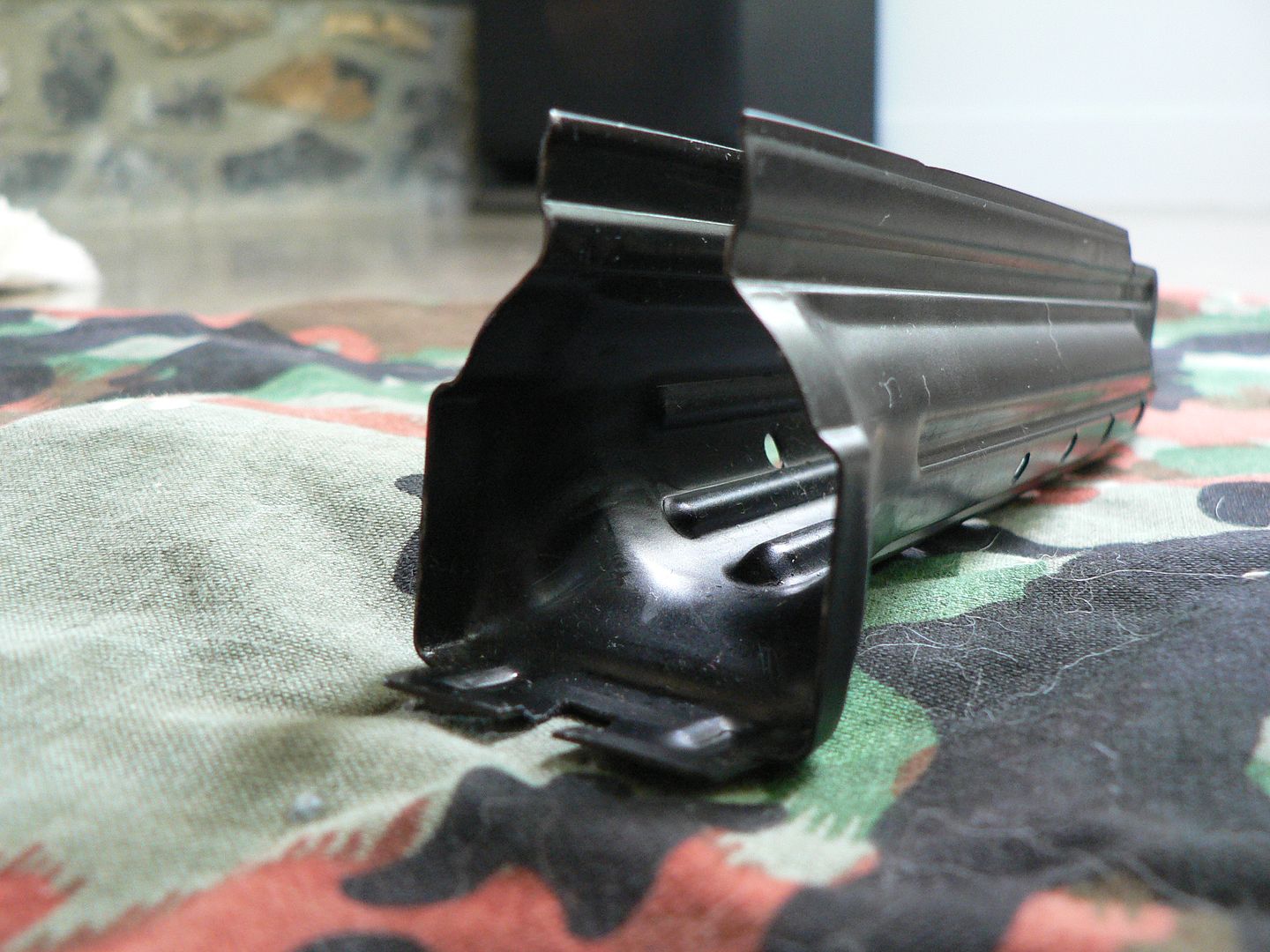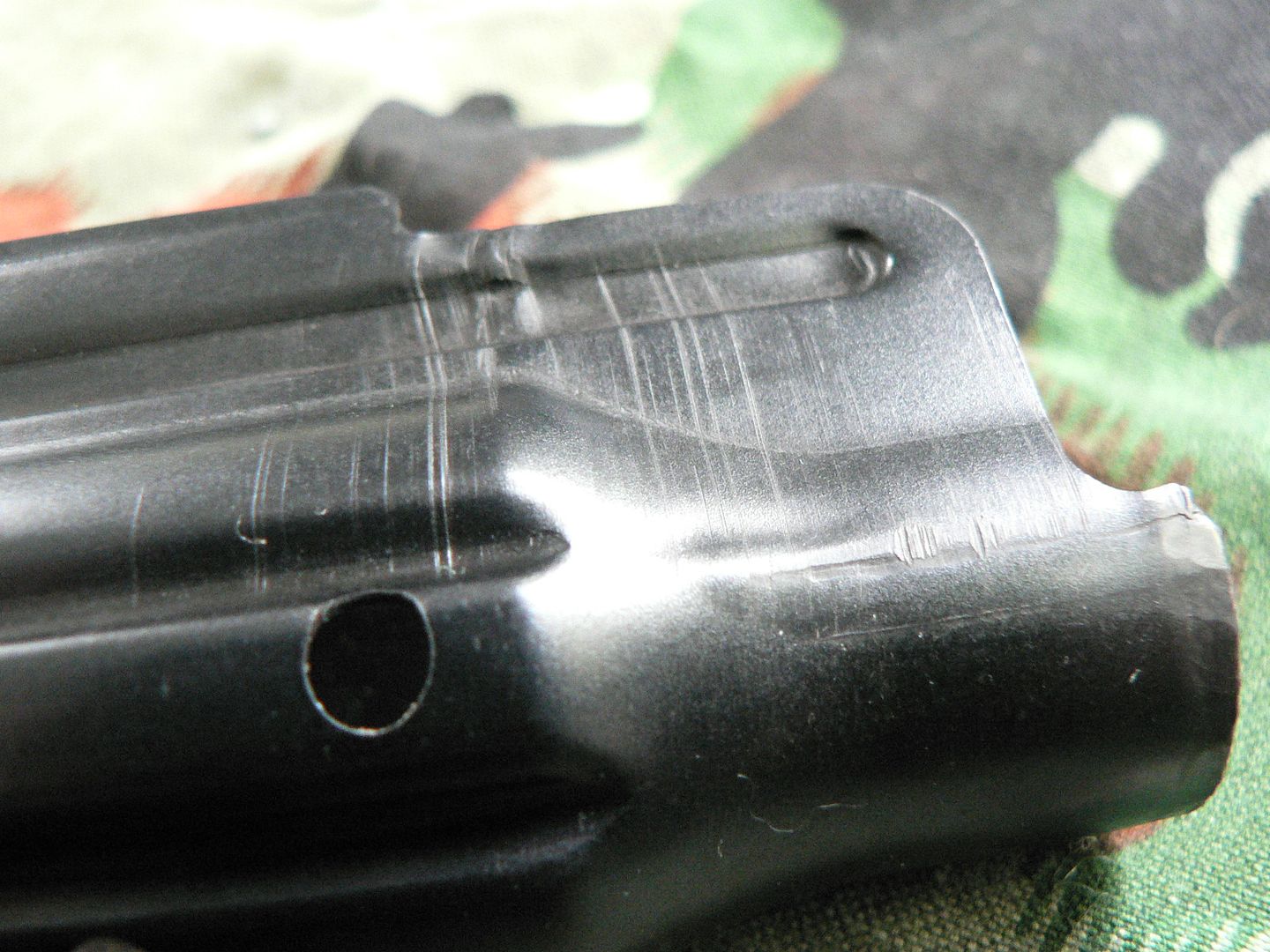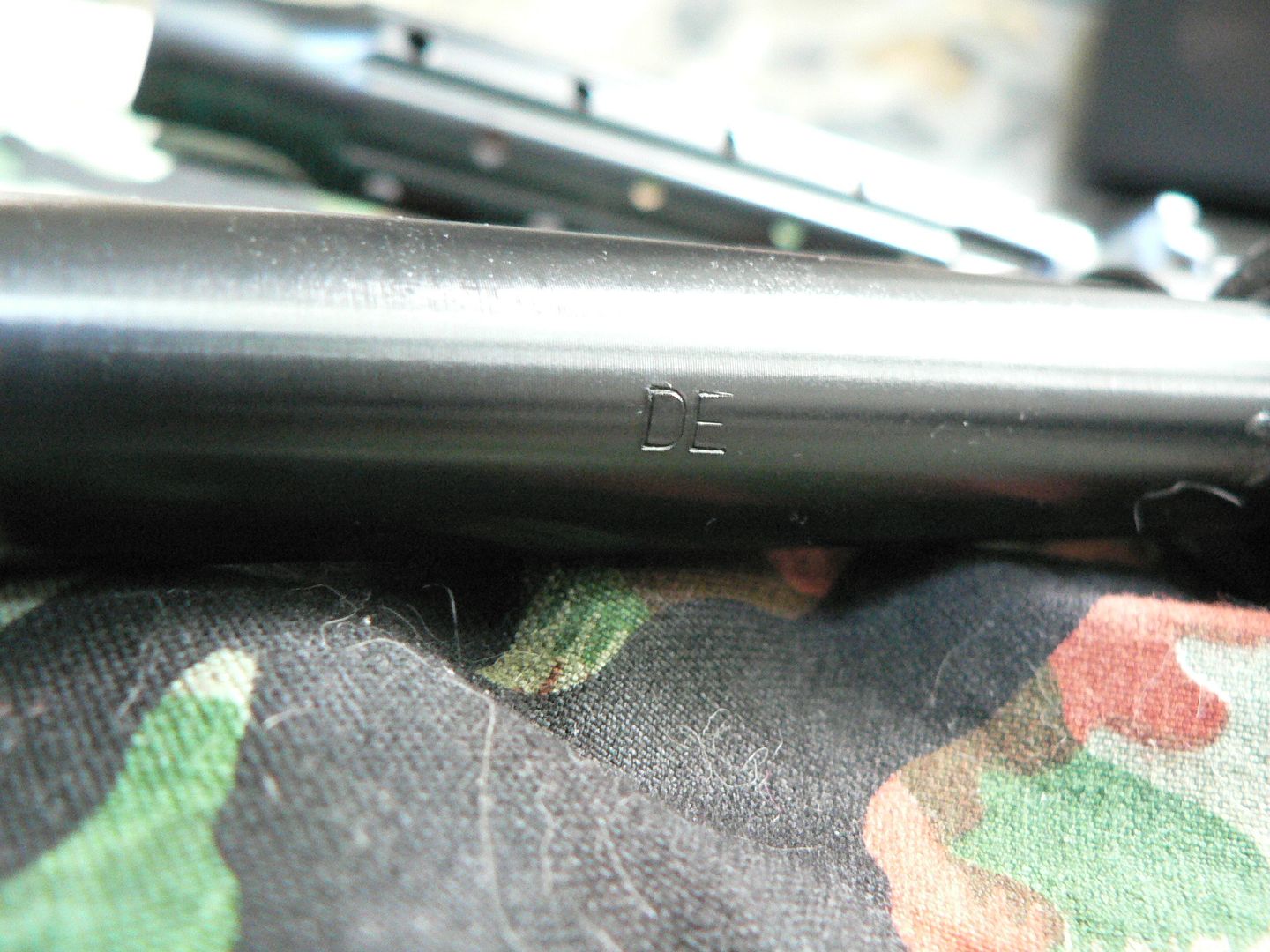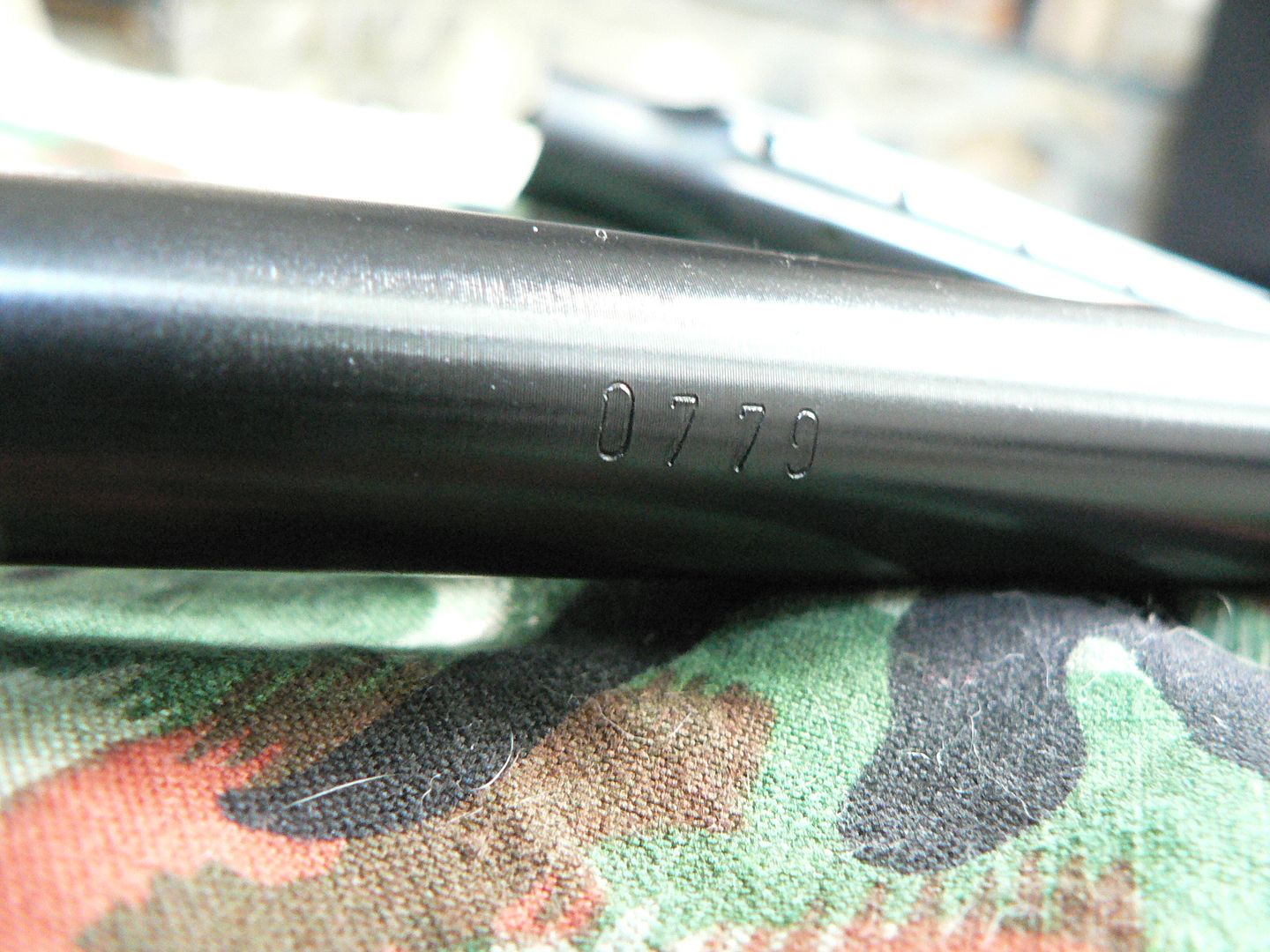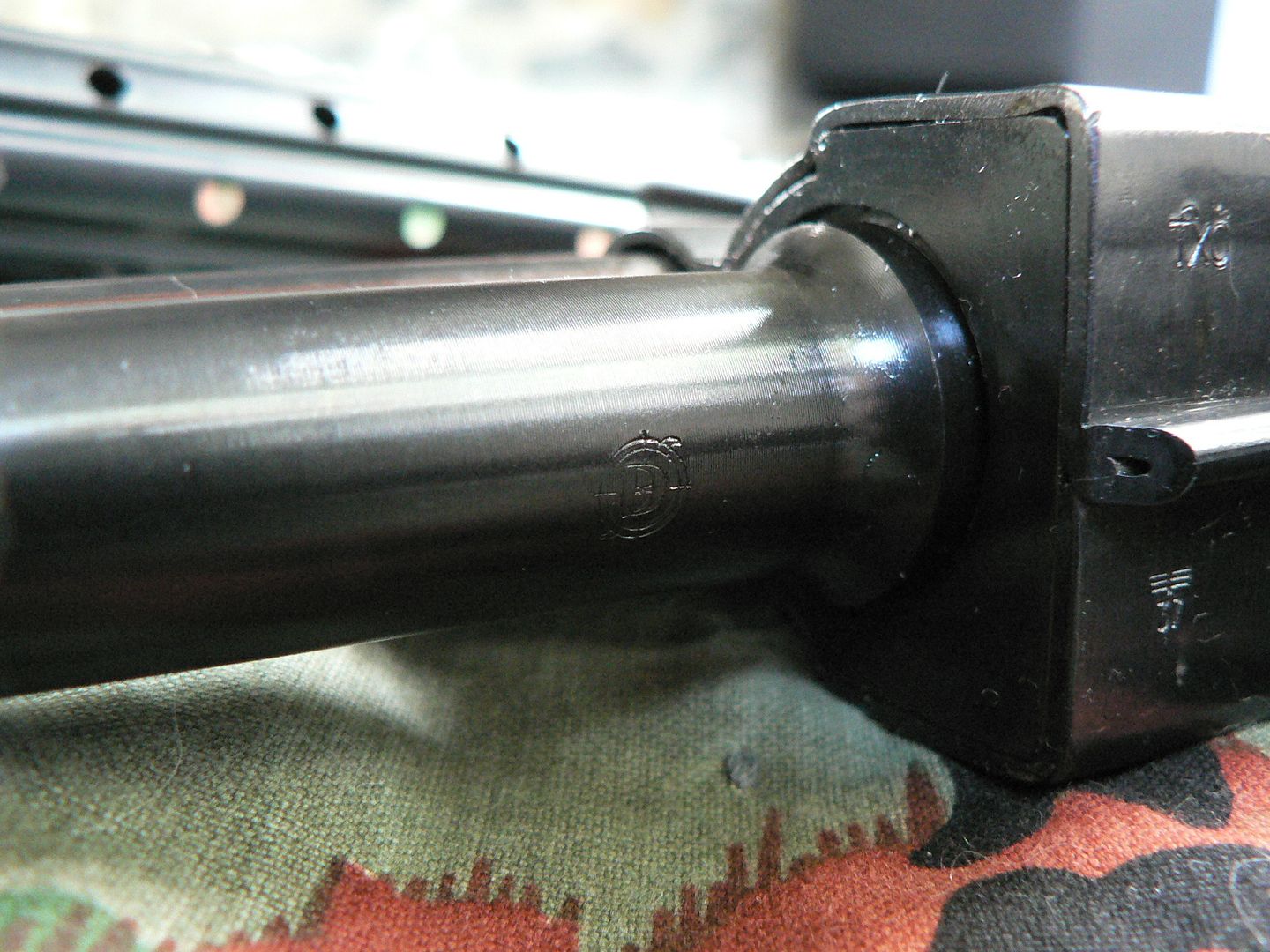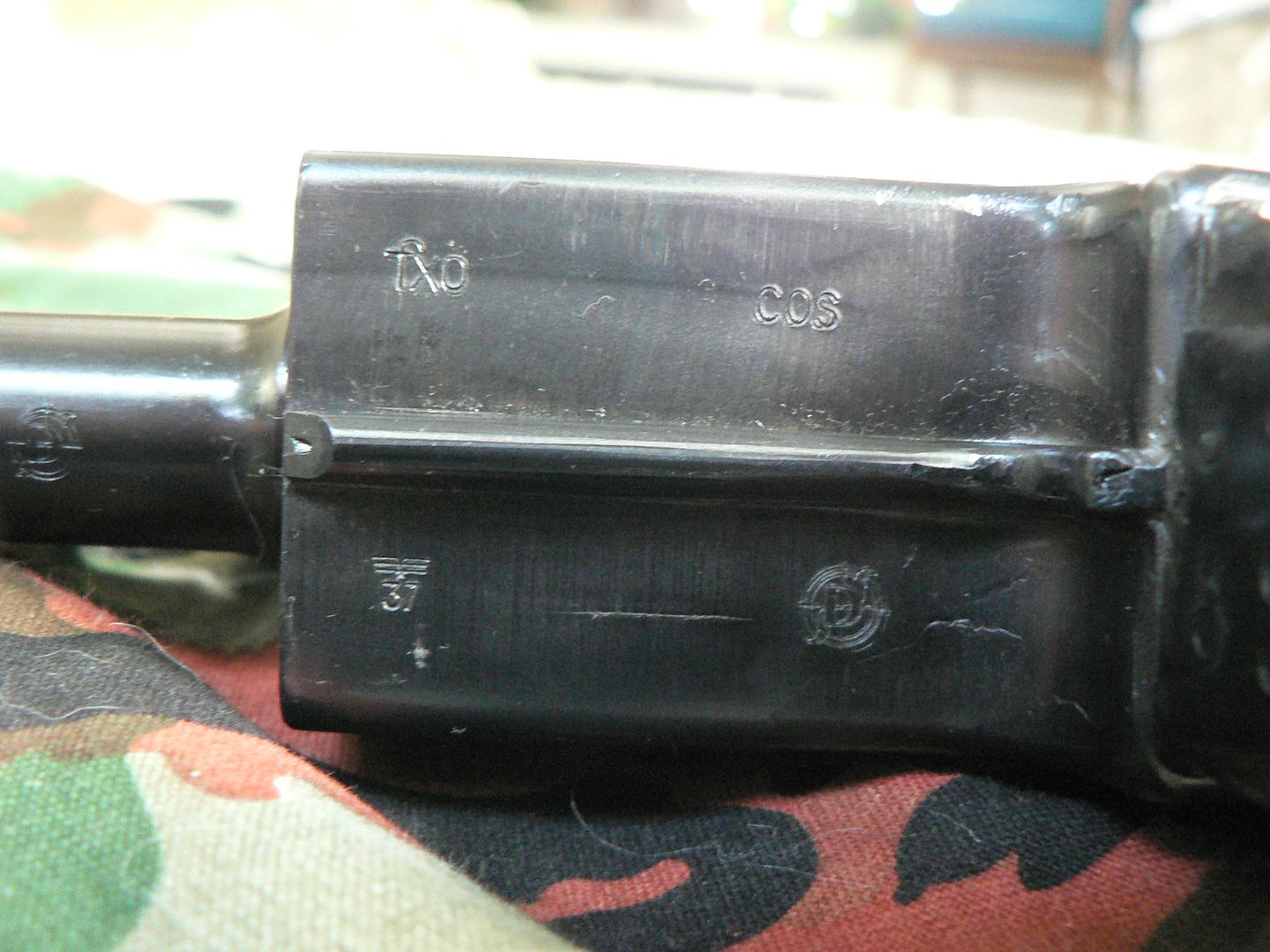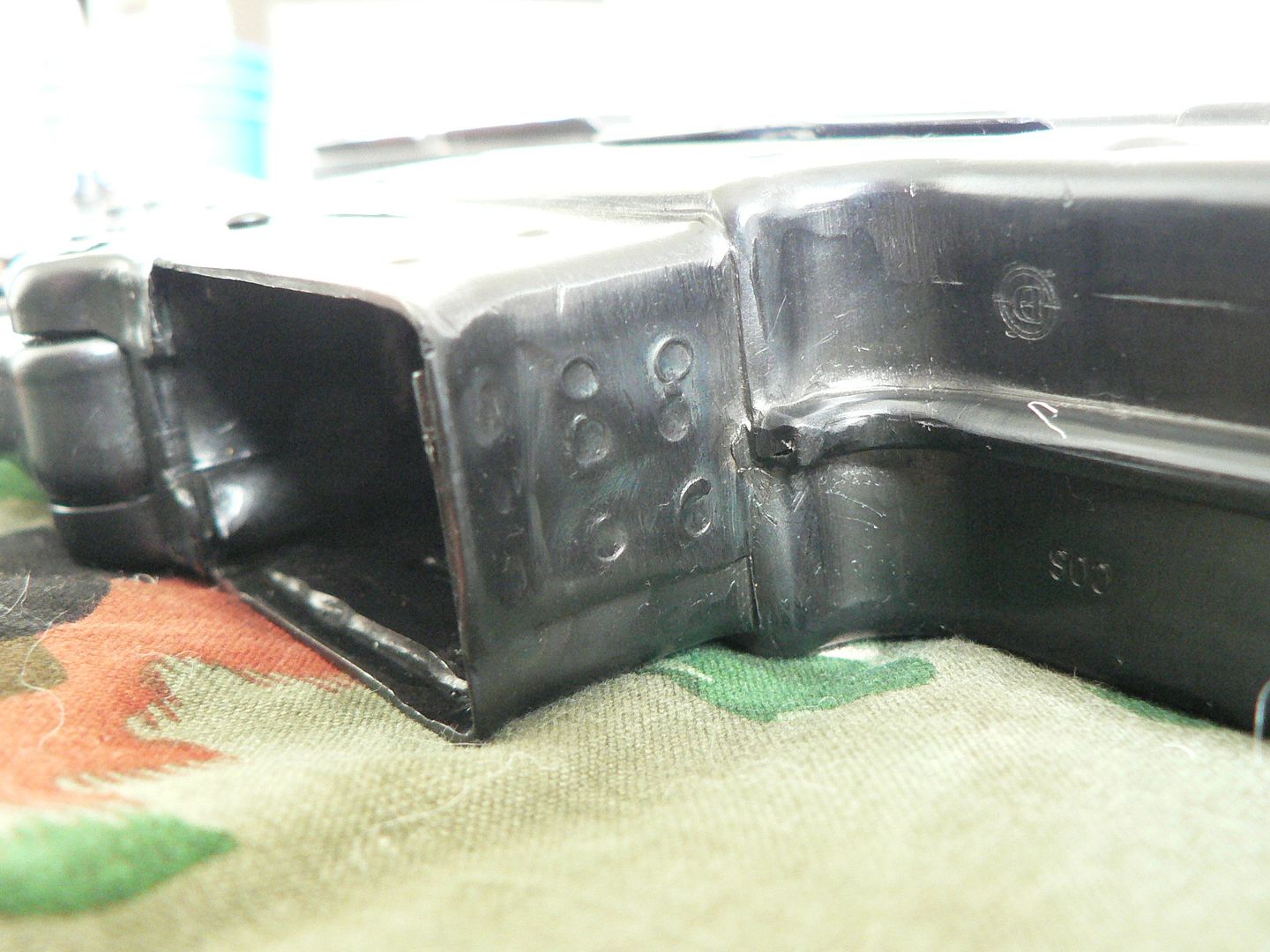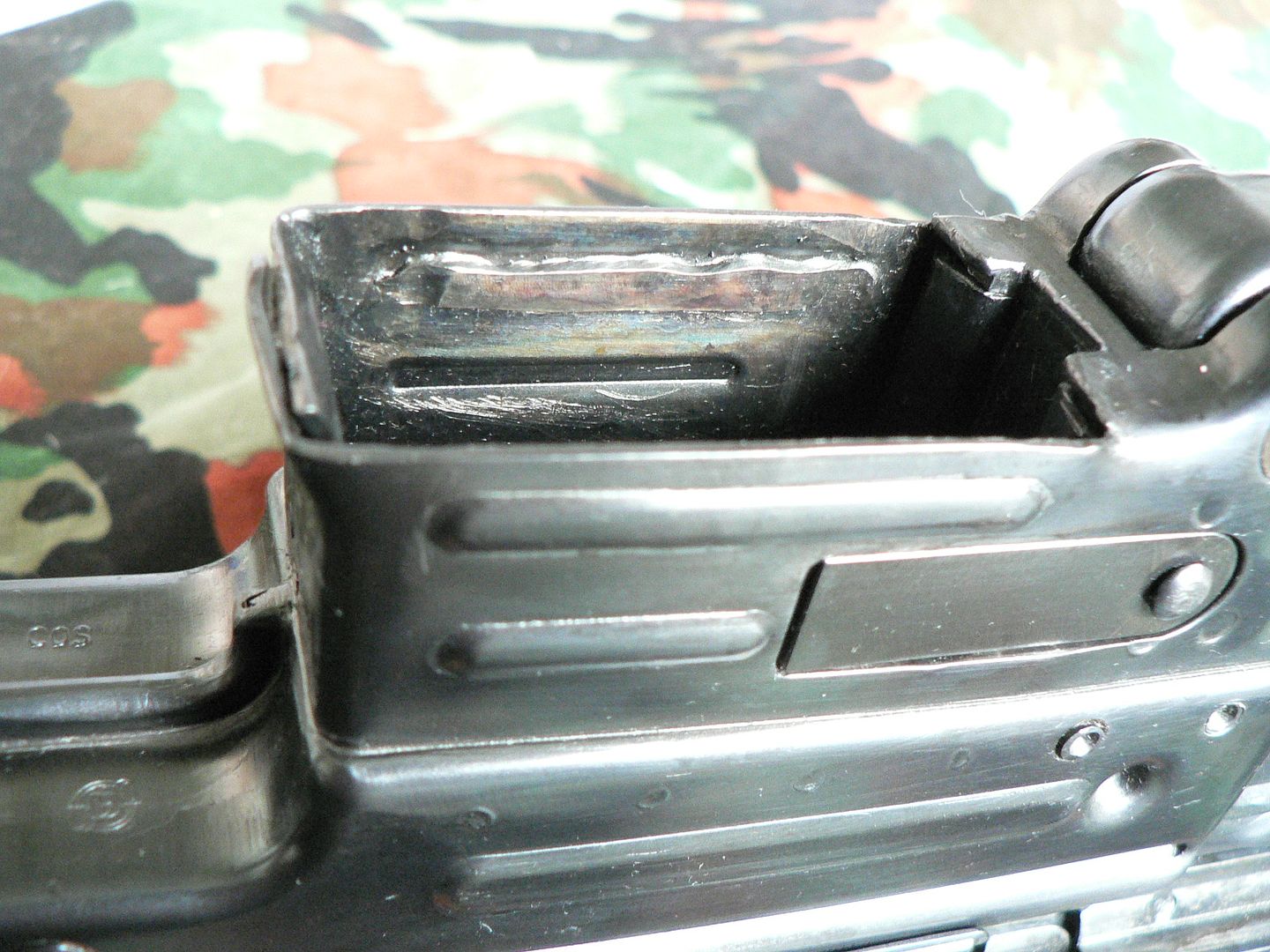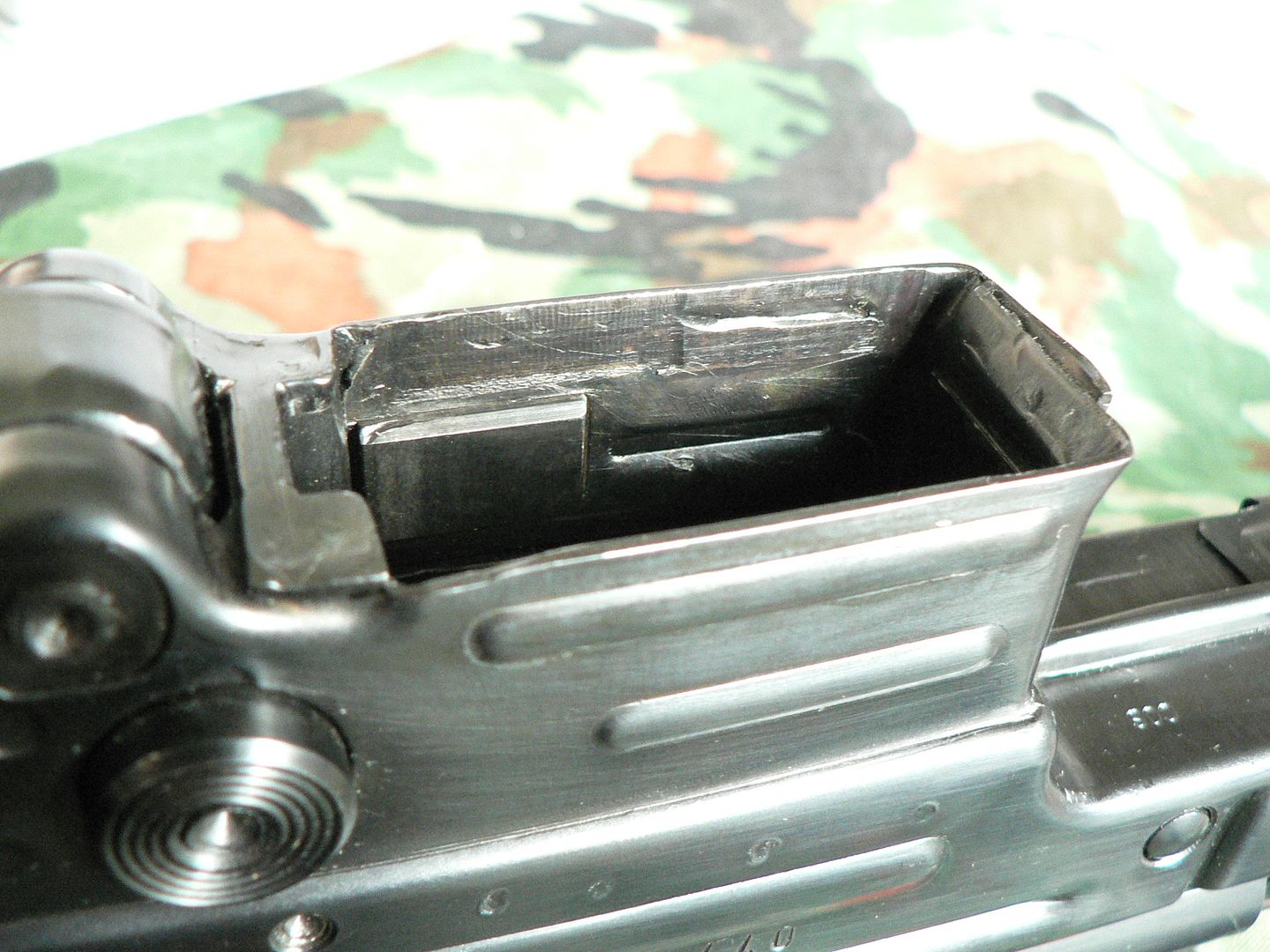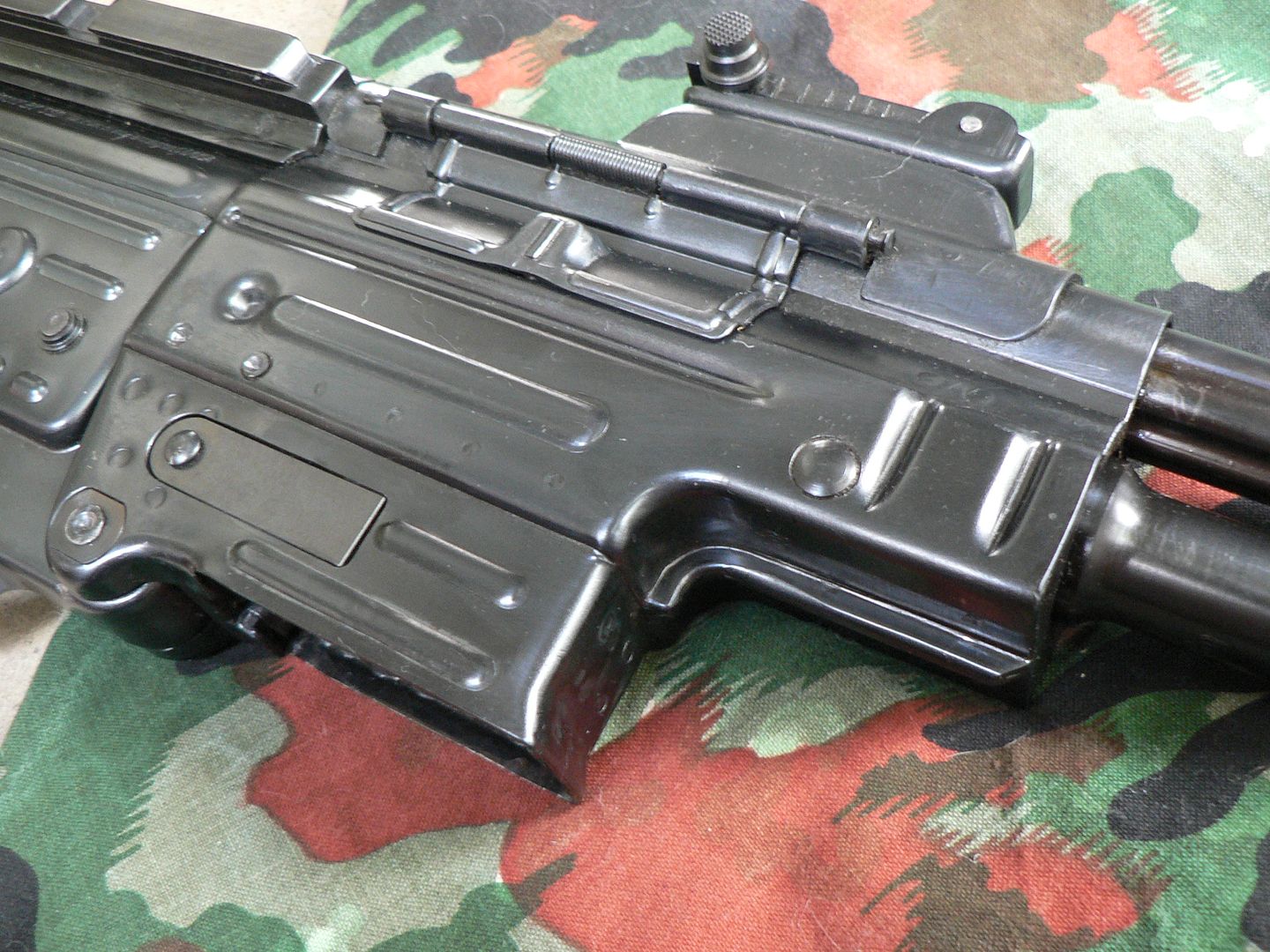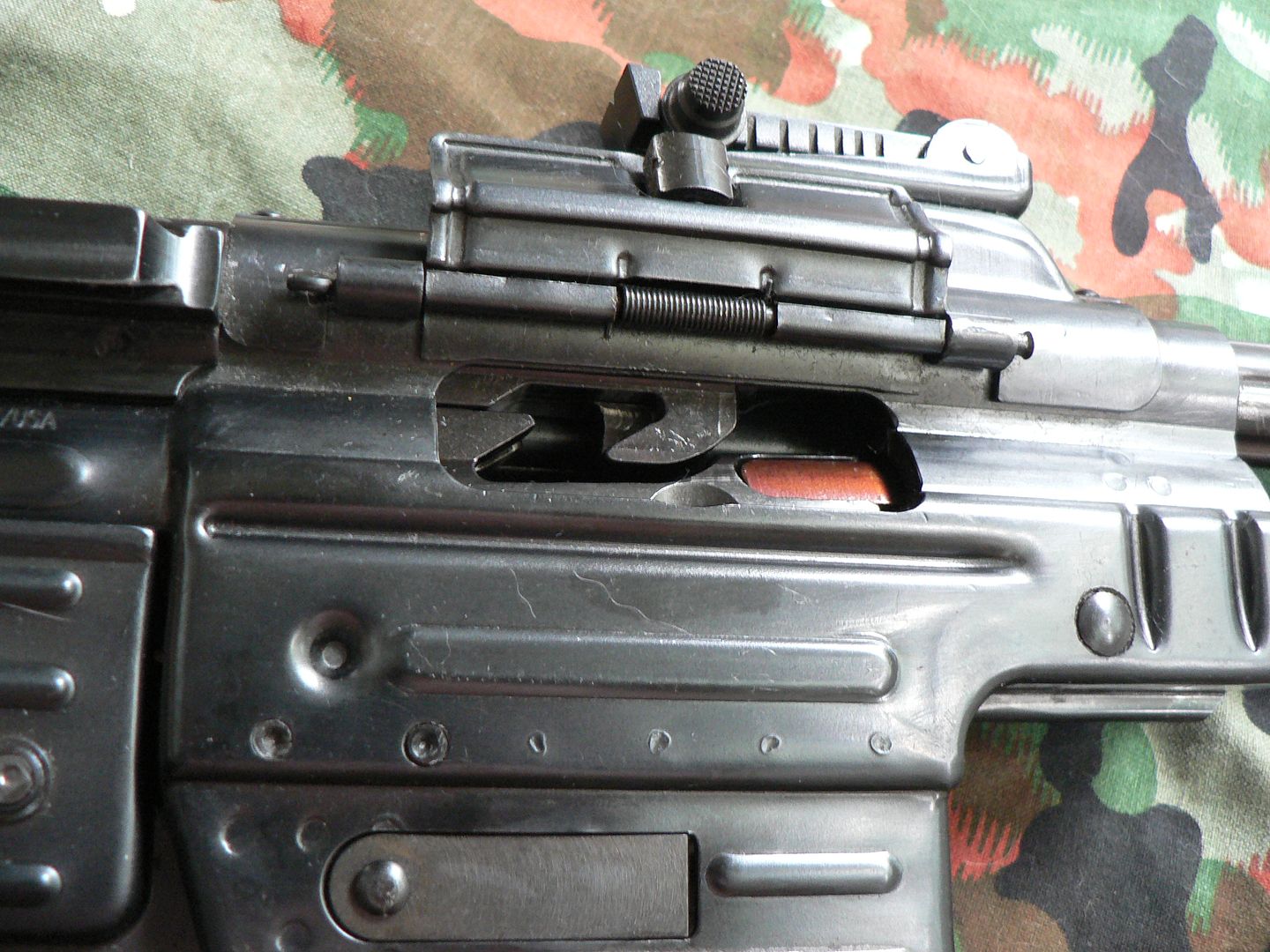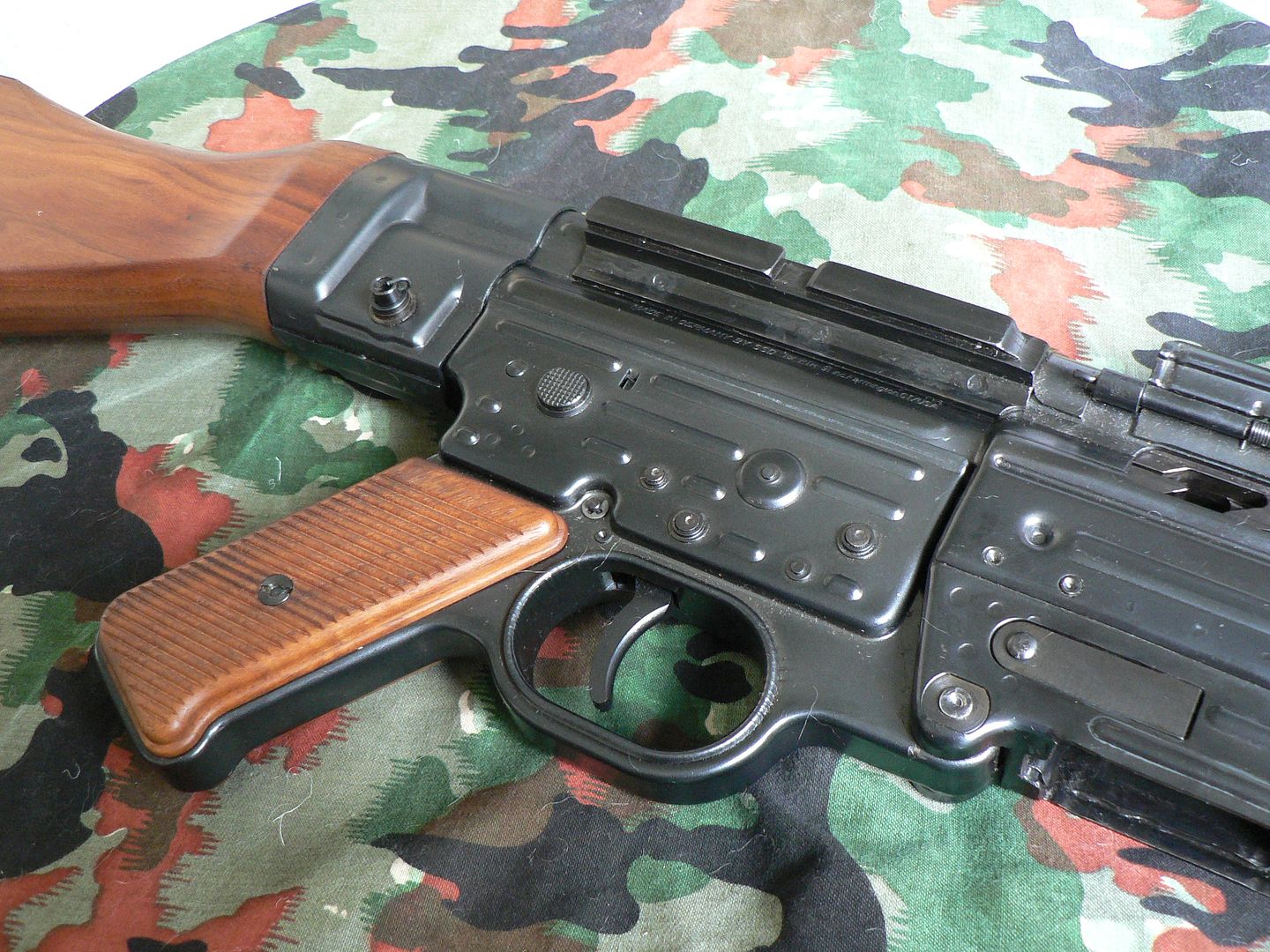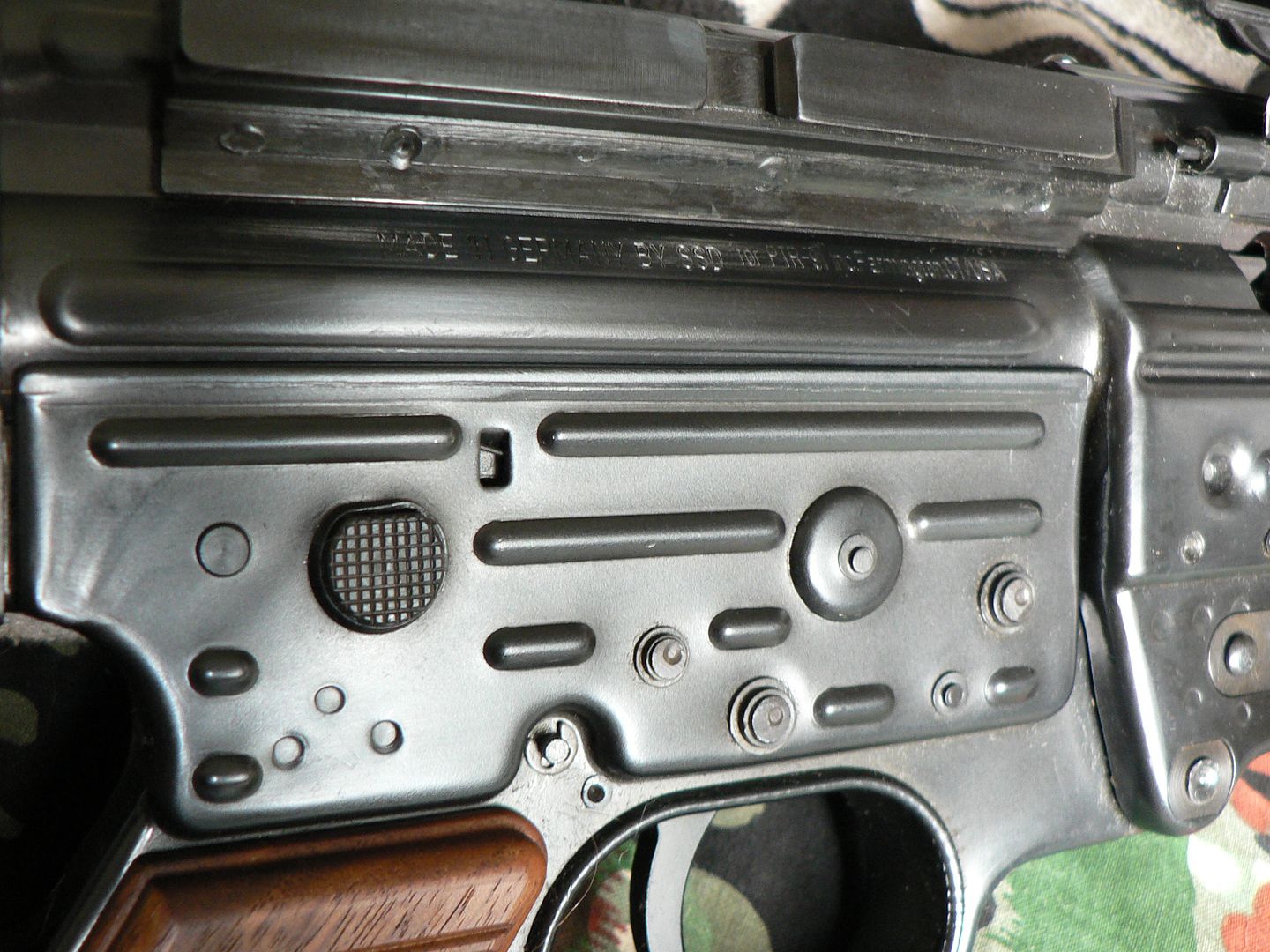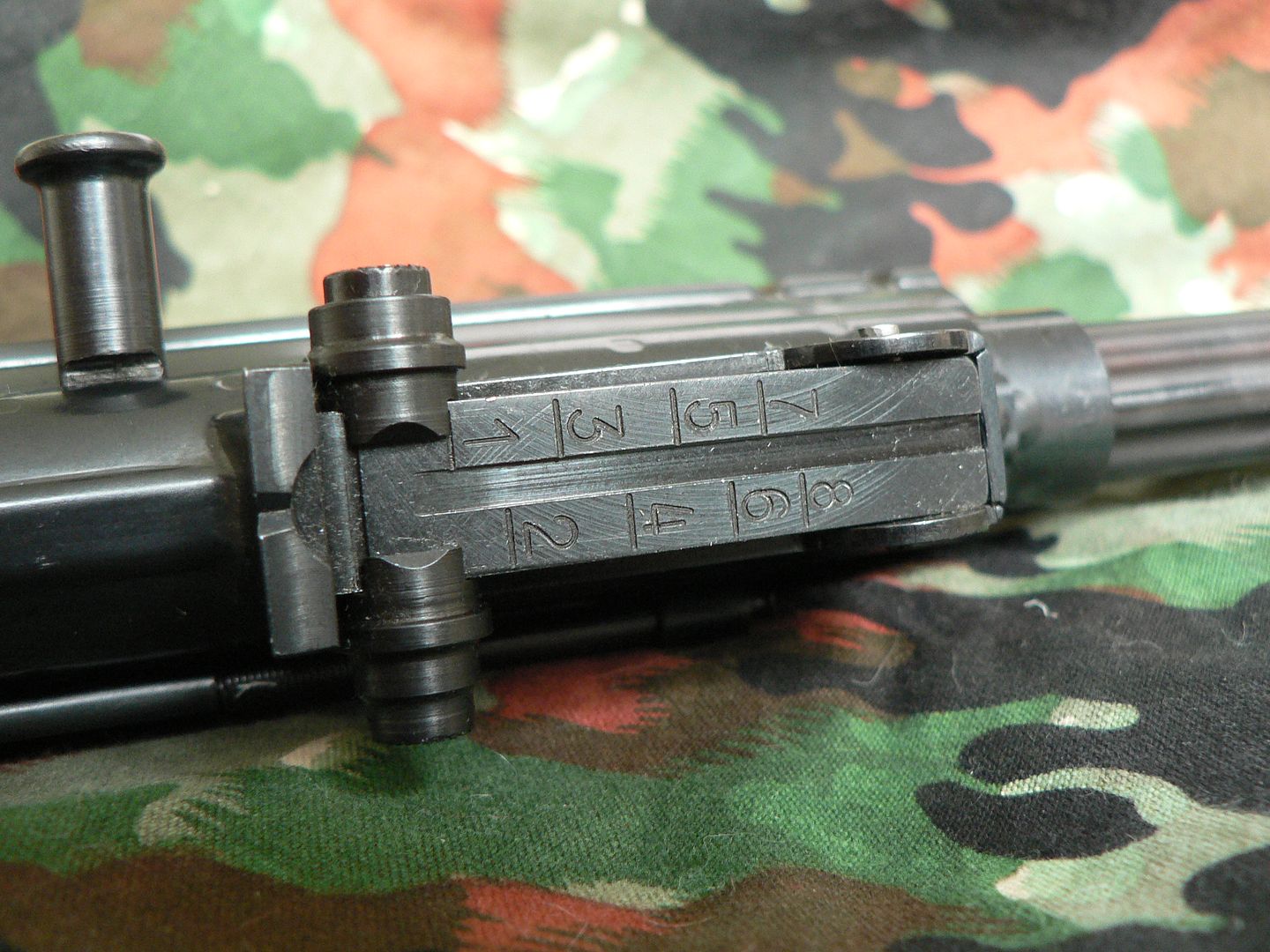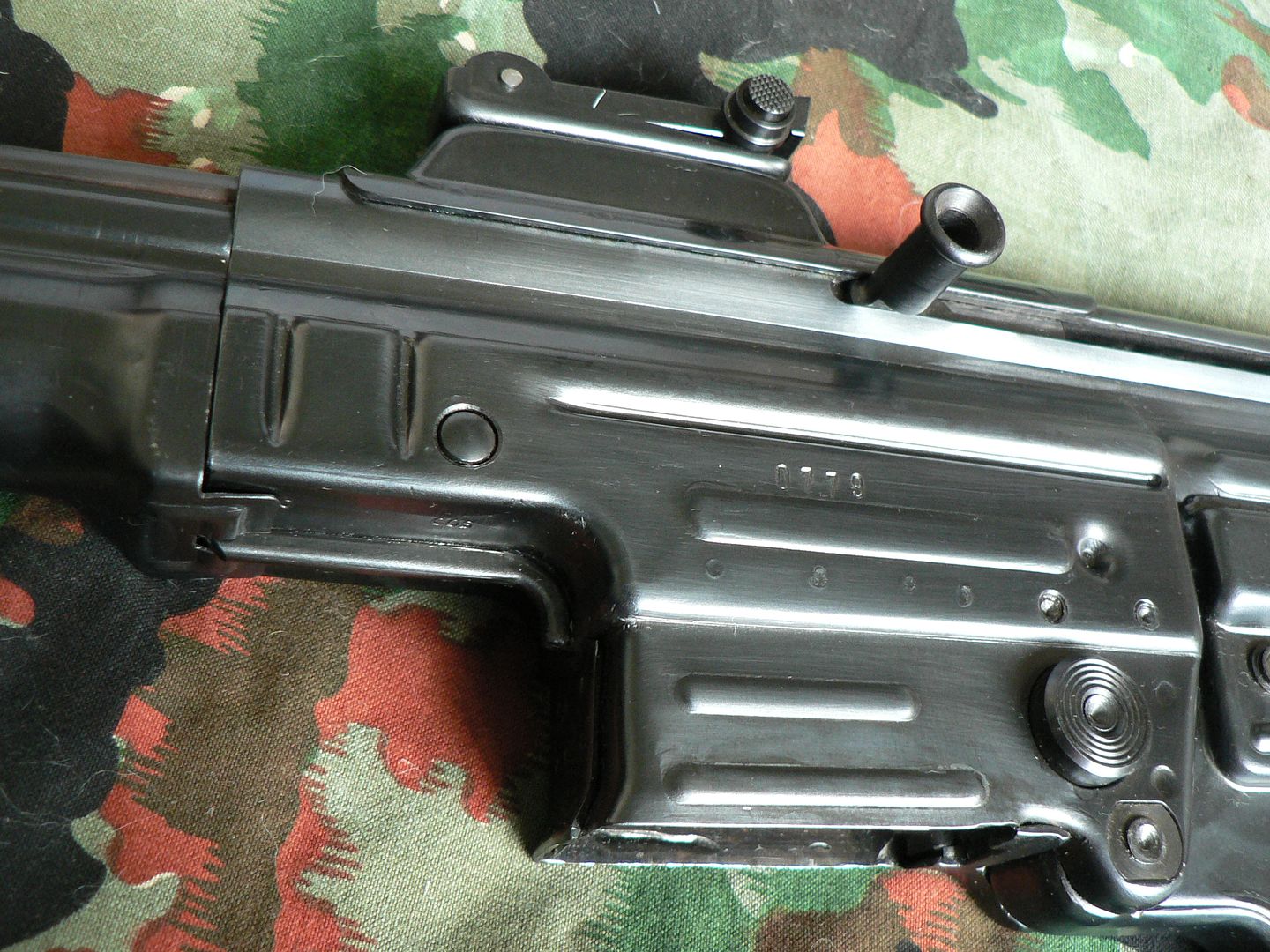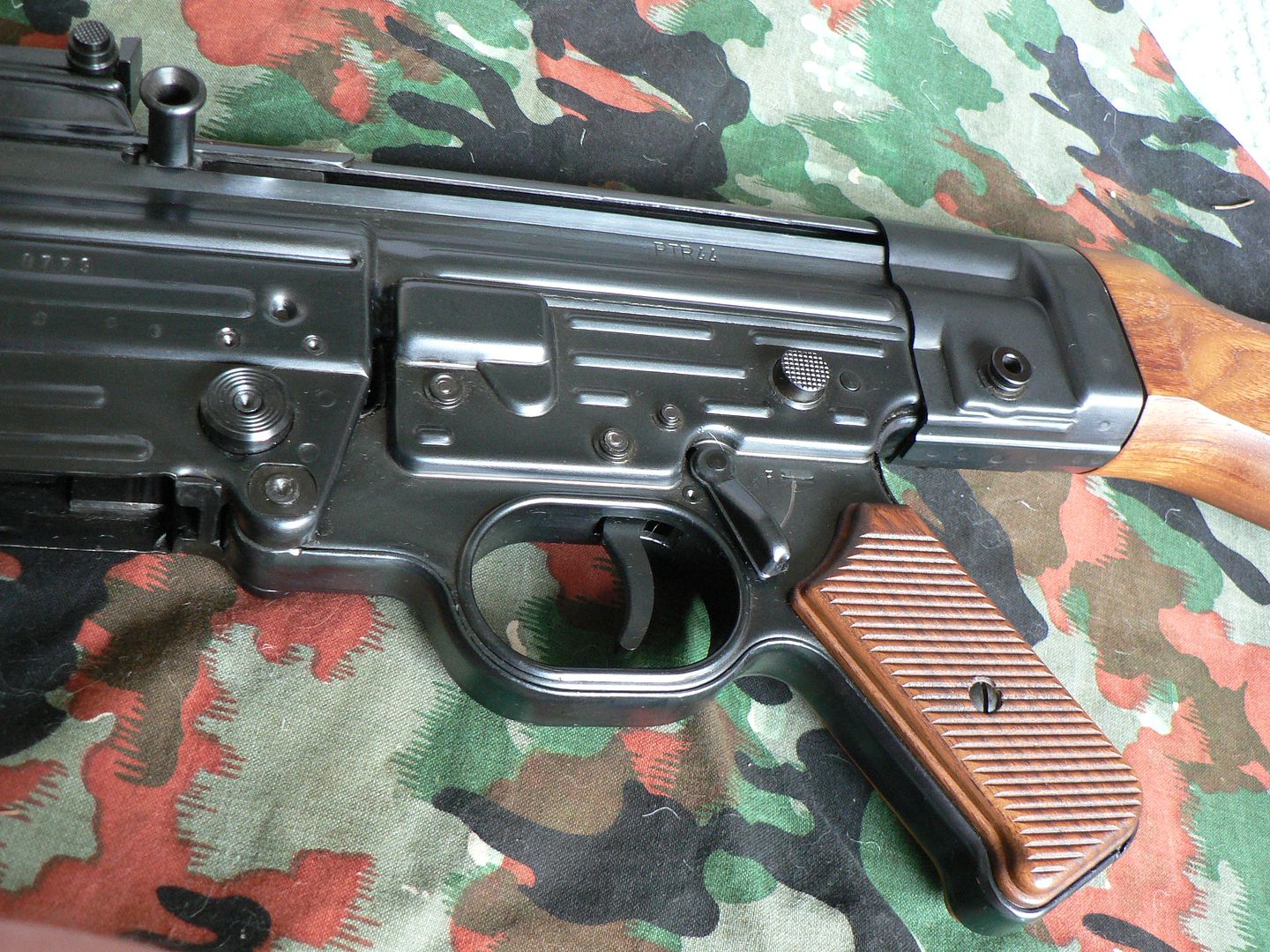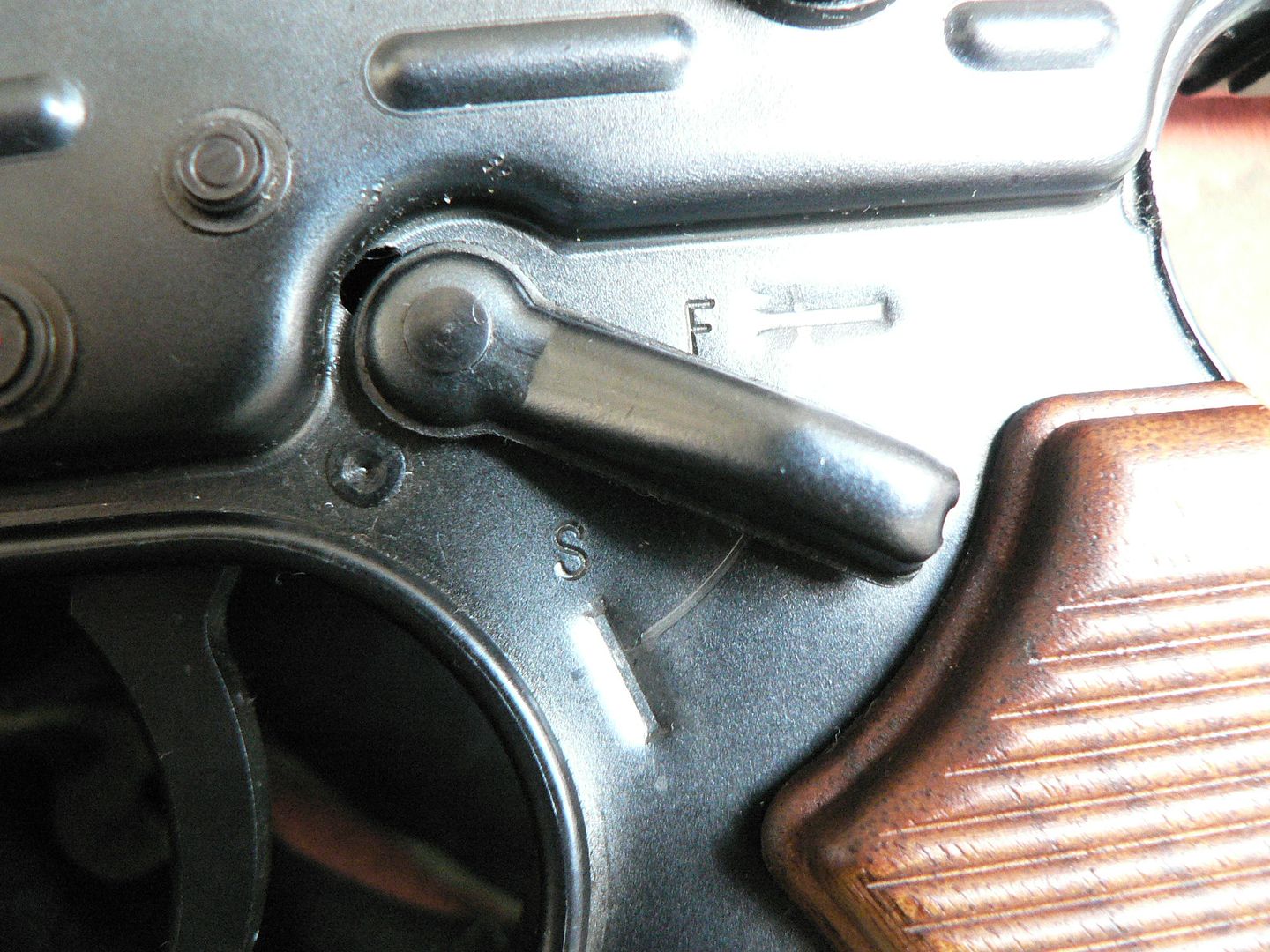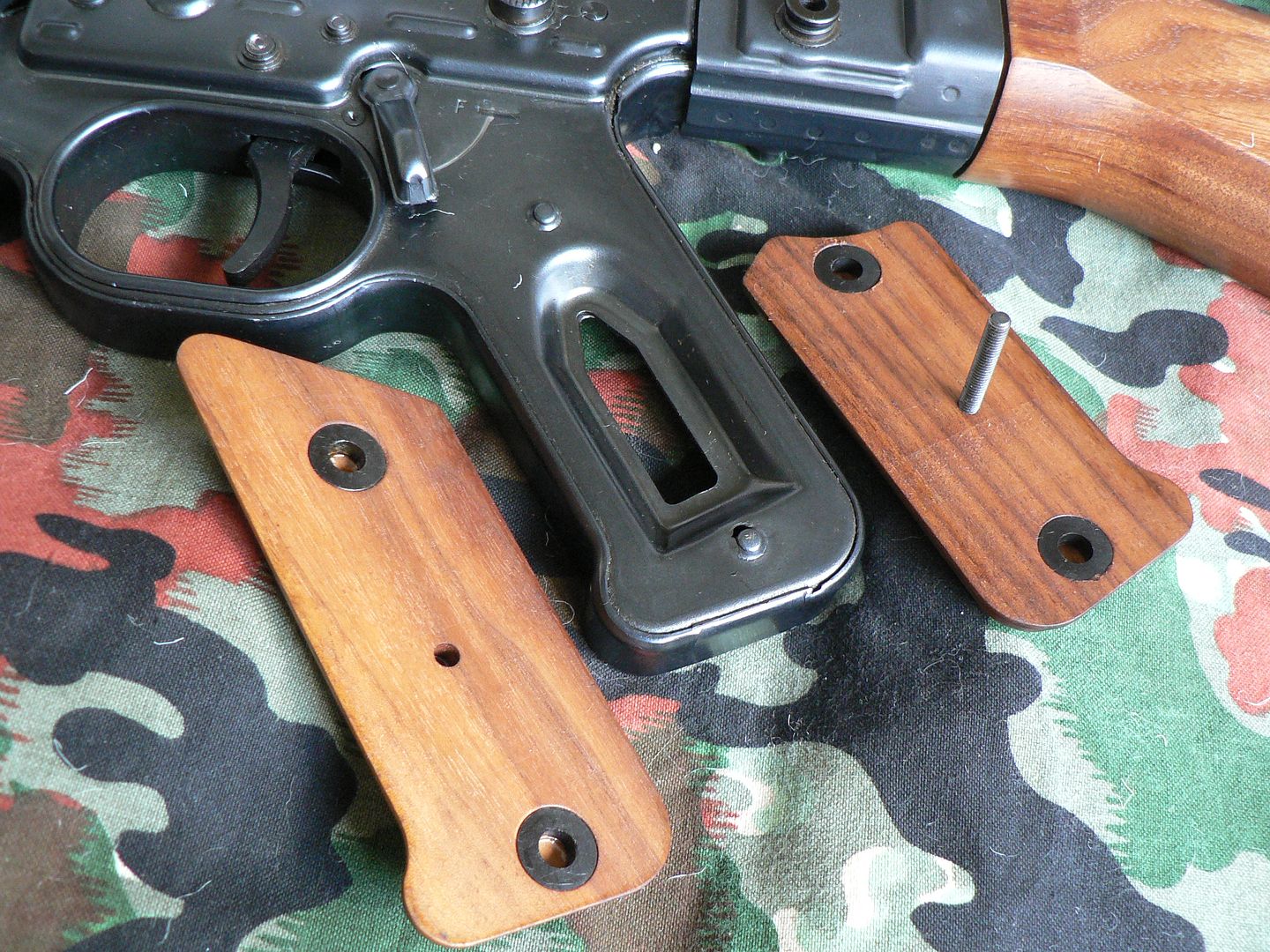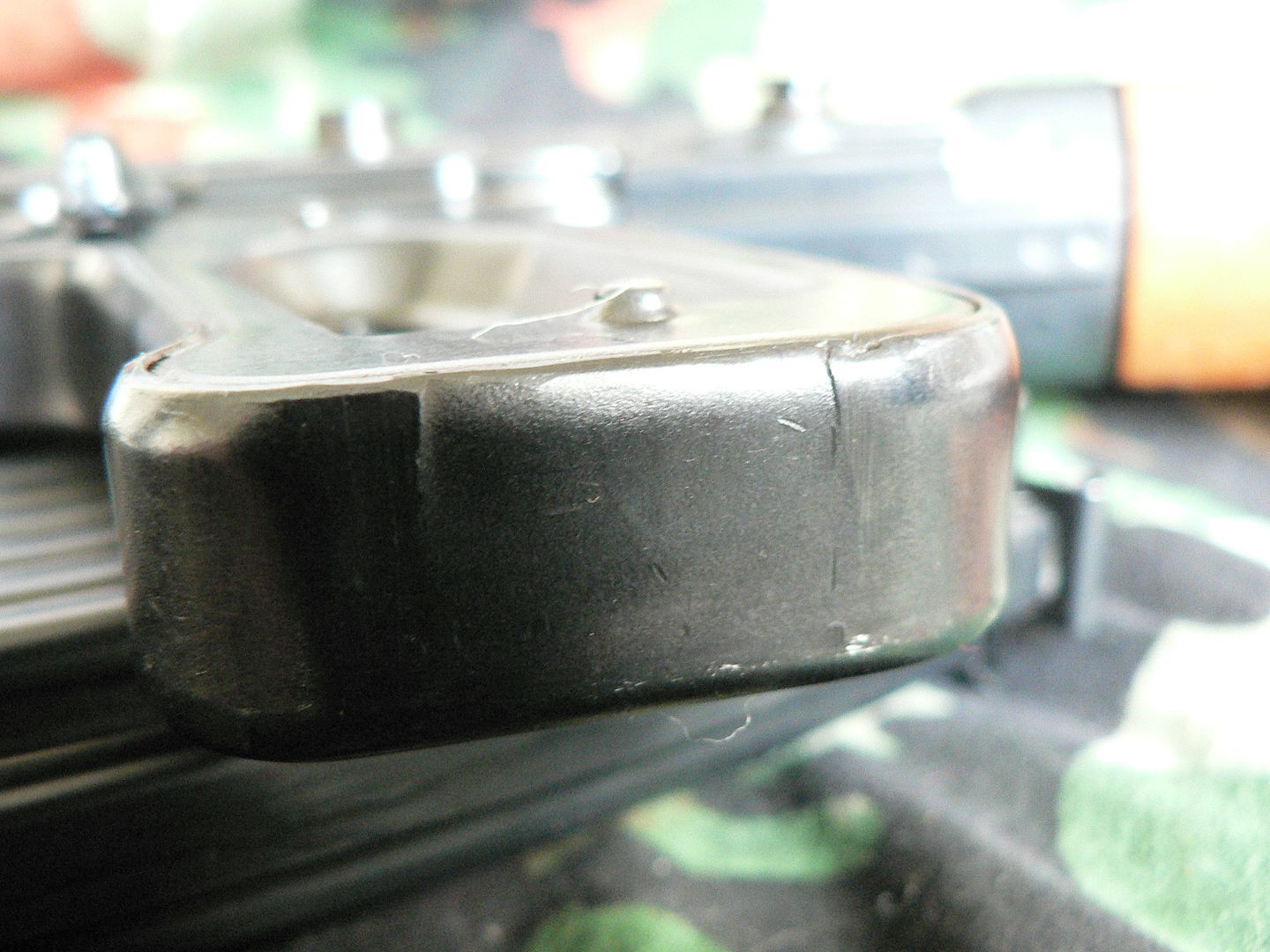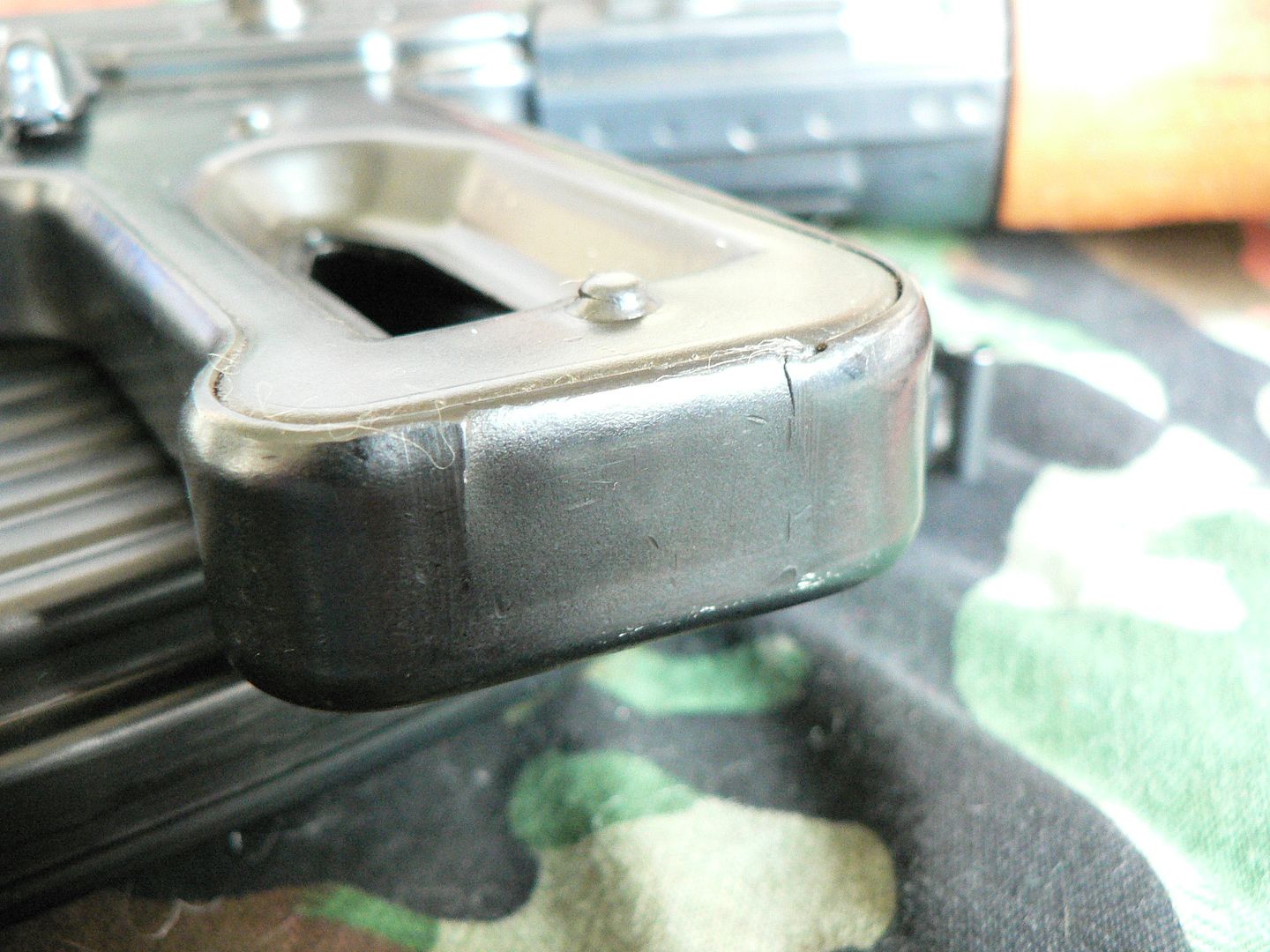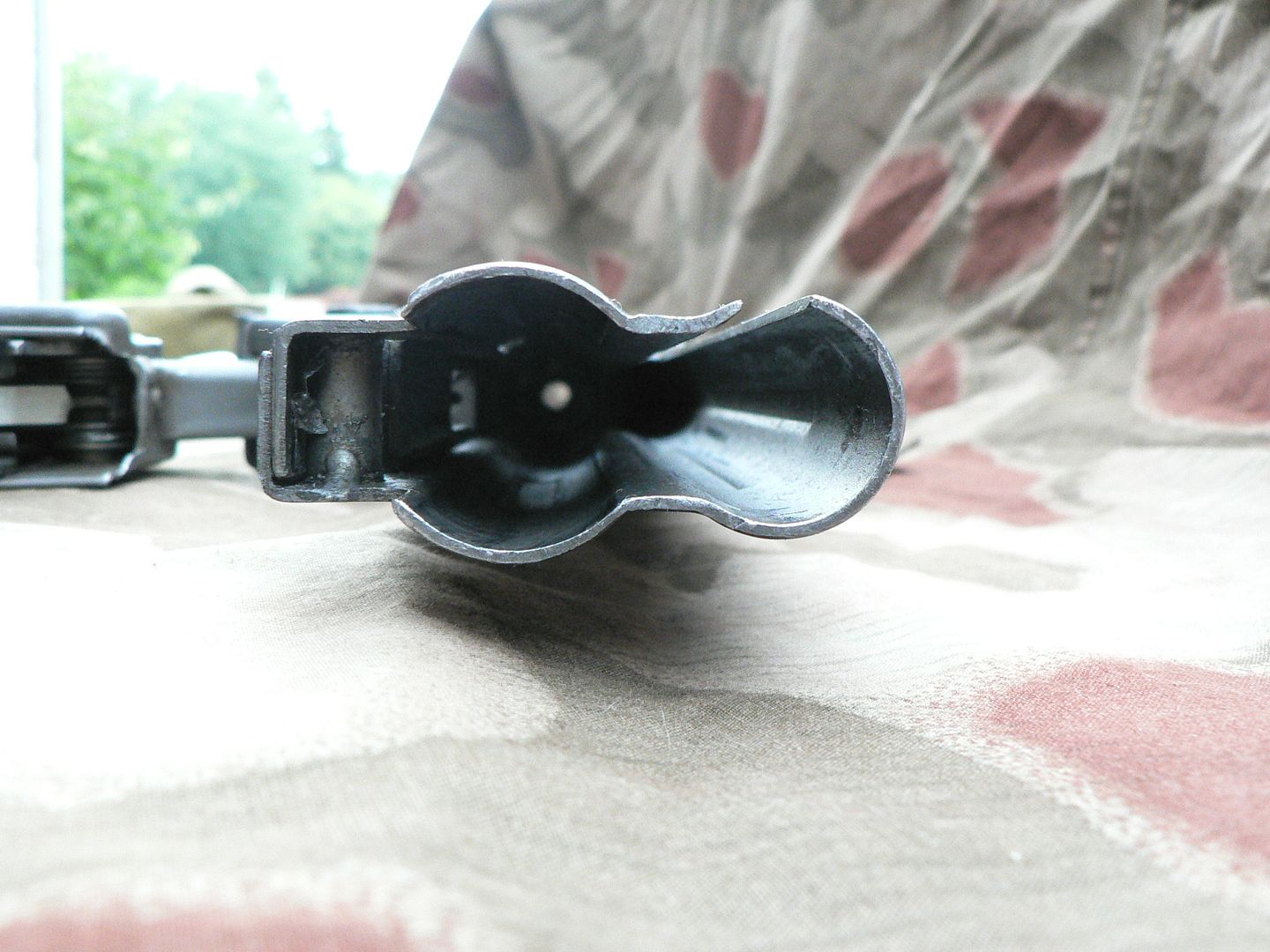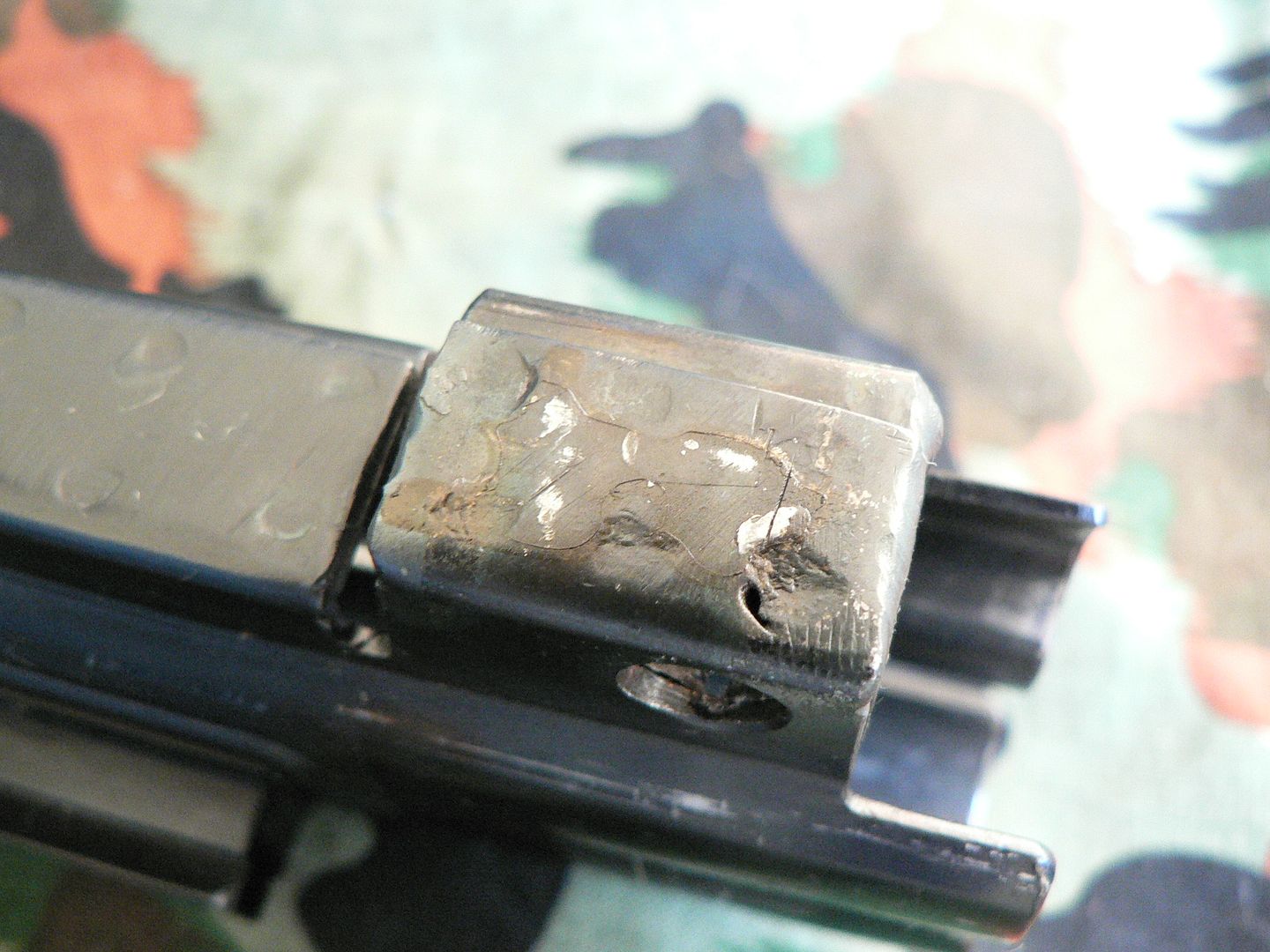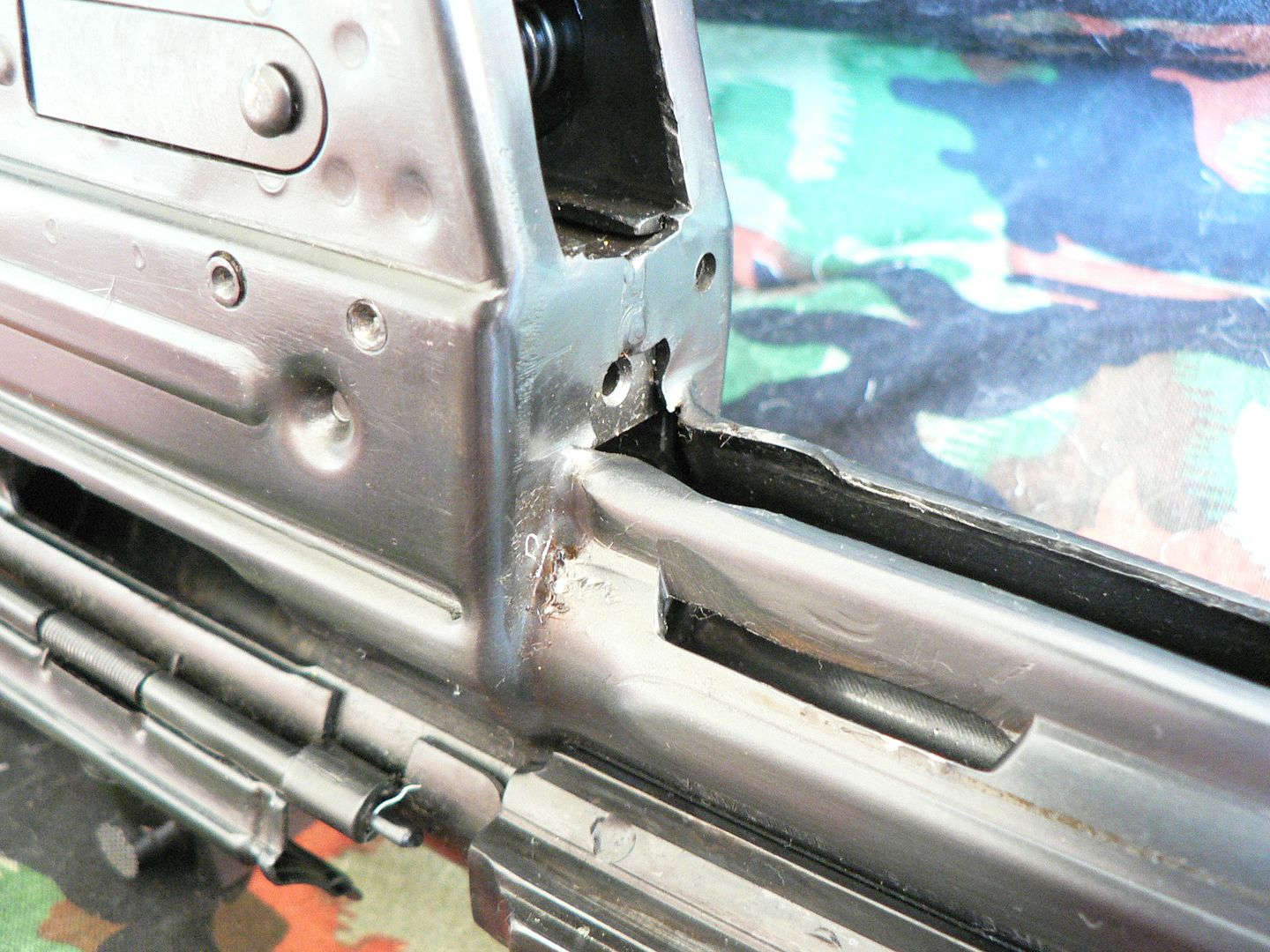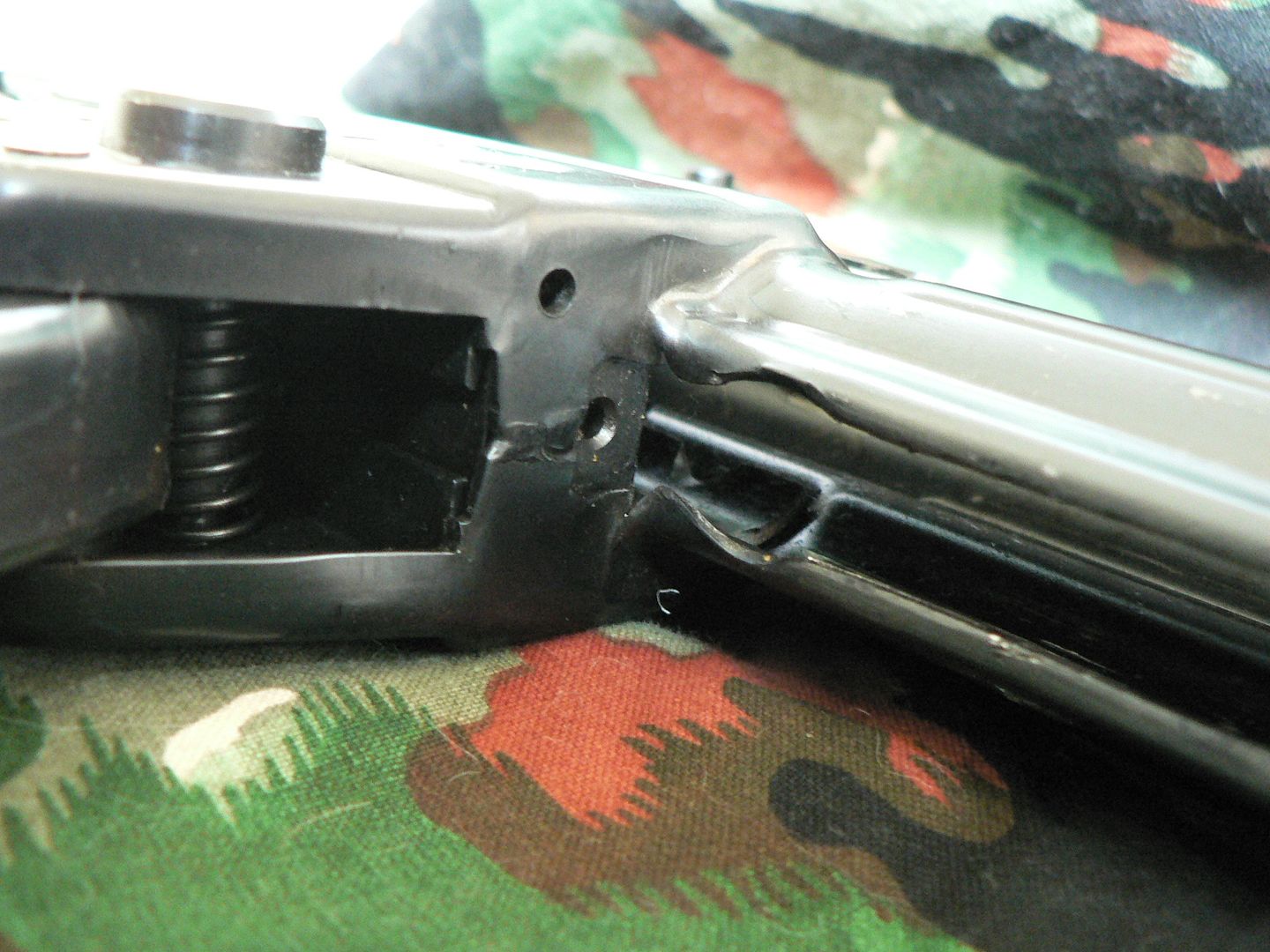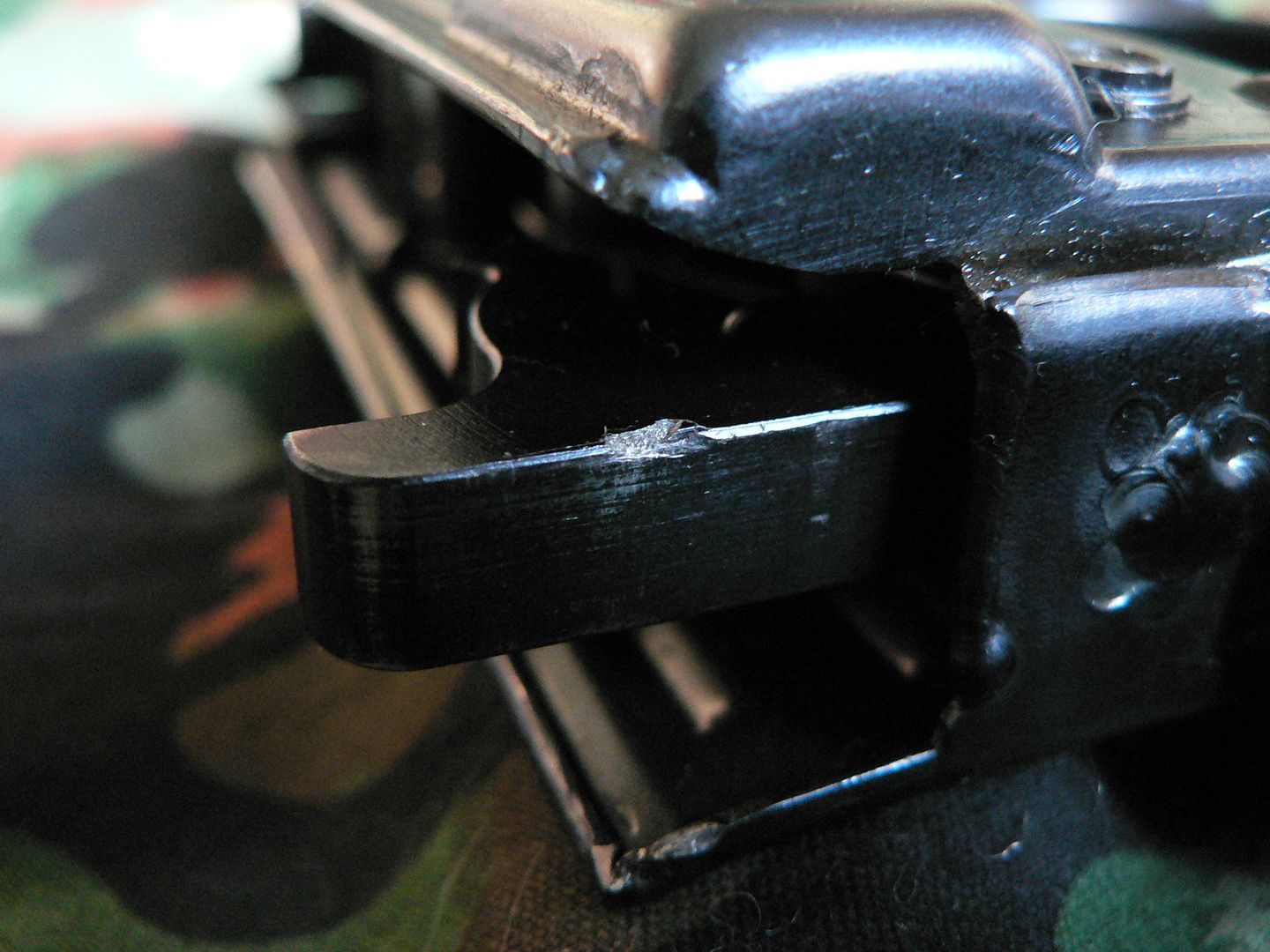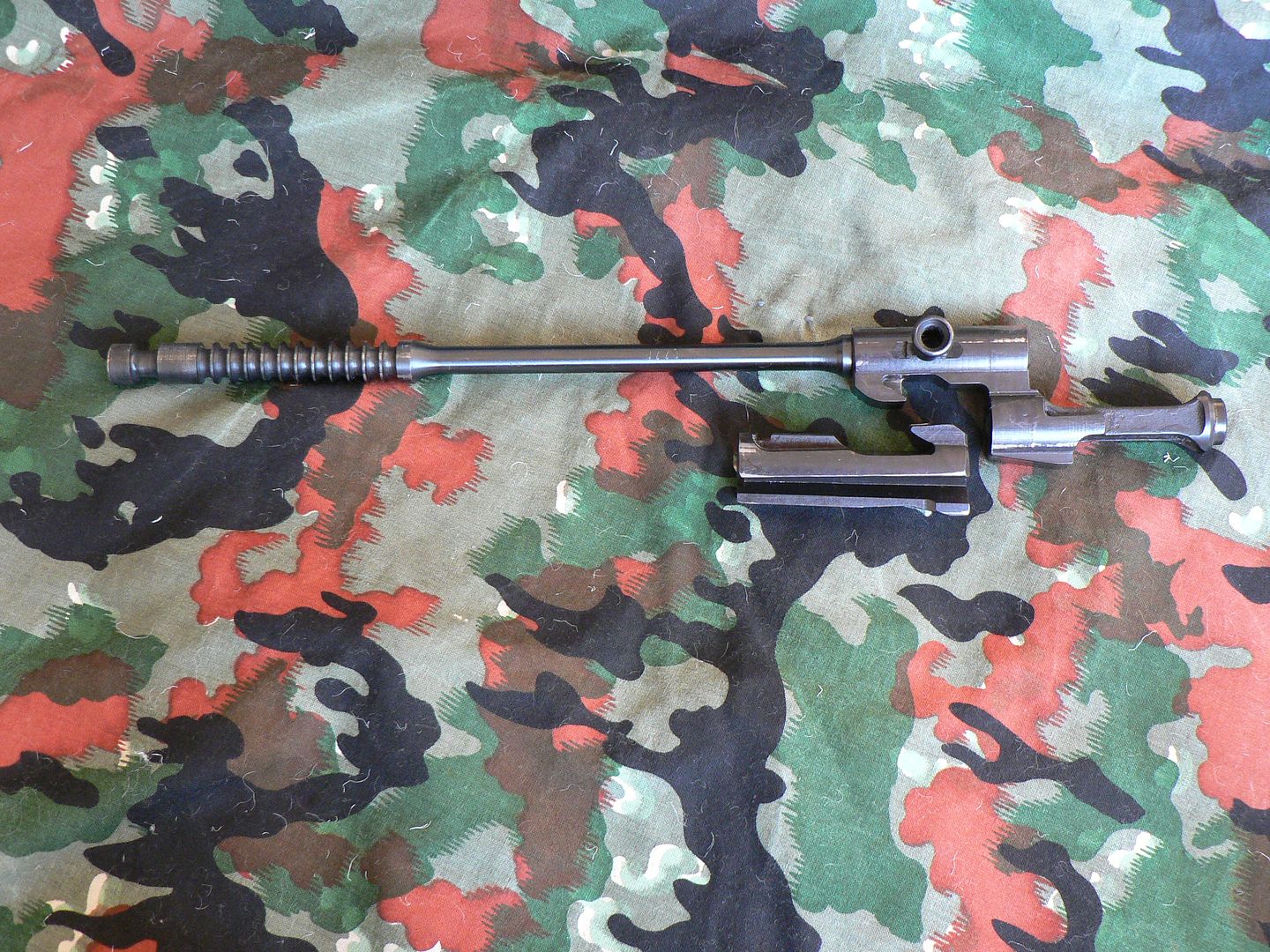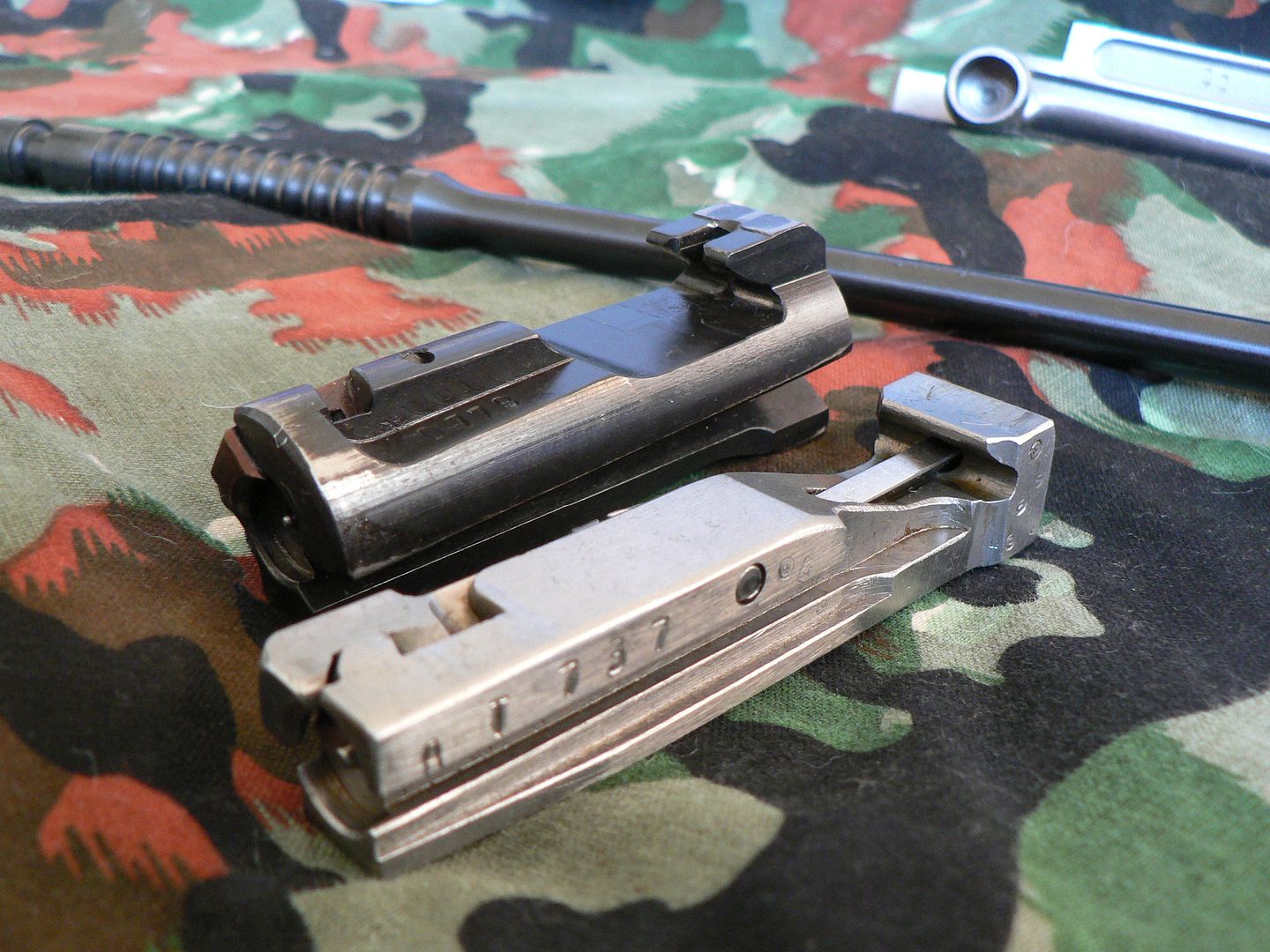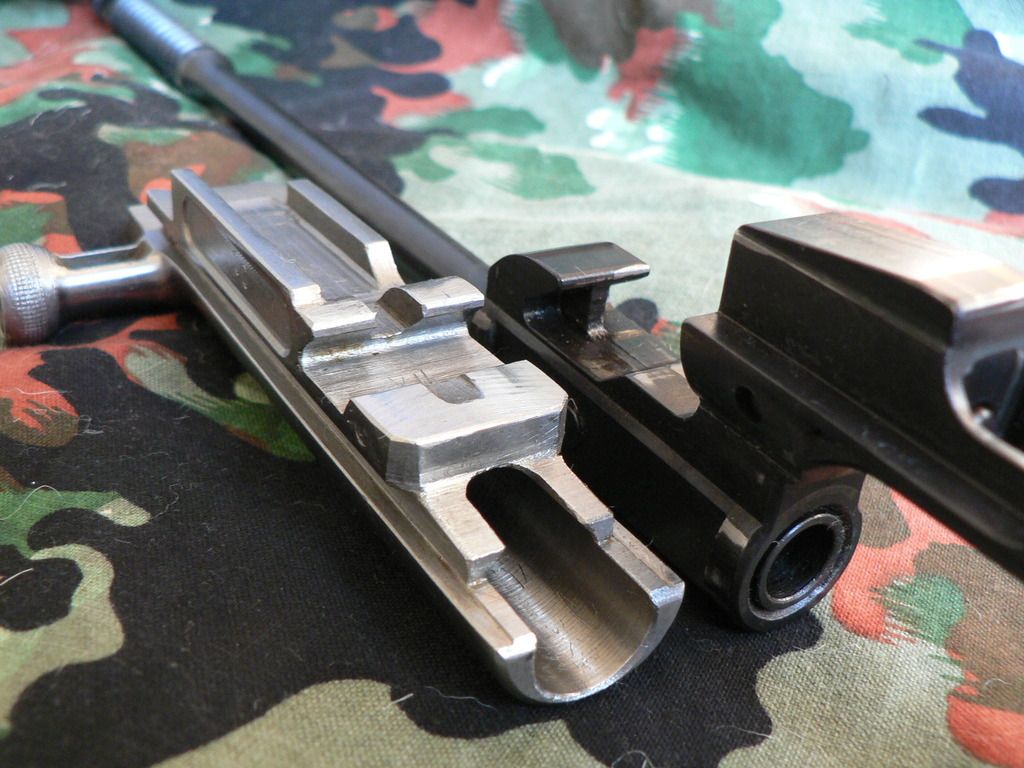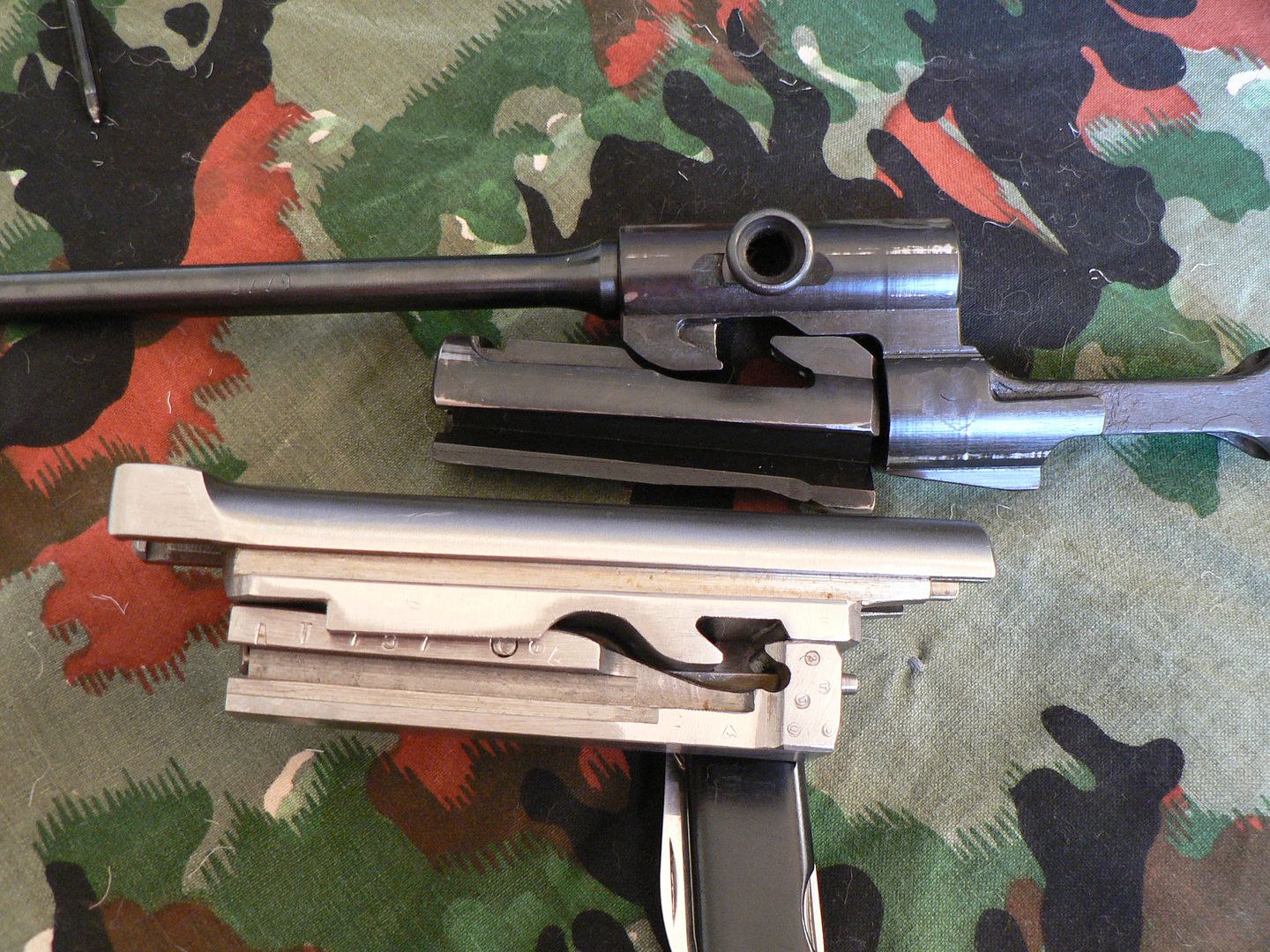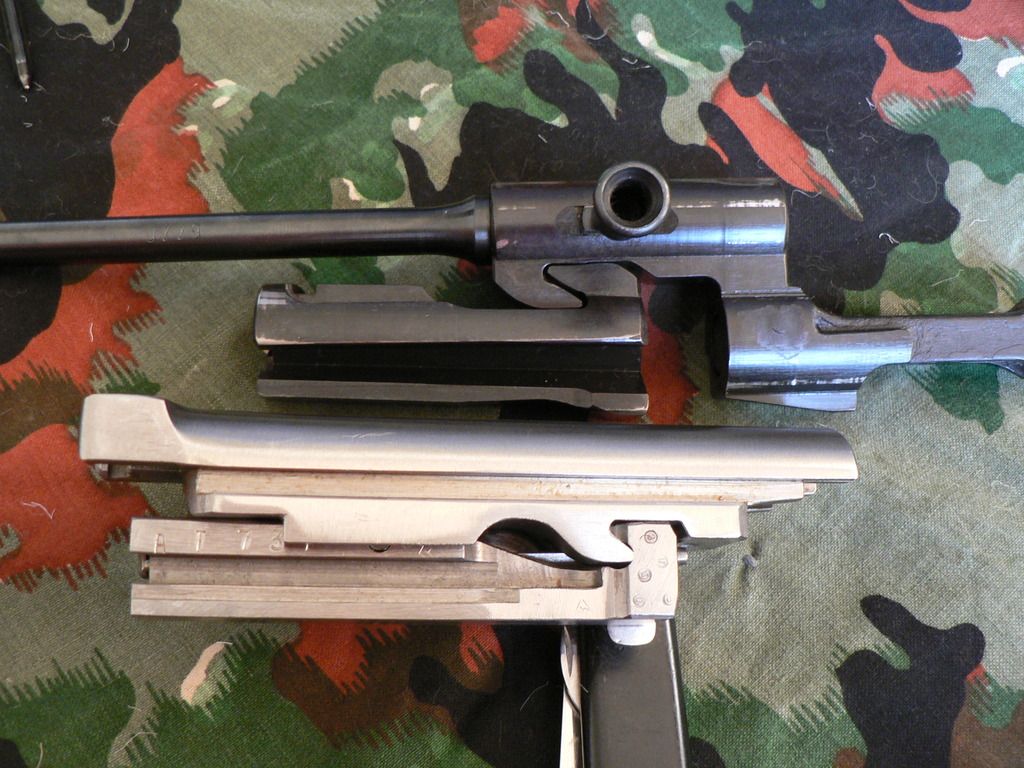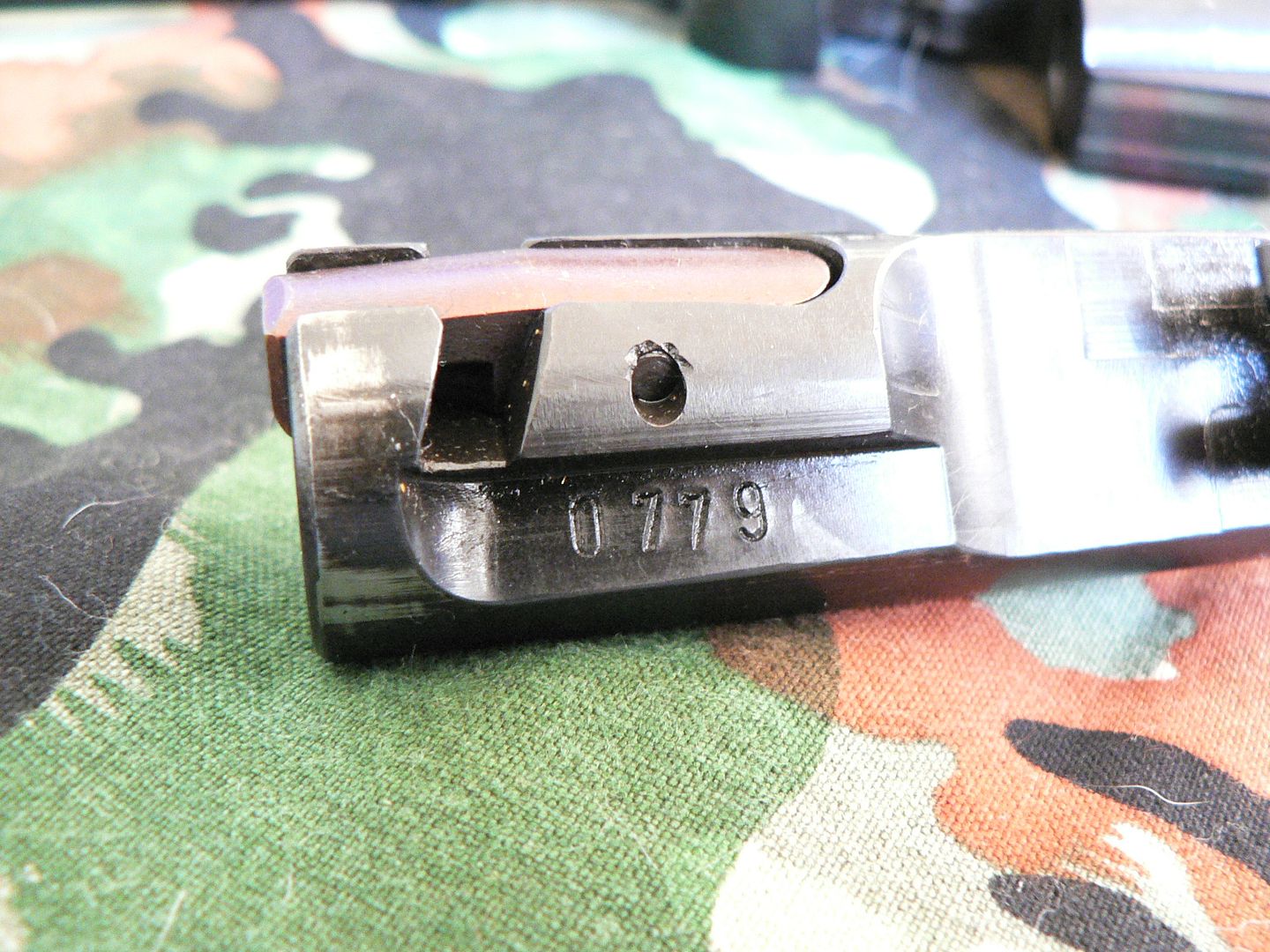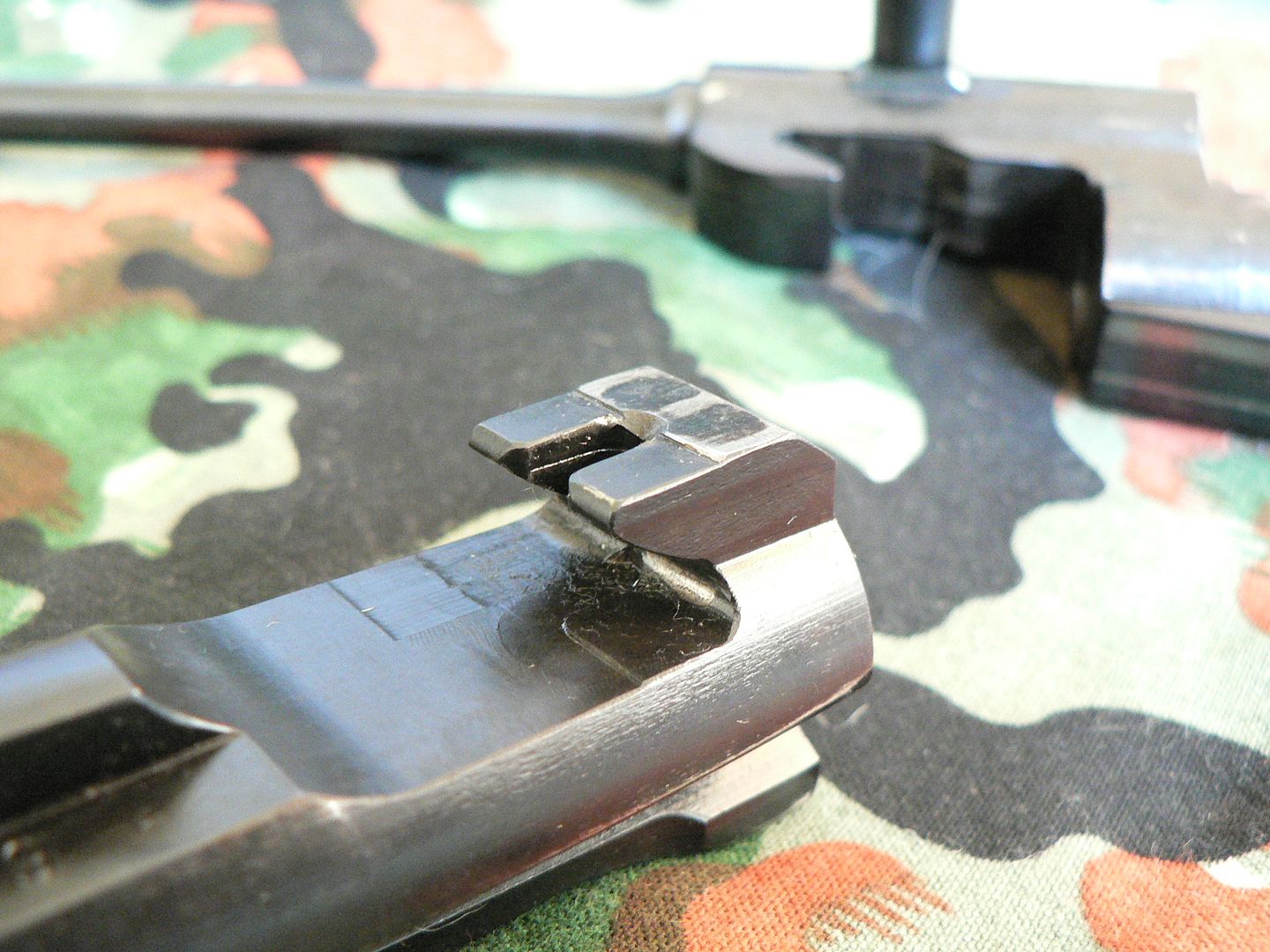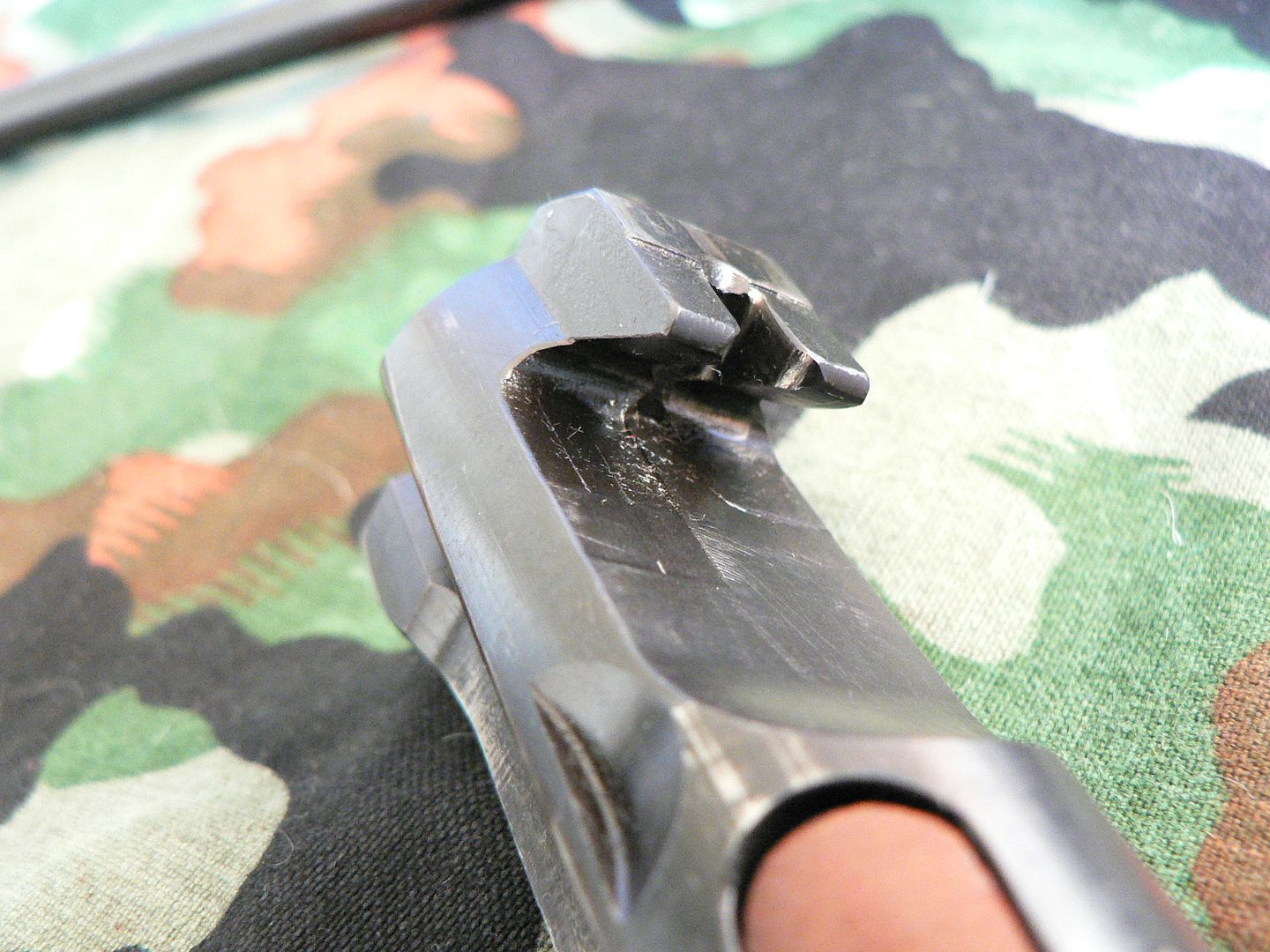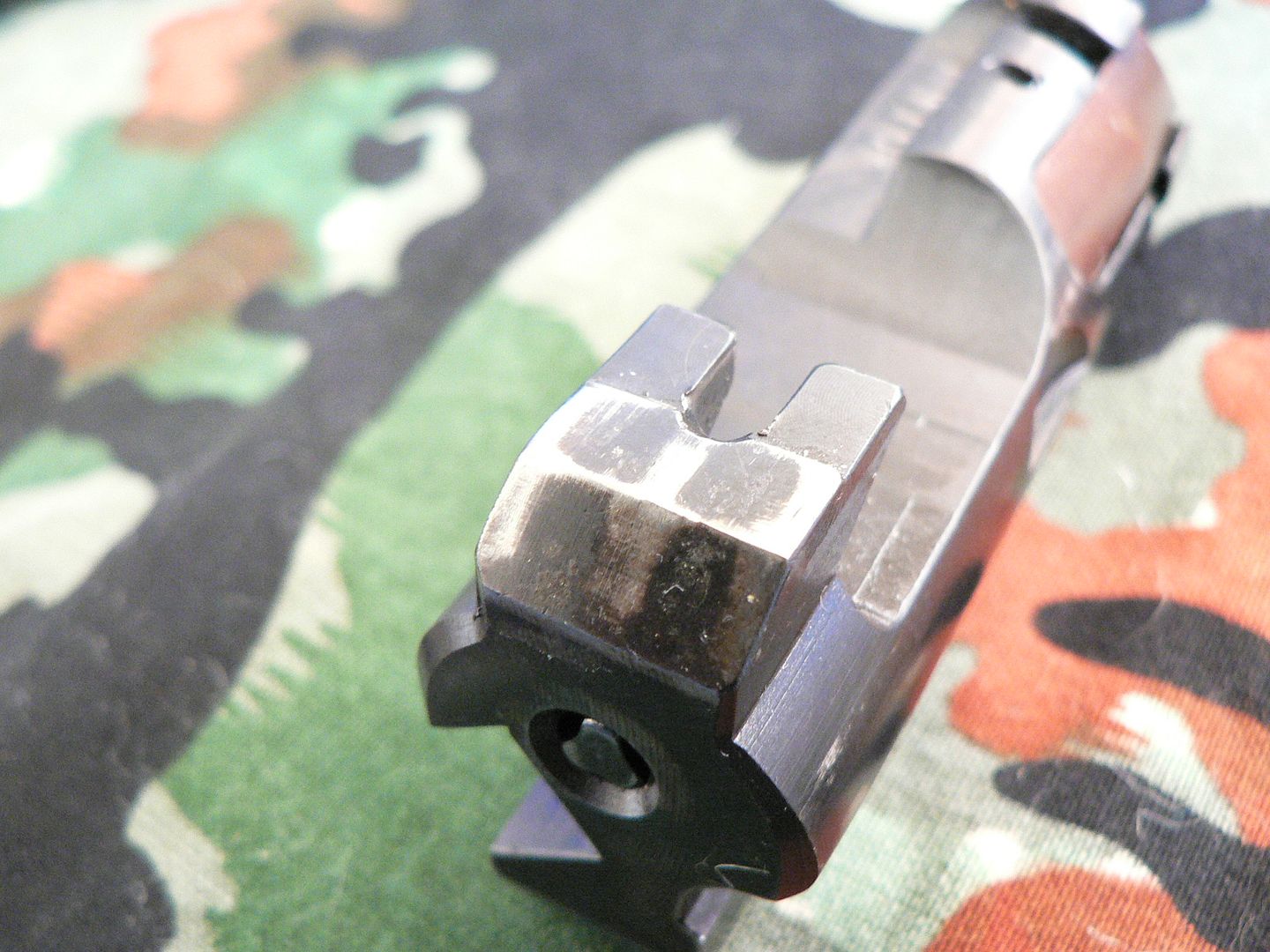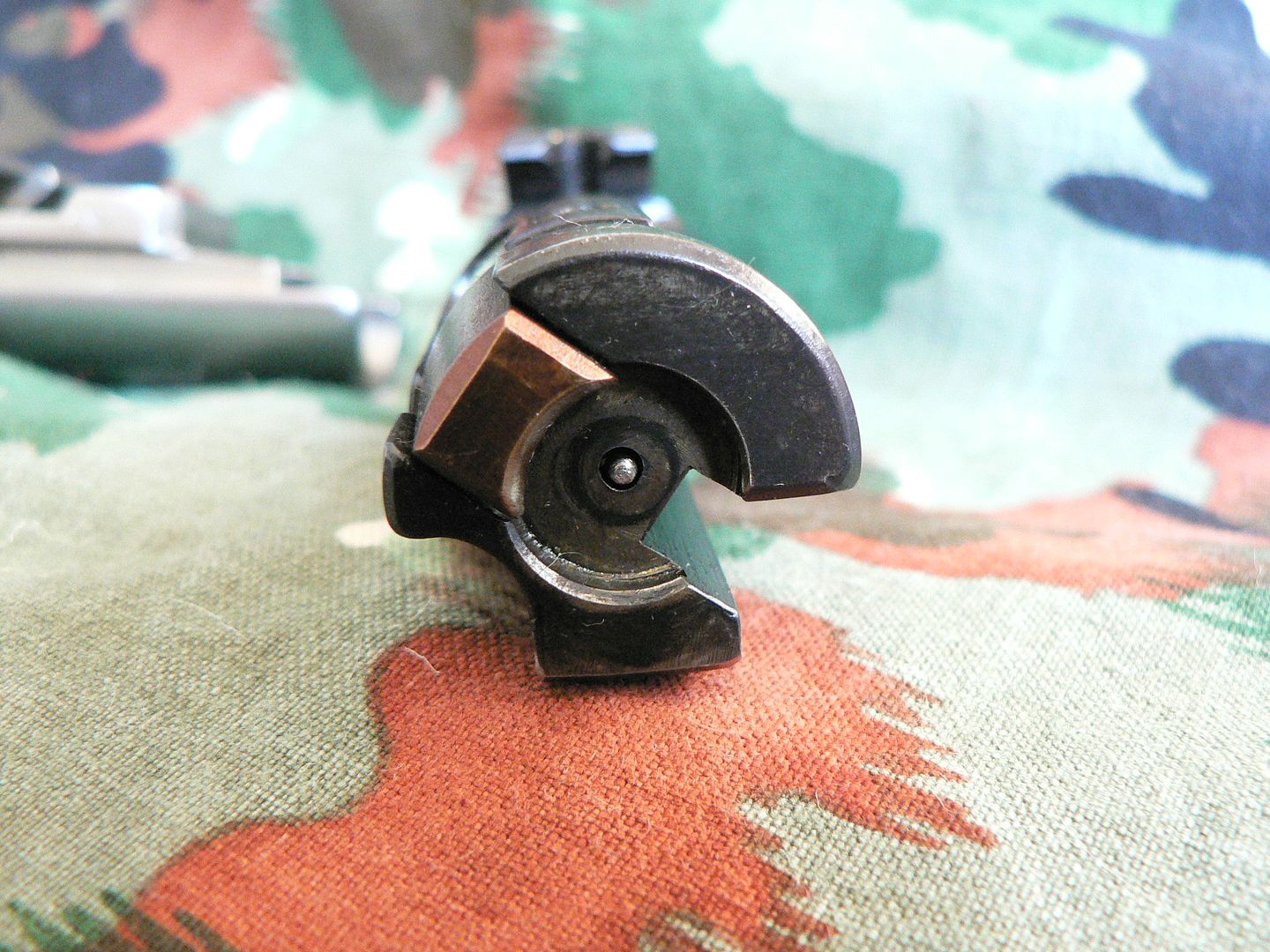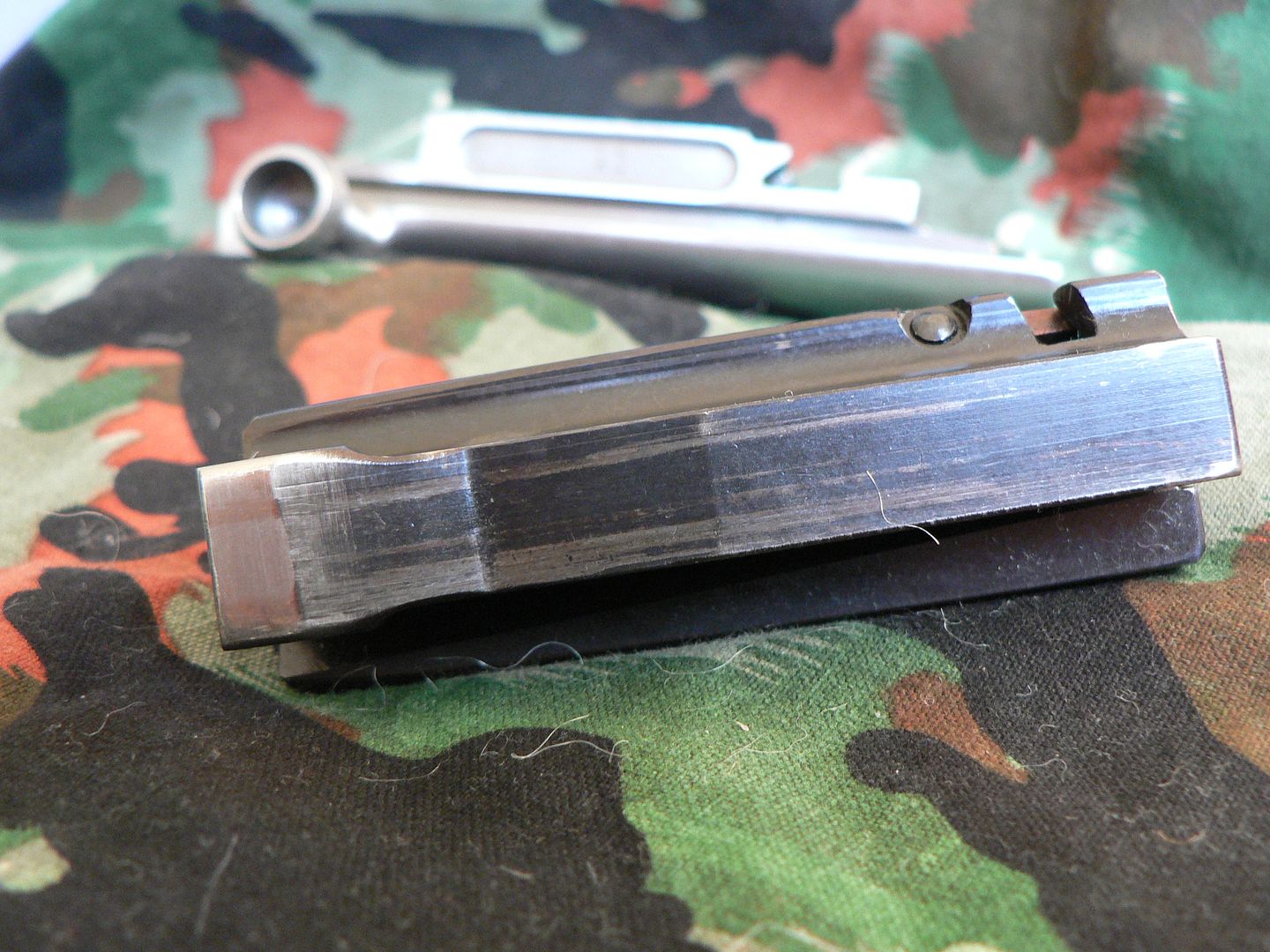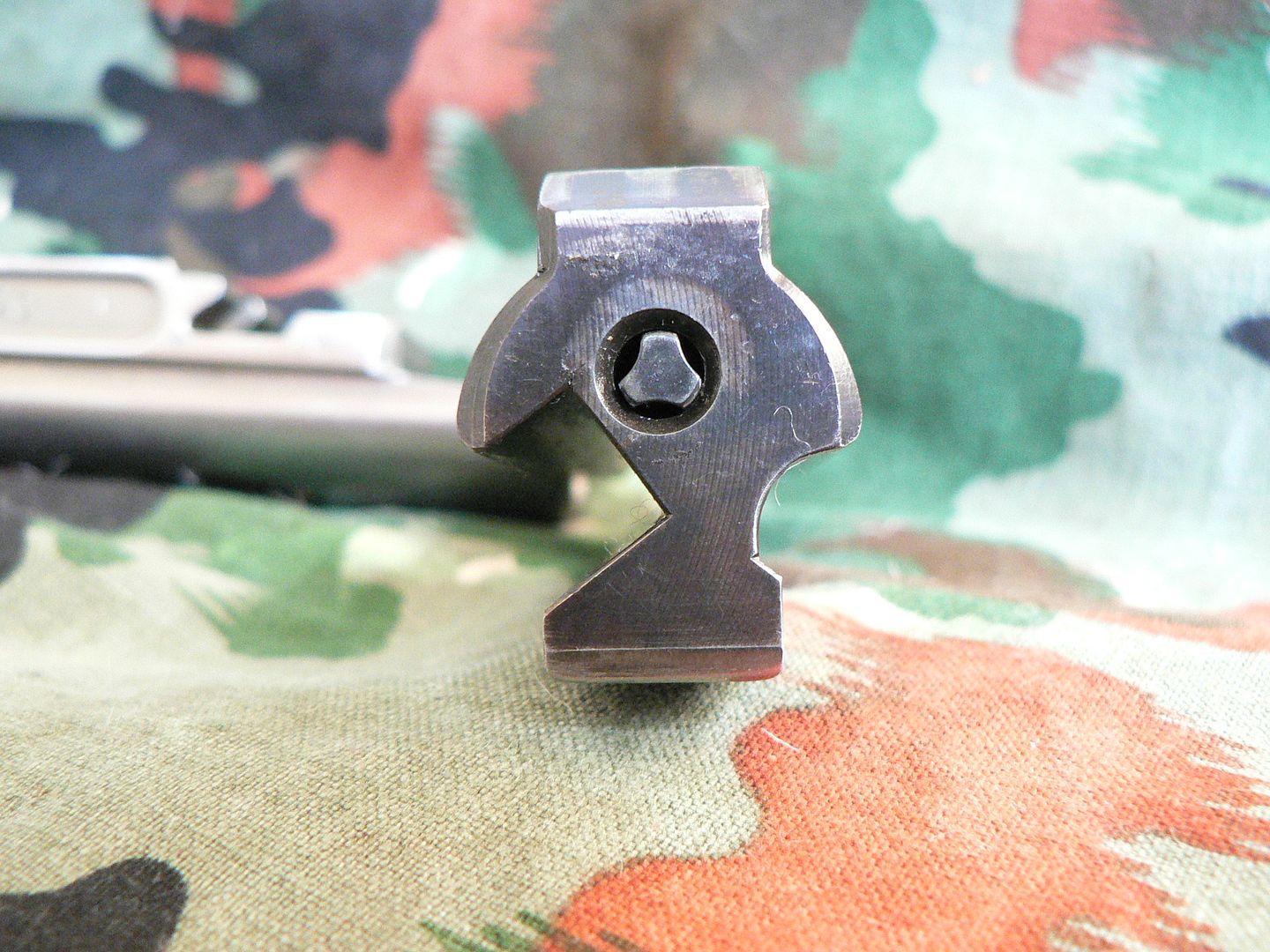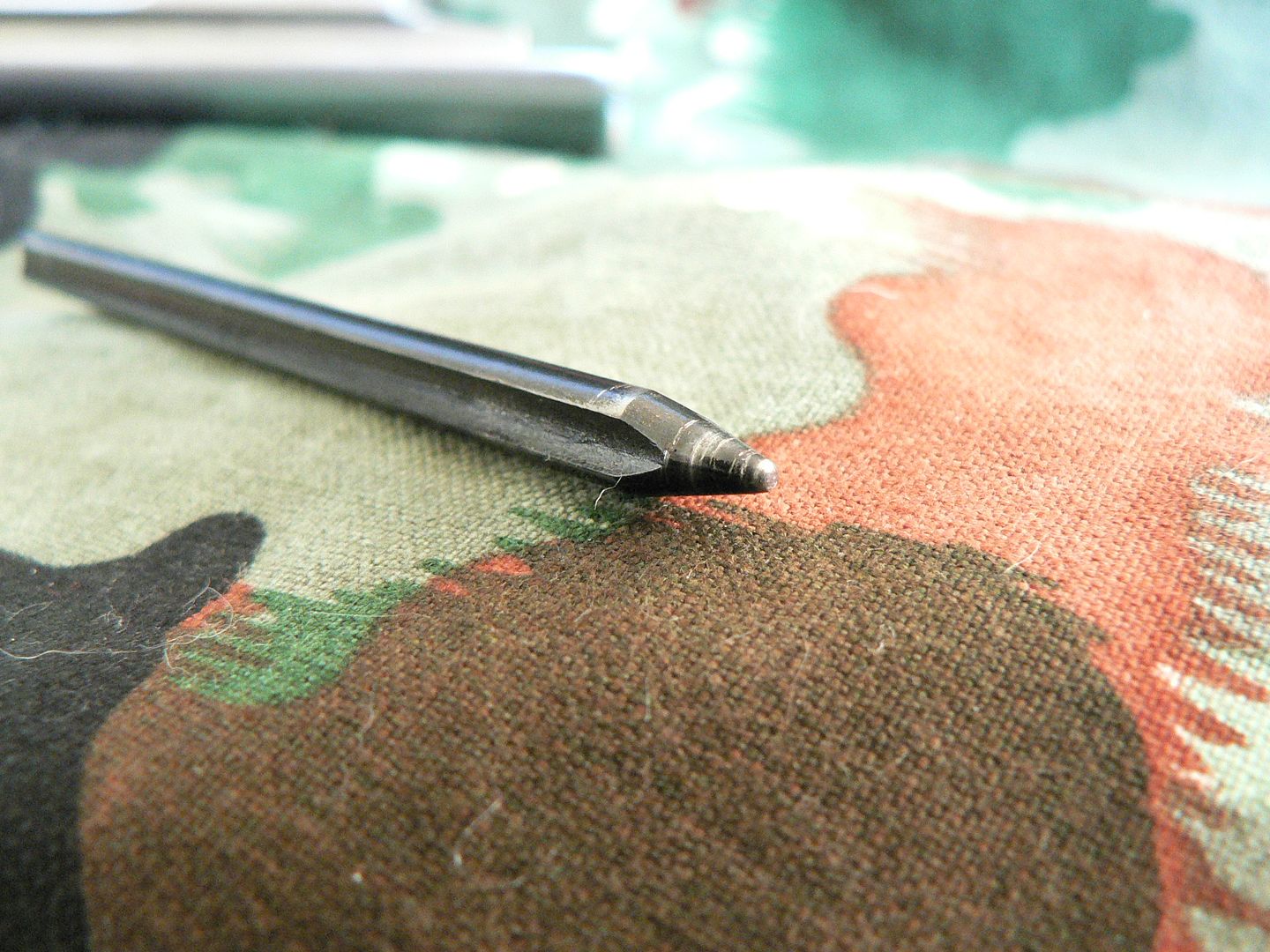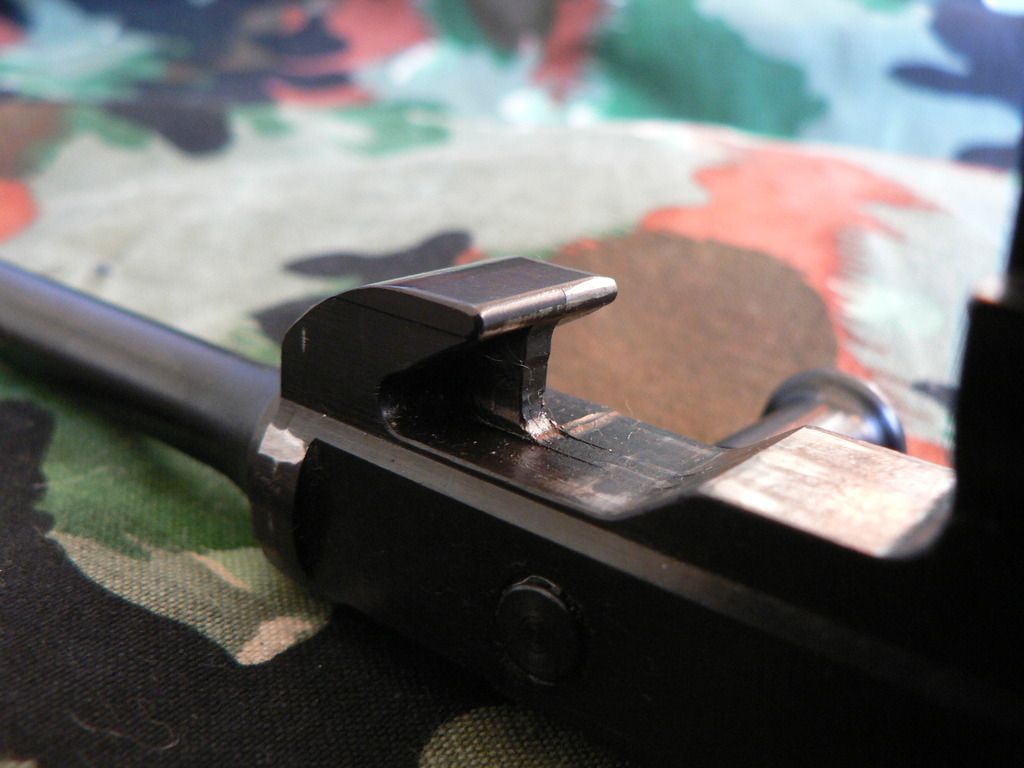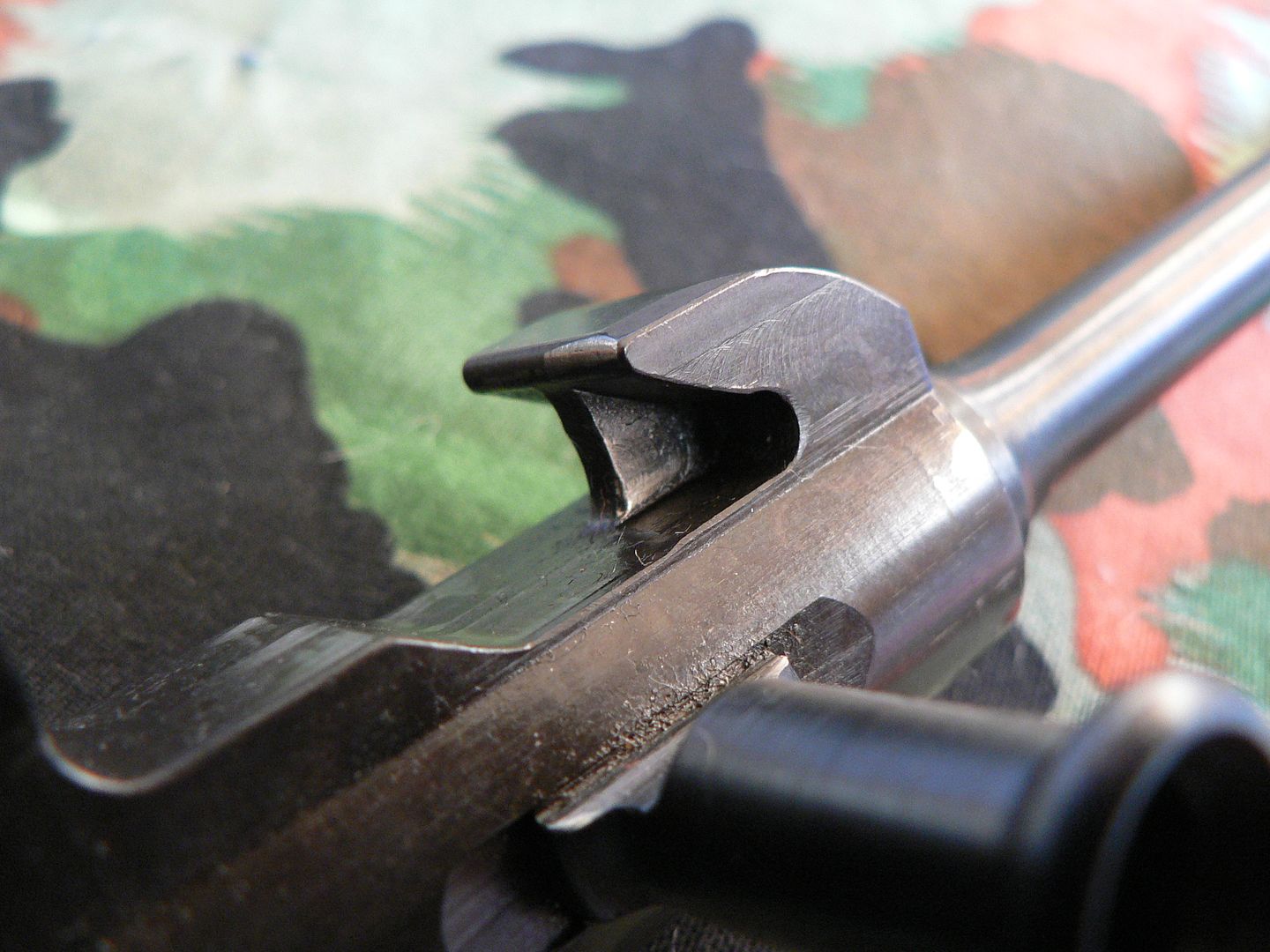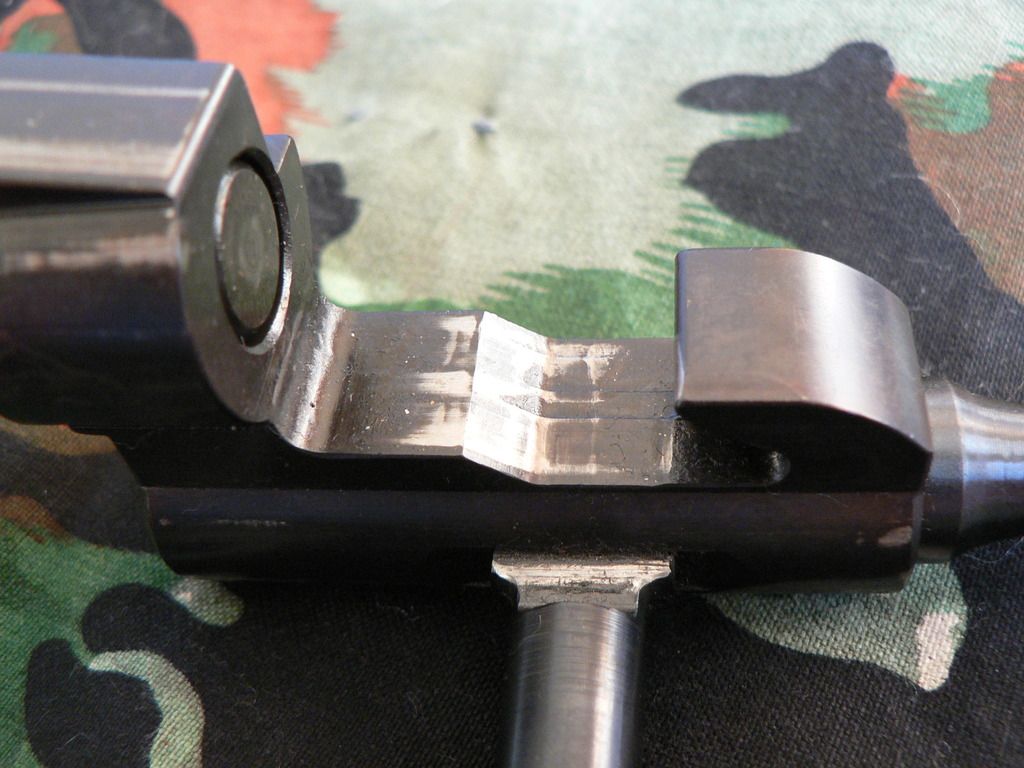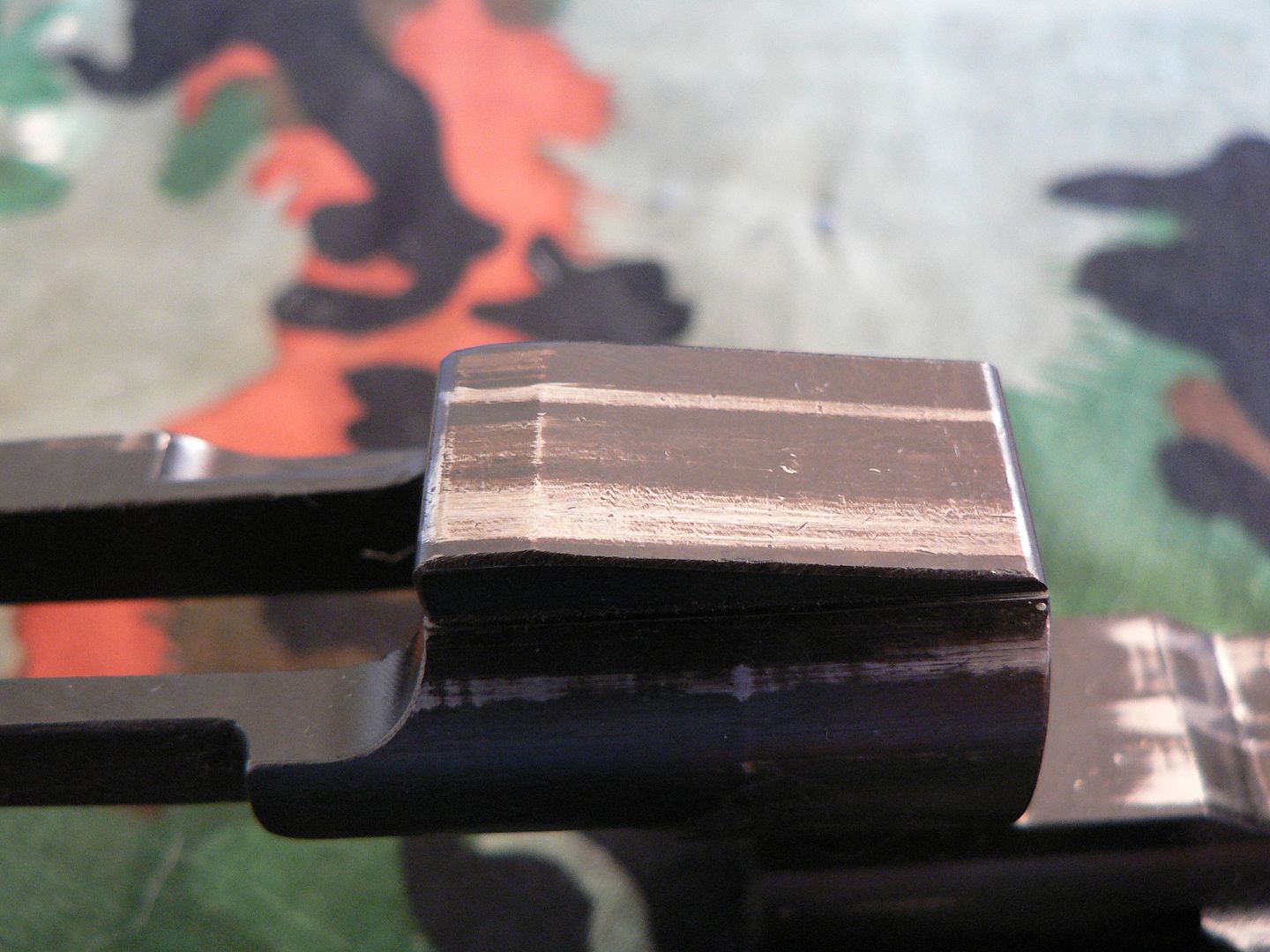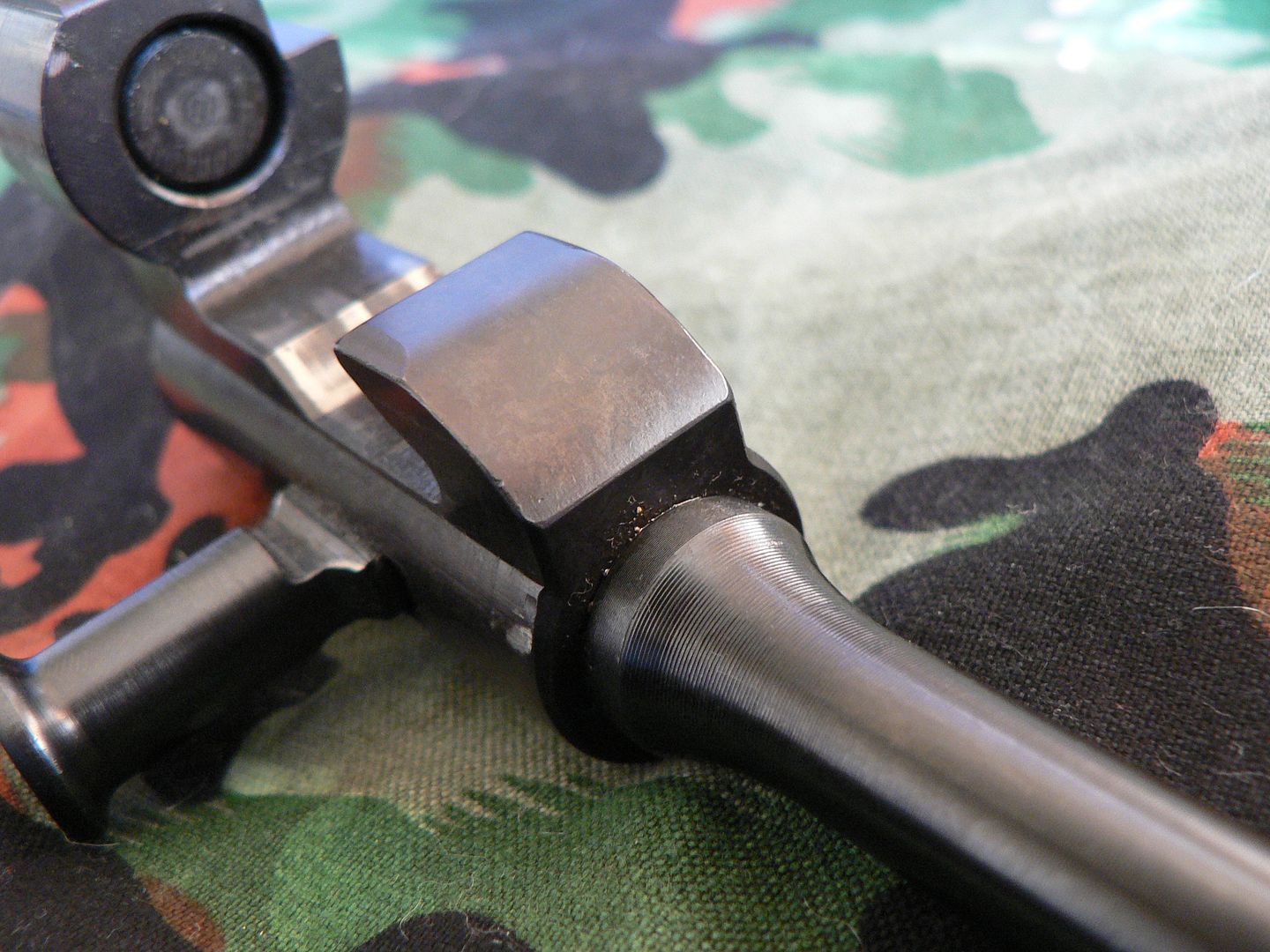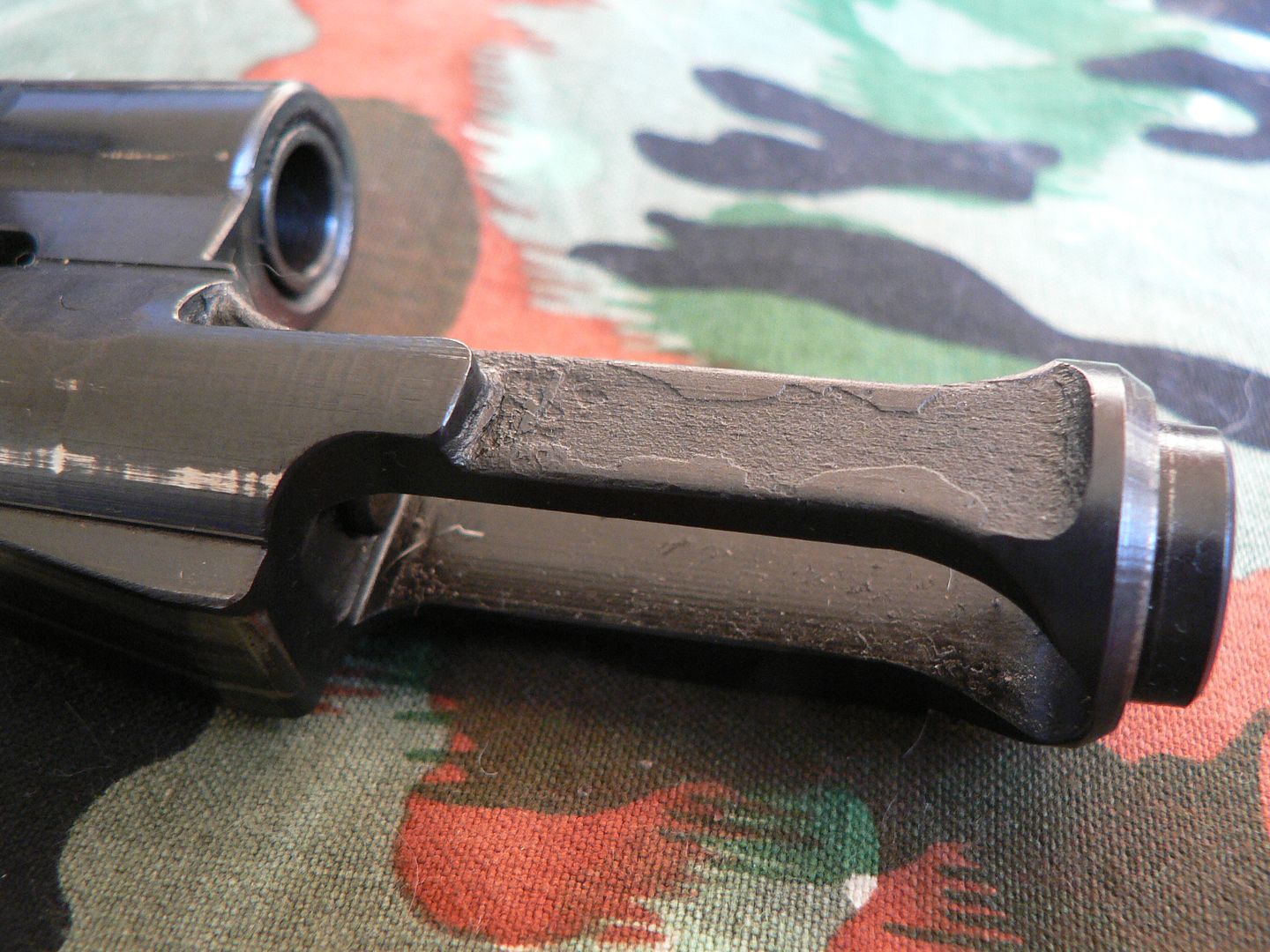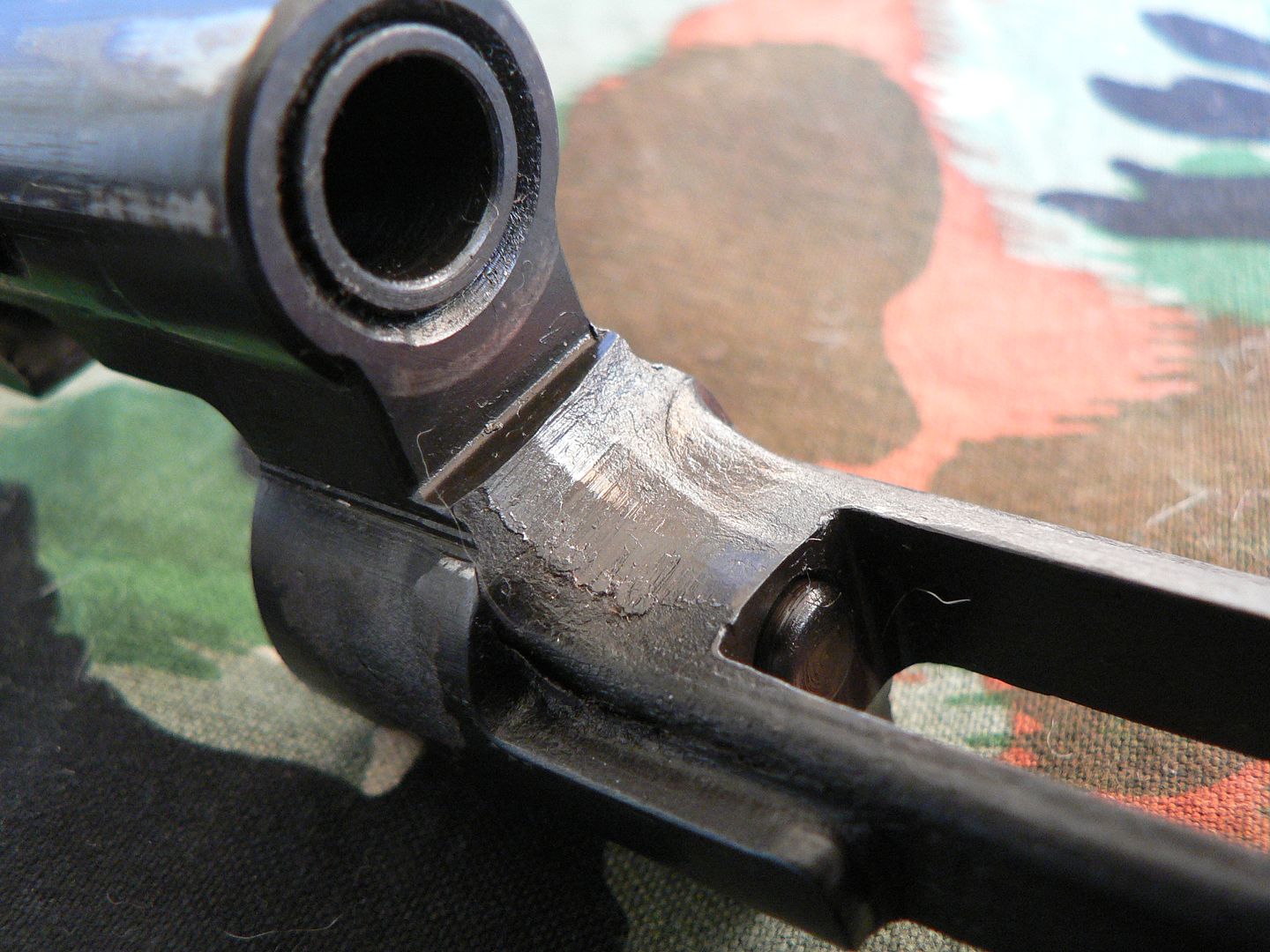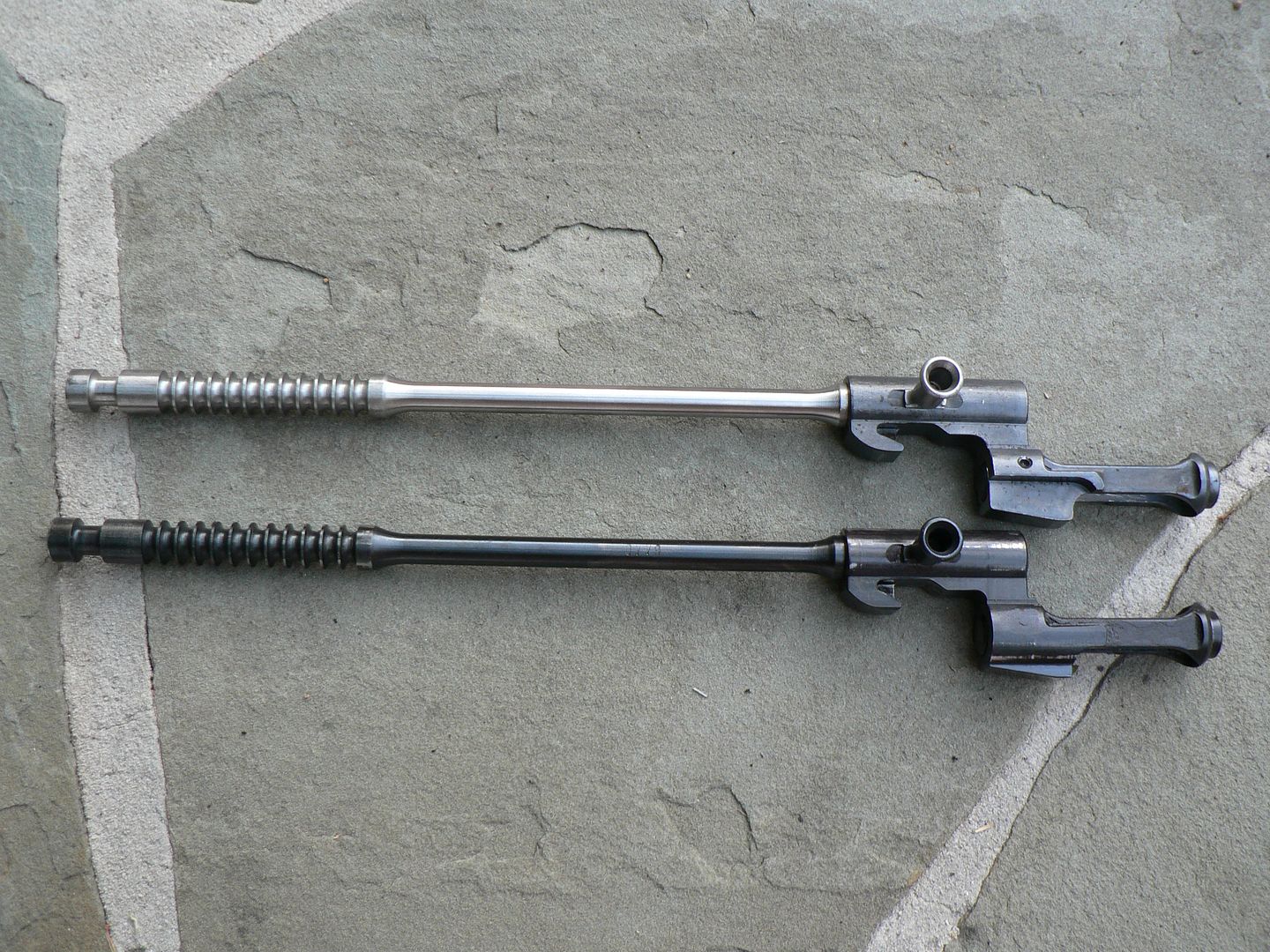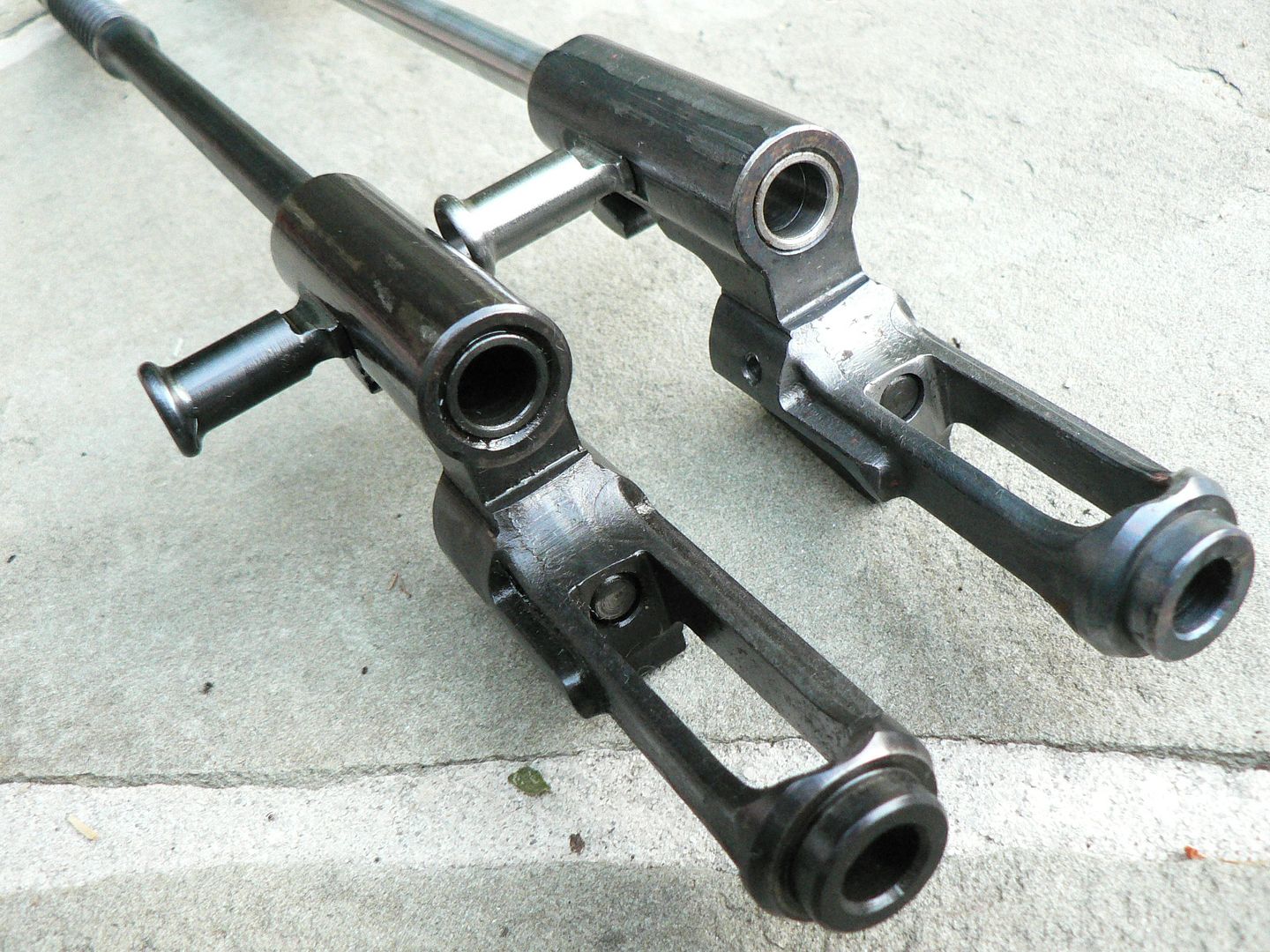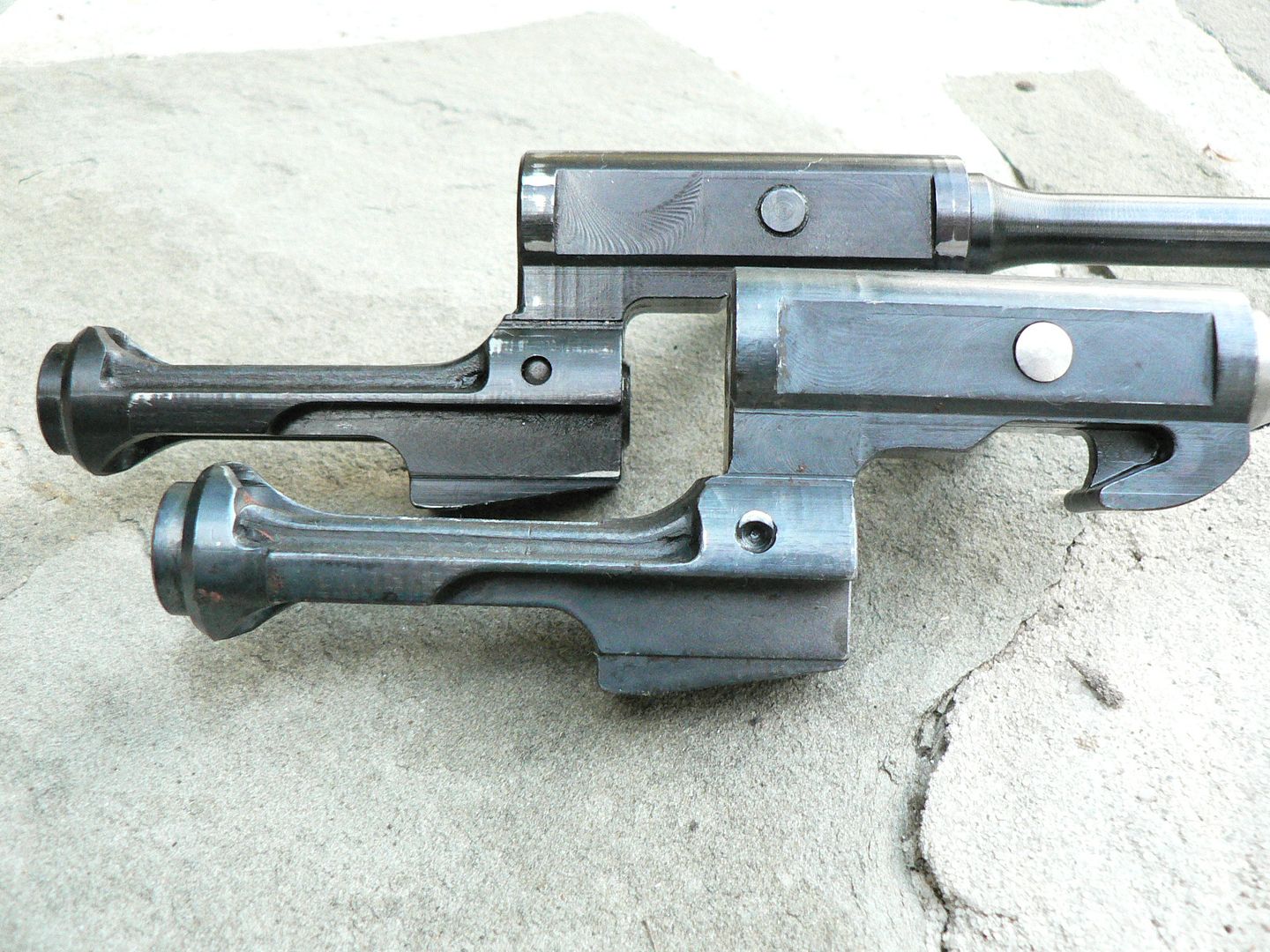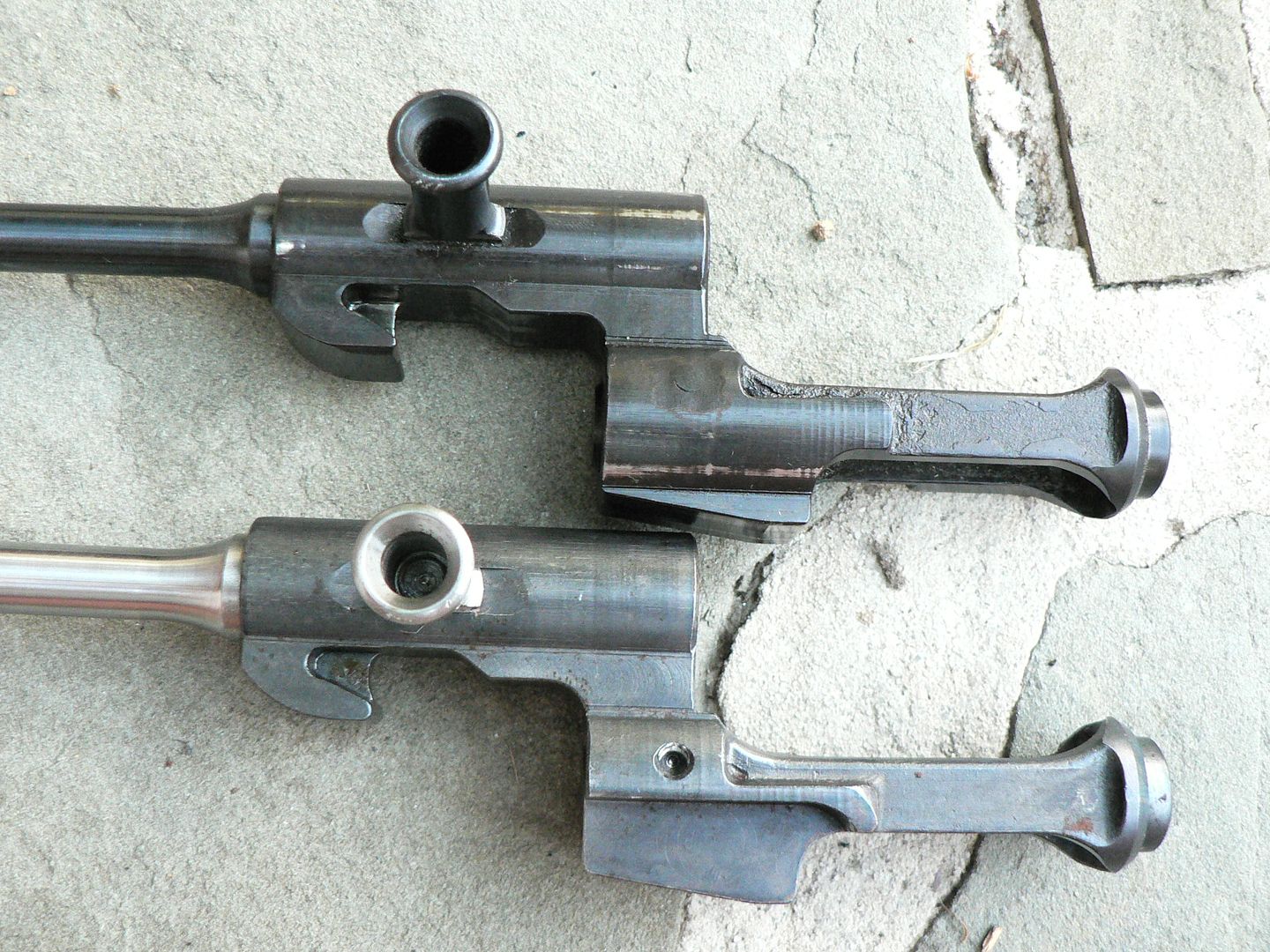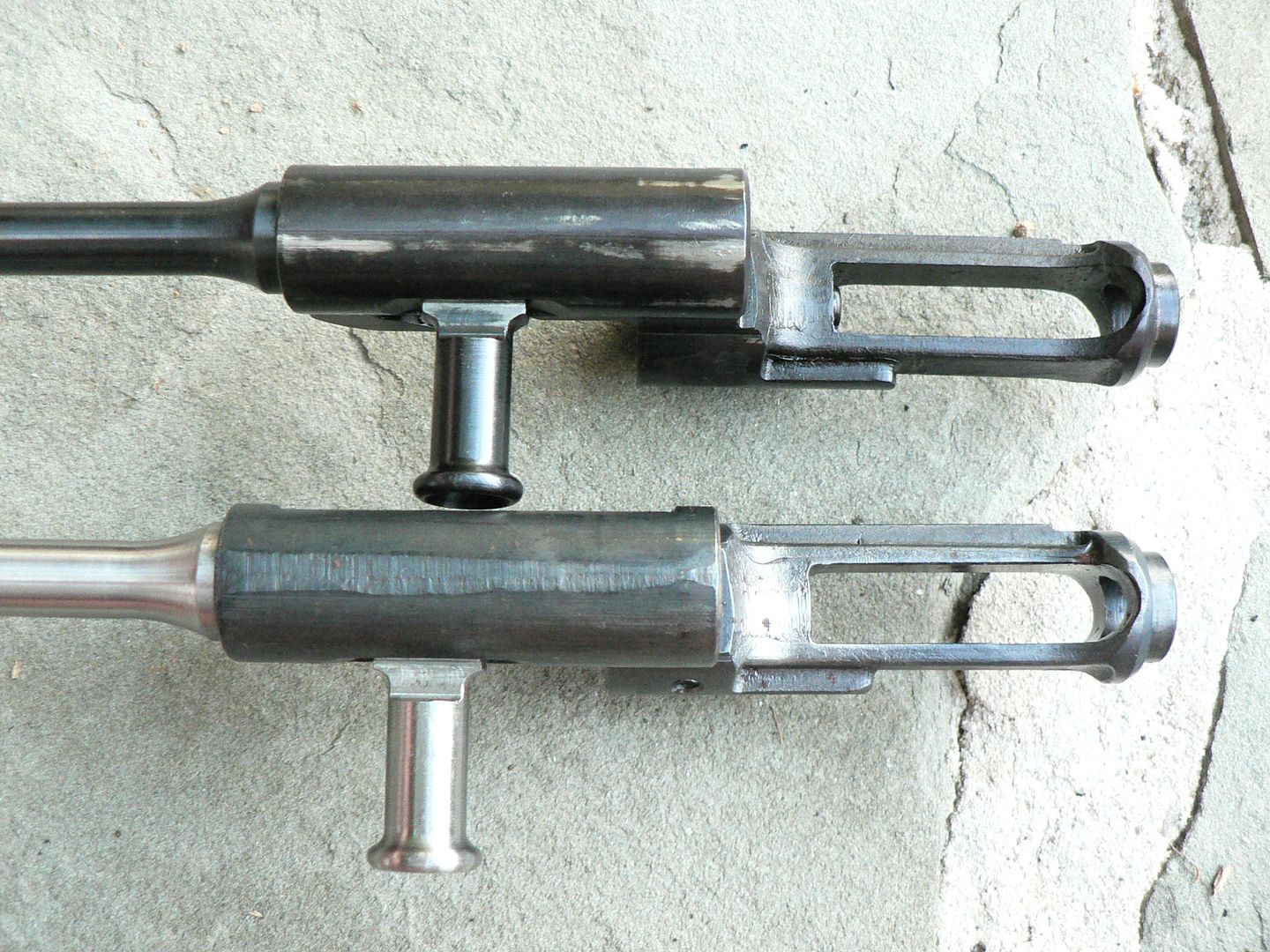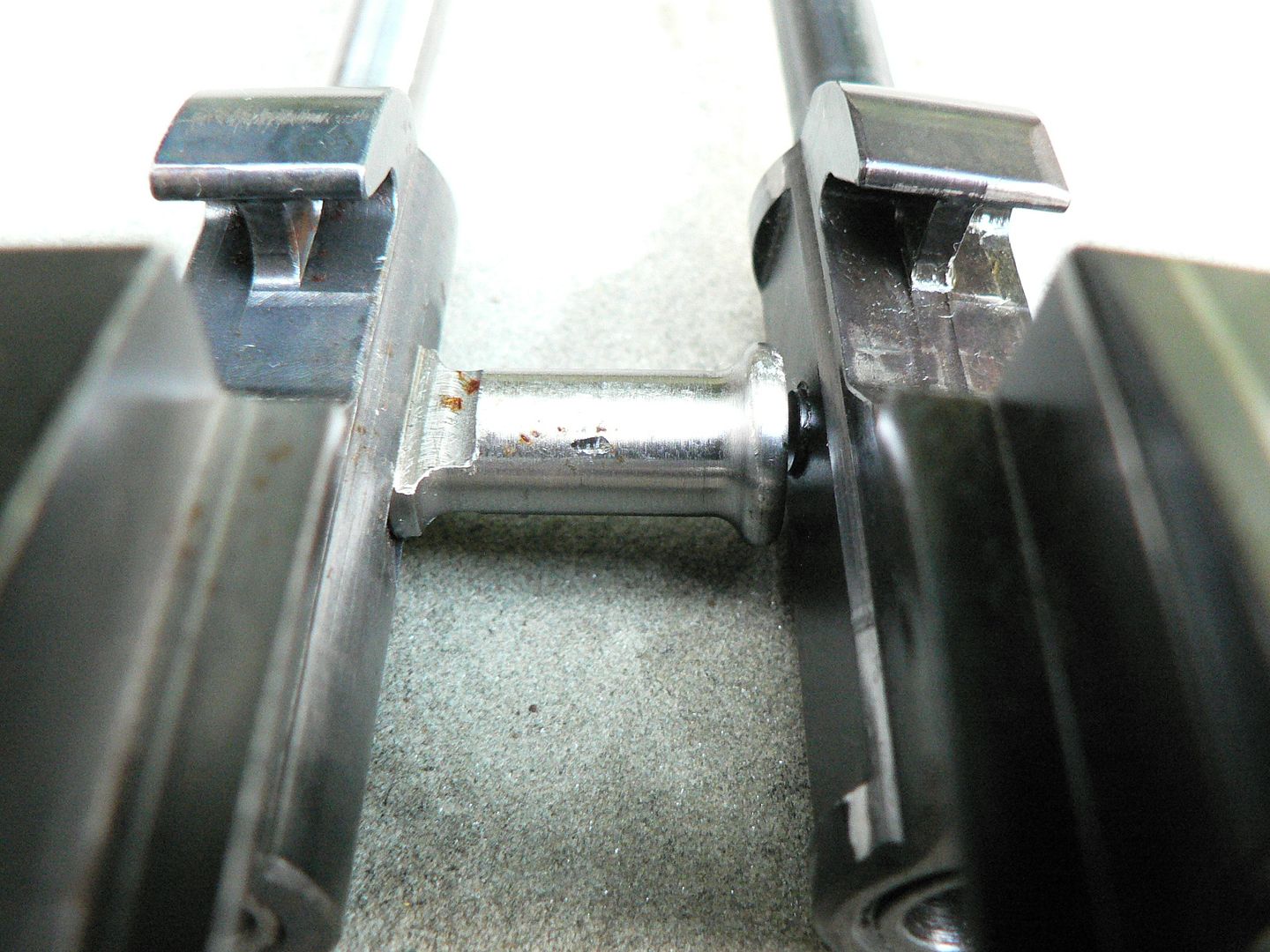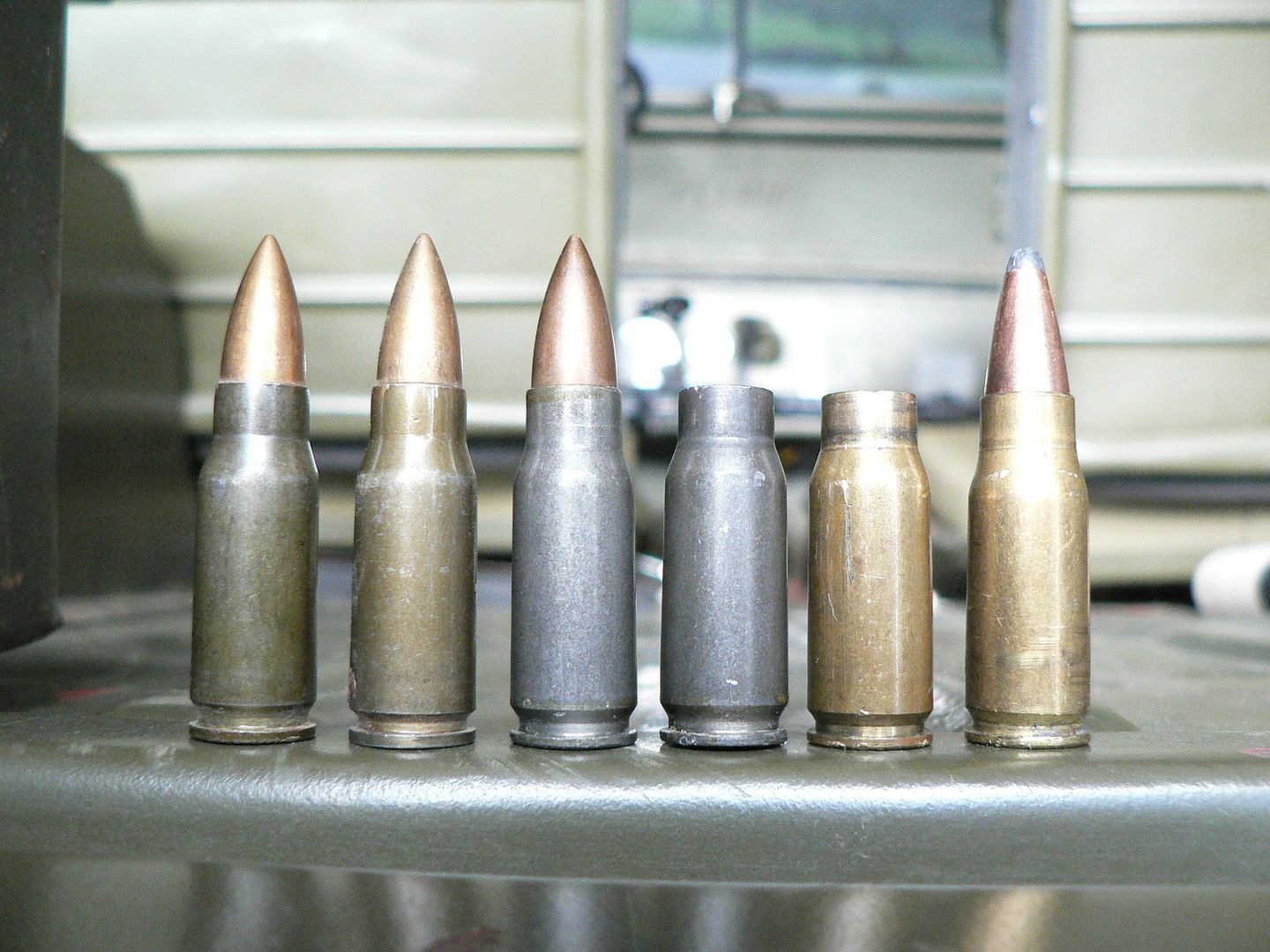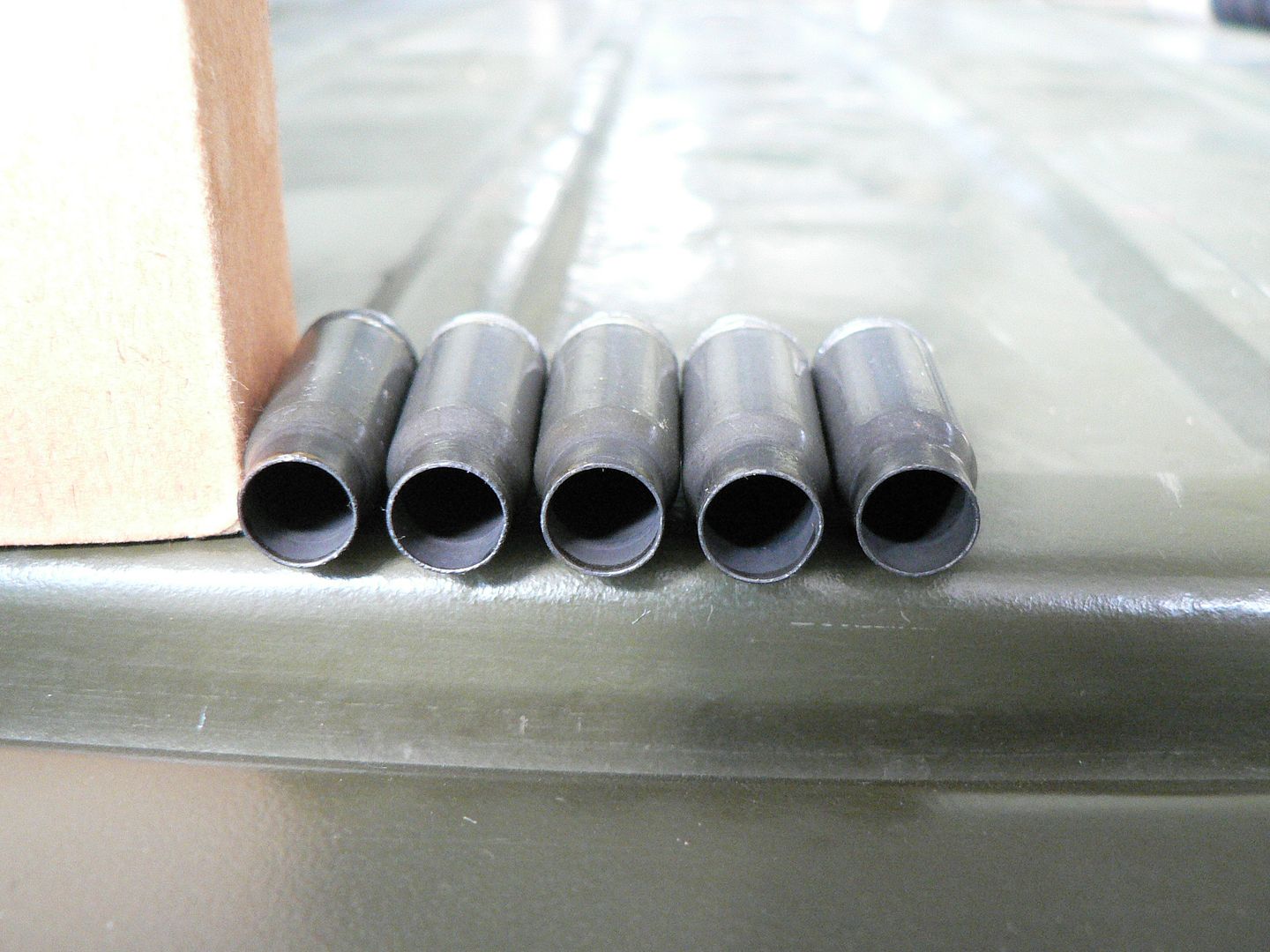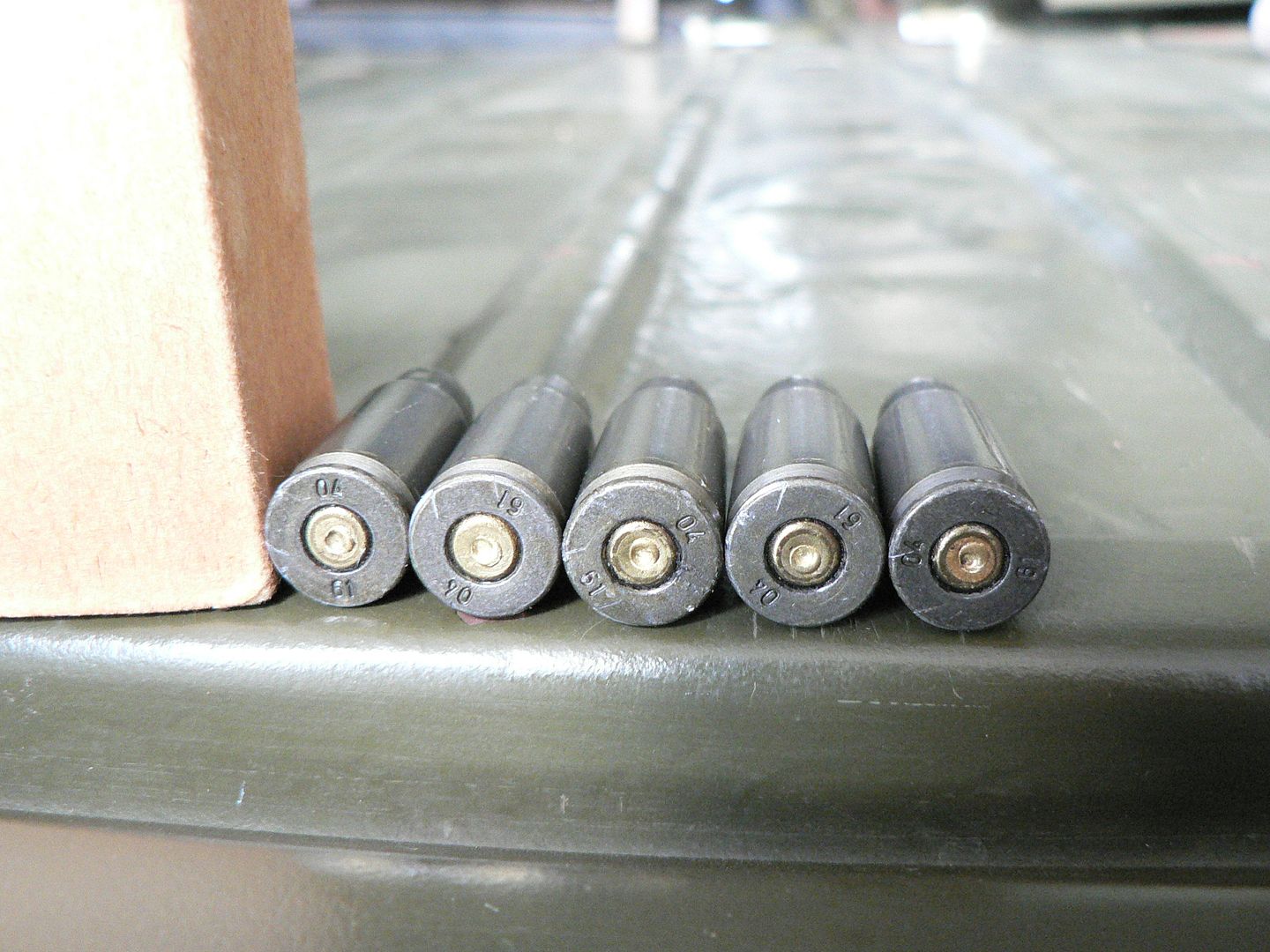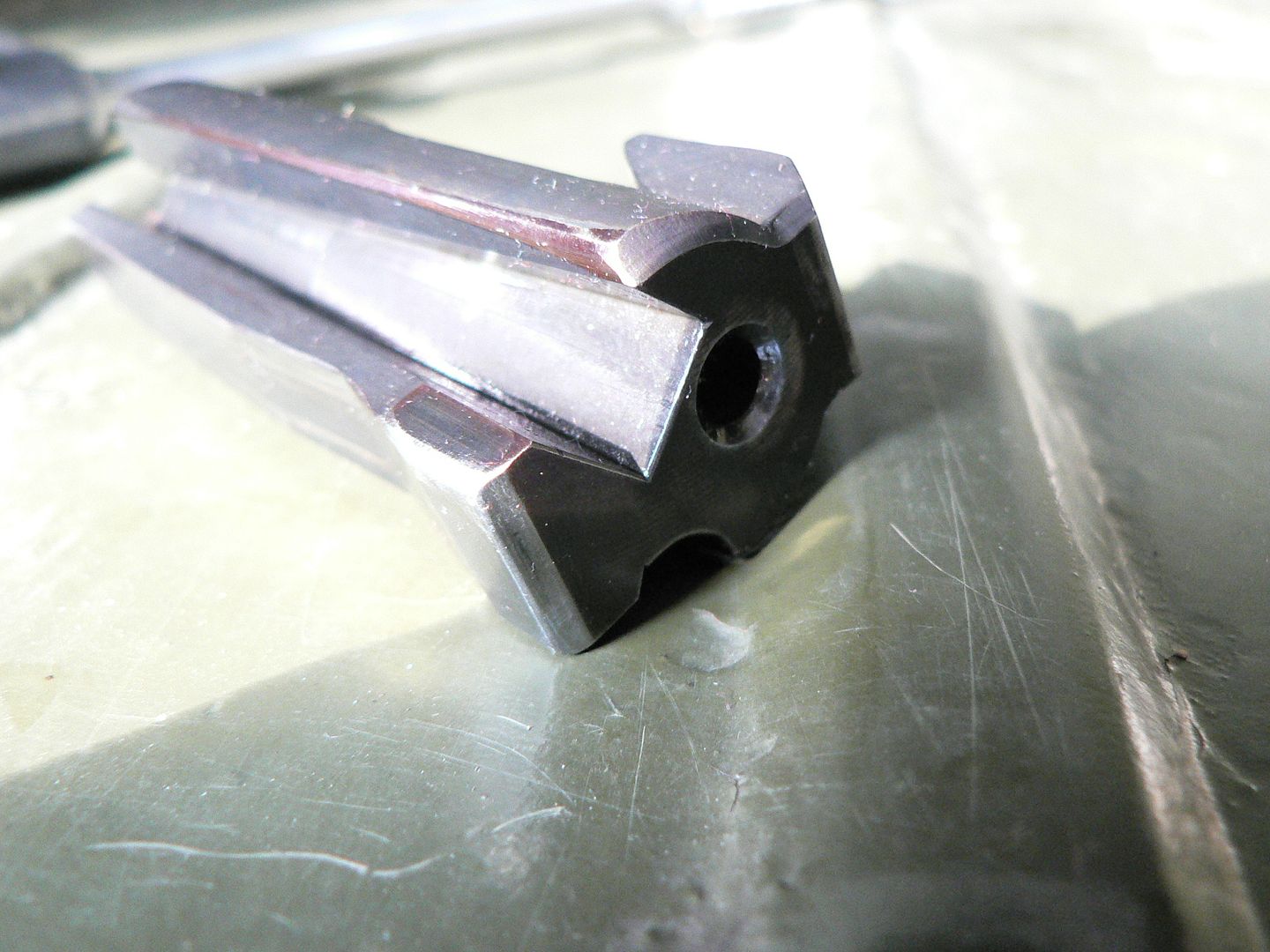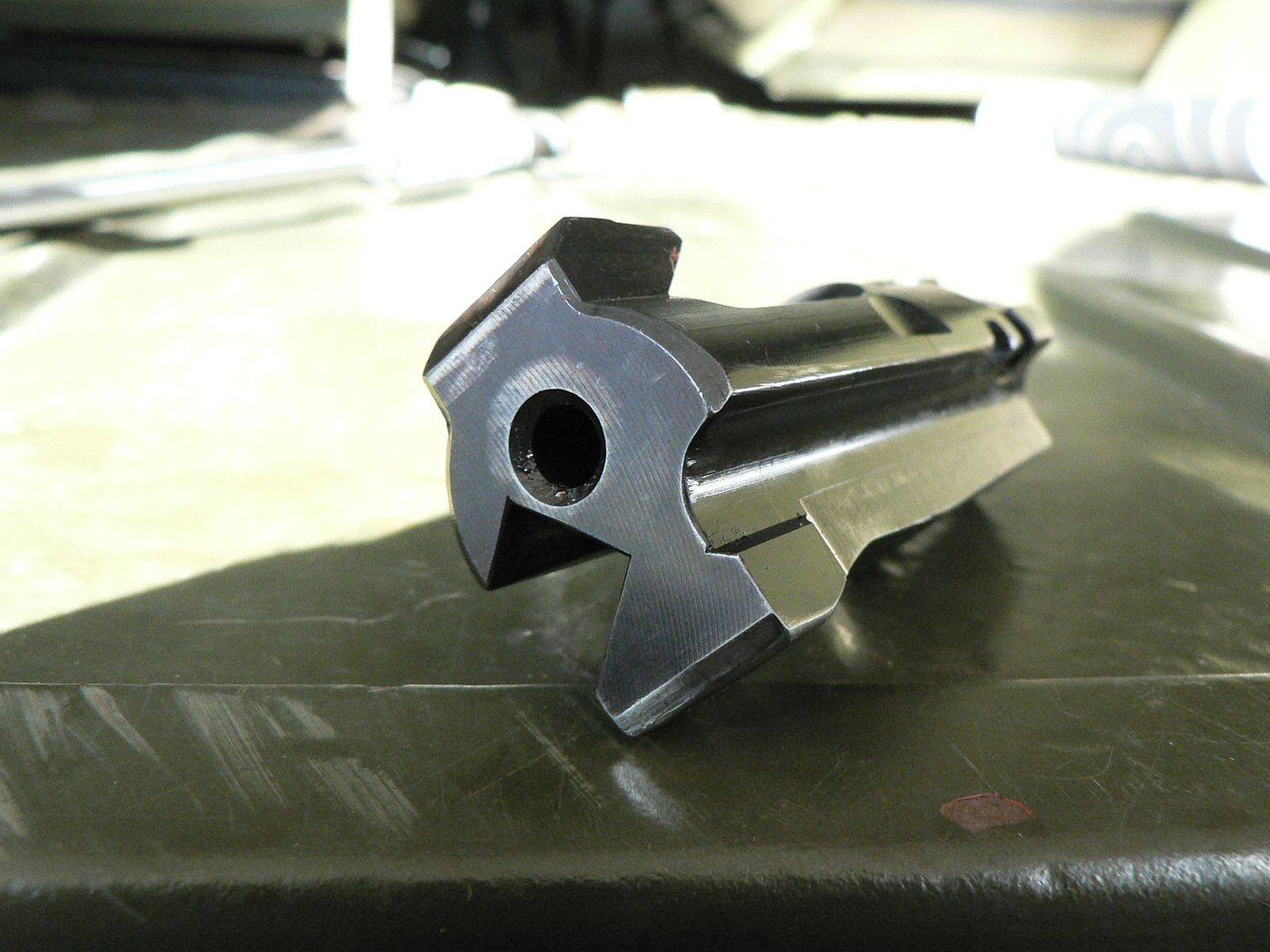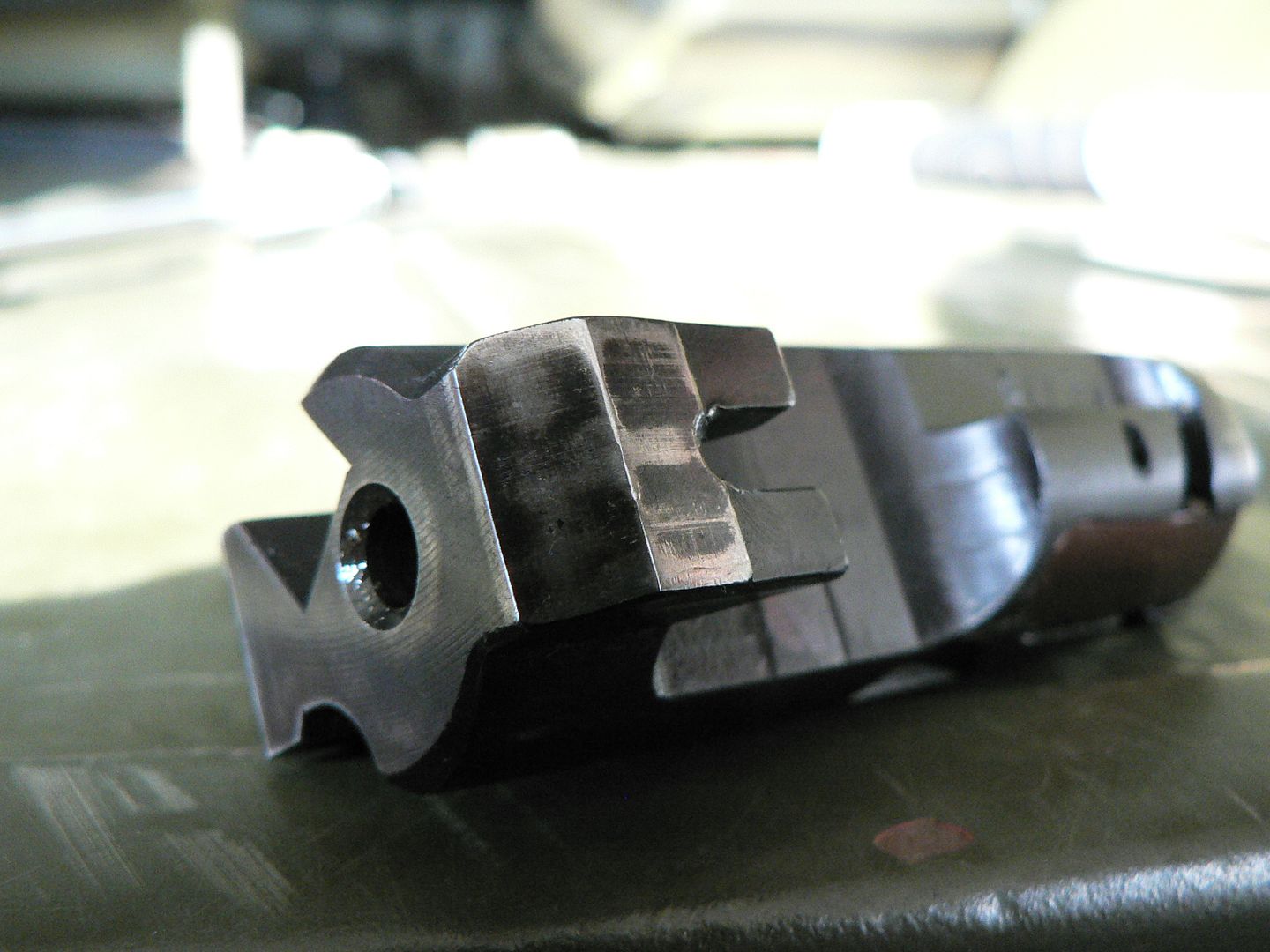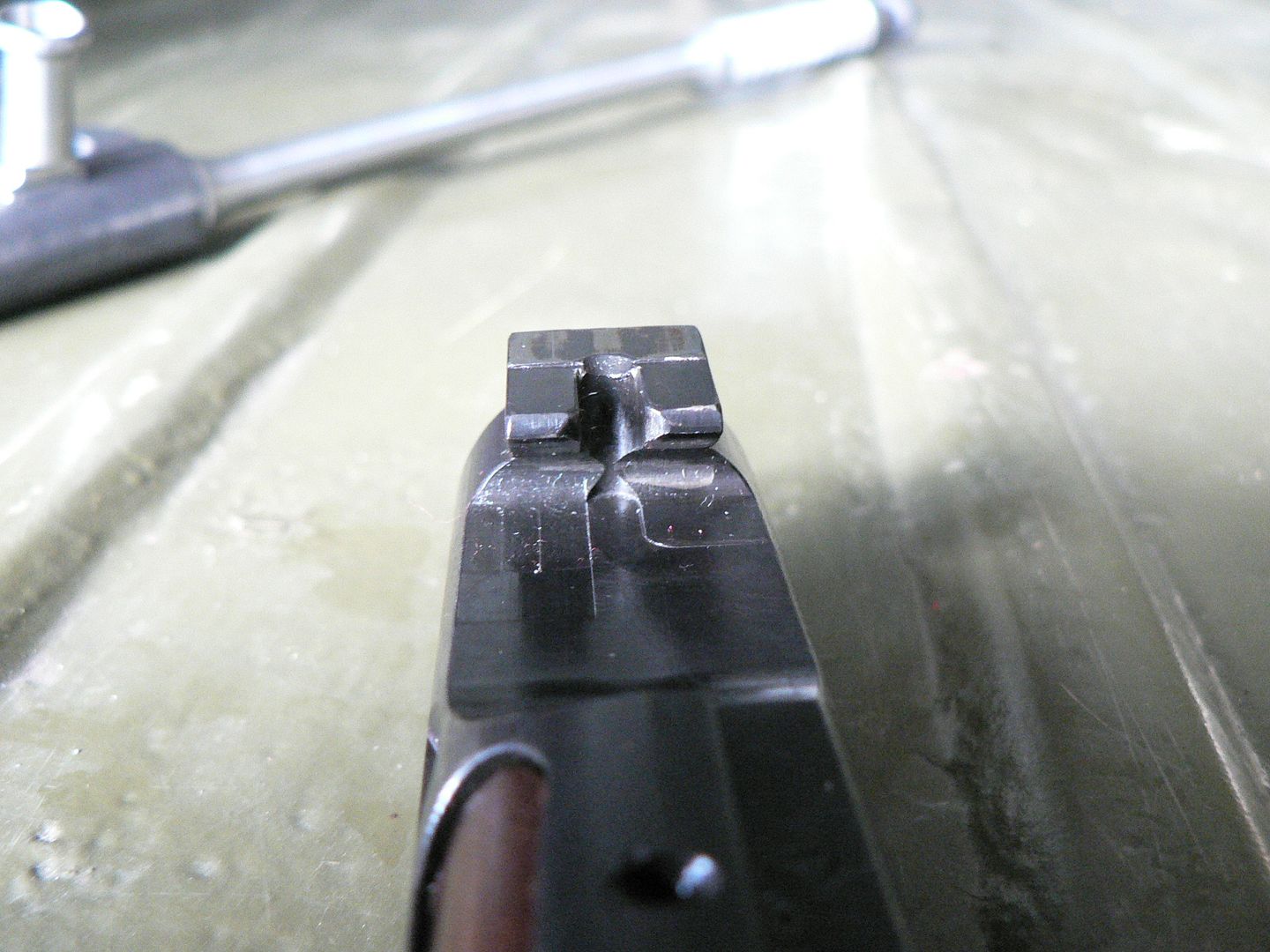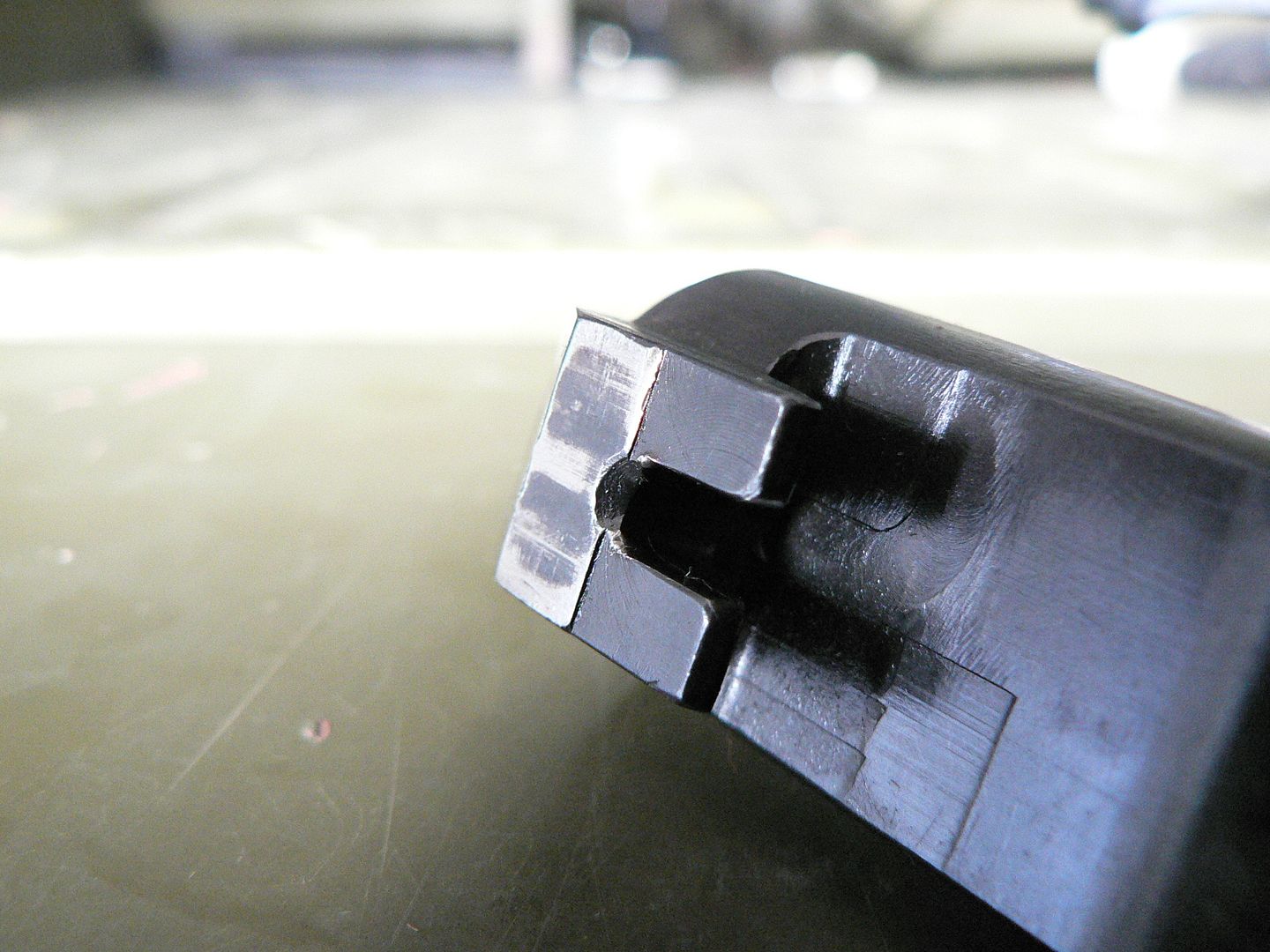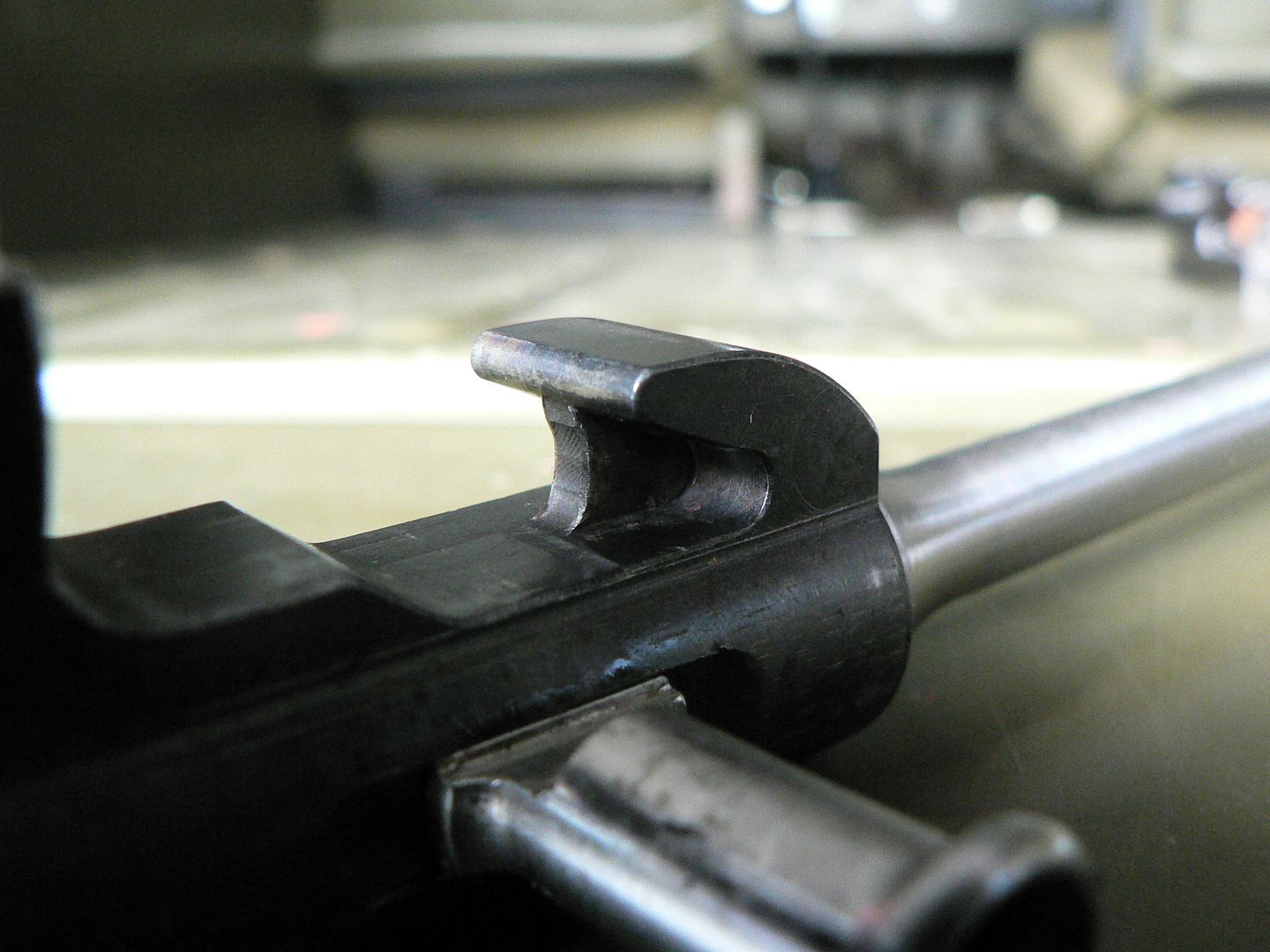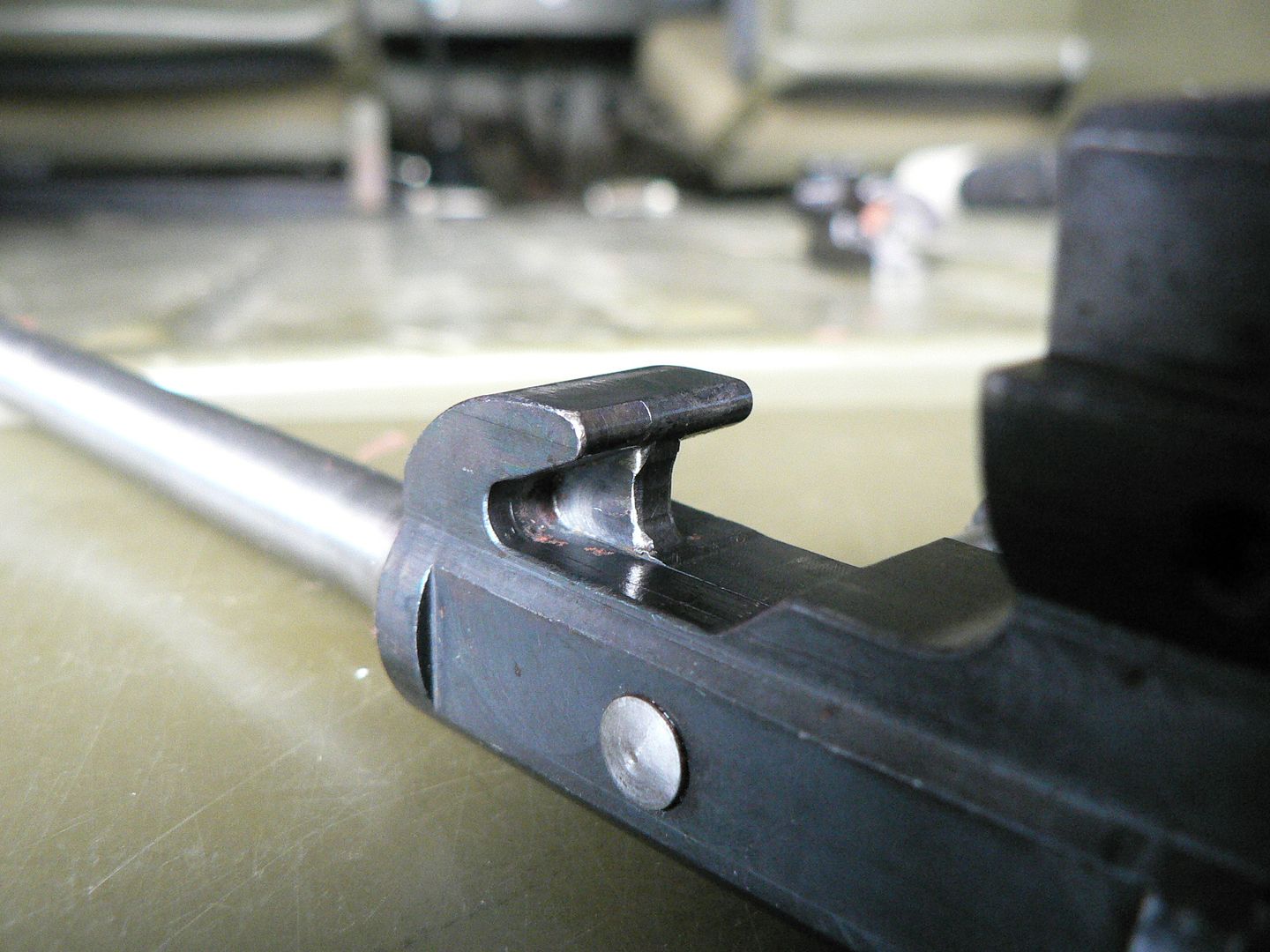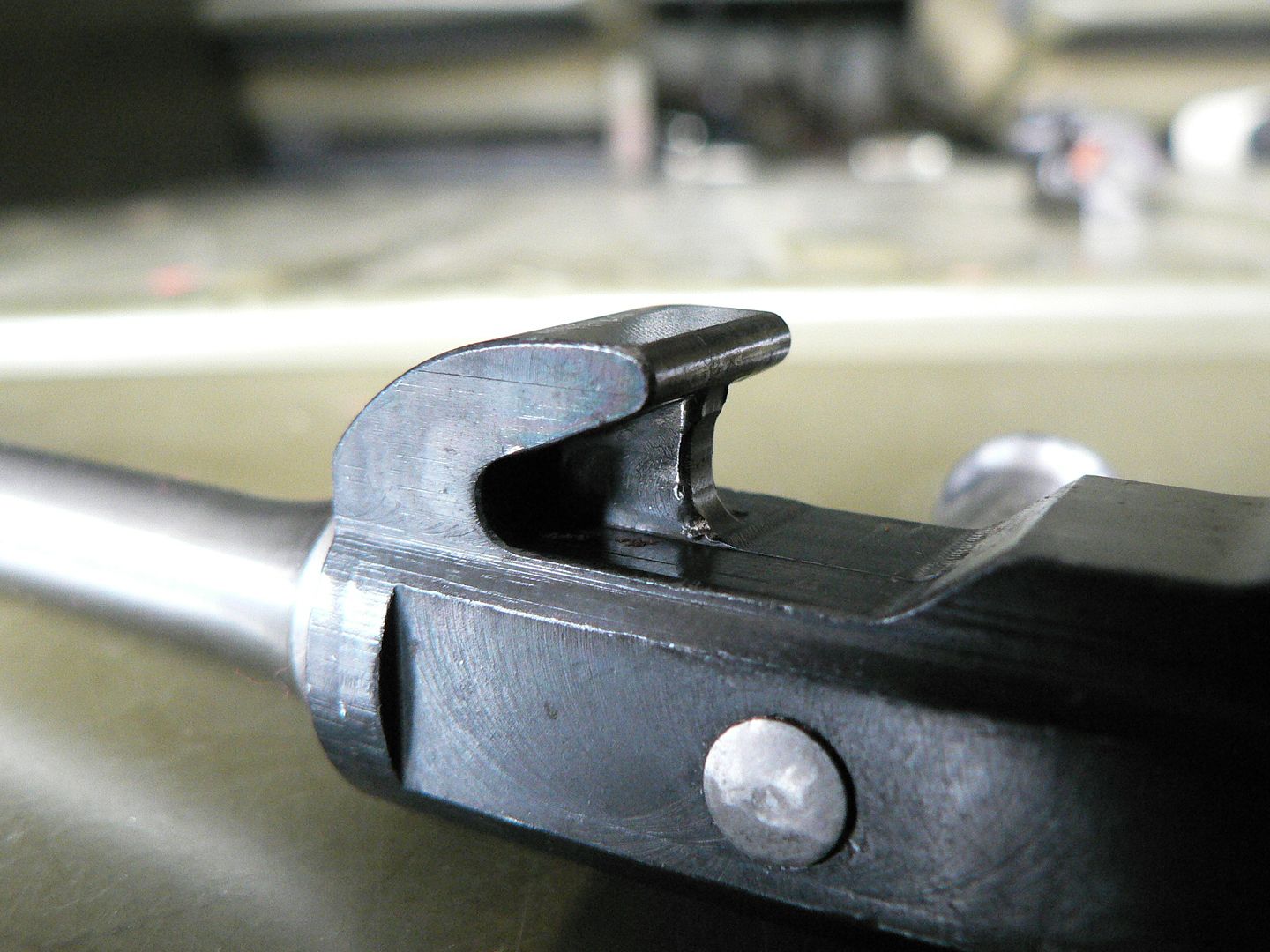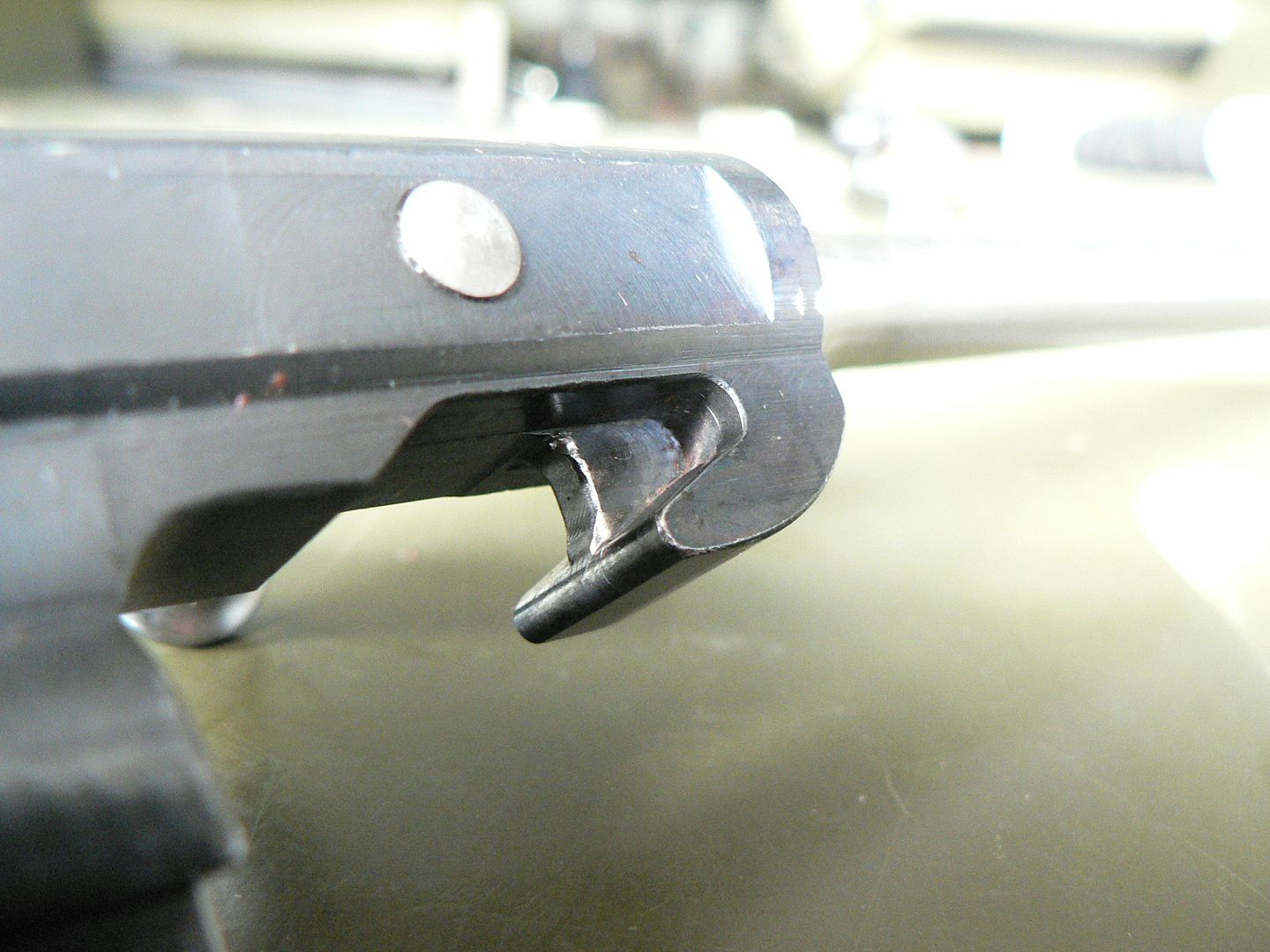Combloc
Stop Negassing me!!!!!
To anyone who is interested in military firearms, the MP44 needs no introduction. It has been so well documented both in print and online that, like the P08, it is recognized even my many non shooters. Other than in a most general way and a few of my own musings, this is not an essay about that rifle. Rather, it is about the modern replica built in Germany by Sport Systeme Dittrich (SSD) and imported in small numbers back in 2009 by PTR Industries.
When the first 200 were imported, it was supposed to be the beginning of regular shipments from SSD. Collectors were VERY excited because, while the rifles cost approximately $5000 new, that price tag was still far less expensive than the cost of an original example and you didn't have to register them on a Form 4 because they were not readily convertible to select fire.
Called the BD44 by SSD but marked "PTR44" for US importation, the rifle was so precise a copy of the original that many (myself included) believe that they were/are made using WWII era stamping dies and molds. In essence, it is a "real" MP44, just made 65 years later. What was not to love?? Various things as it turned out. While the rifle appeared to be exquisitely made, serious fatal flaws started showing up almost immediately. Of the 200 imported, only about 150 were actually offered for sale due to serious issues running the gamut from poor quality control issues with both German and US compliance parts to accidents during the US conversion from importable "sporting guns" back to intended original configuration. Worse, the ones released for sale soon started having issues with parts breaking and flawed modification design intended to prevent original, fully automatic parts from being installed on the rifles. We will cover these issues in more detail as we study the PTR44. The problems were so severe that PTR cancelled further orders of the rifle from SSD after just one shipment, causing these replicas to begin climbing in value immediately despite their almost fatal flaws. Before long, they were selling on Gunbroker at prices as high as $8000. They were still so sought after that even many of the approx. 50 rifles that had originally not been available for sale were offered one at a time on Gunbroker for $5000 apiece......and they sold. Since that time, prices on Gunbroker have come down somewhat but they can still command relatively high prices. Over the years, there have been various rumors of other companies planning to import the BD44 into the United States. Even as I type this, there is word that more are coming. However, none of these rumors has yet come to fruition although the collecting community remains hopeful.
So........what about the PTR44 almost eight years after it was imported? What has become of it? What exactly were the flaws and can they be corrected? Is it a useable rifle or just an expensive wall hanger that has a nasty tendency to self destruct? This thread intends to answer those questions. It is also intended to give a good detailed look at the rifle so that you can see just what you can expect to get when you buy one. I will also cover what should/must be done to it if you do plan on using it to any real extent. I will also document my experiences over time spanning from what I got when I bought it to through what will be done to improve it and ending with (hopefully) the first thousand rounds out the muzzle. Hopefully, my work and tears will help YOU make an informed decision about whether or not you want to actually buy one if you have been interested in owning one over these years. Or, if you are just curious about what the PTR44 is (and is not) you will get some amusement out of my stupidity! This thread is going to take a long time and many posts so let's get to work!
It's late and I'm only going to post a few pictures tonight but ya' gotta start somewhere, even if it is a small beginning.
Here it is.....the PTR44:
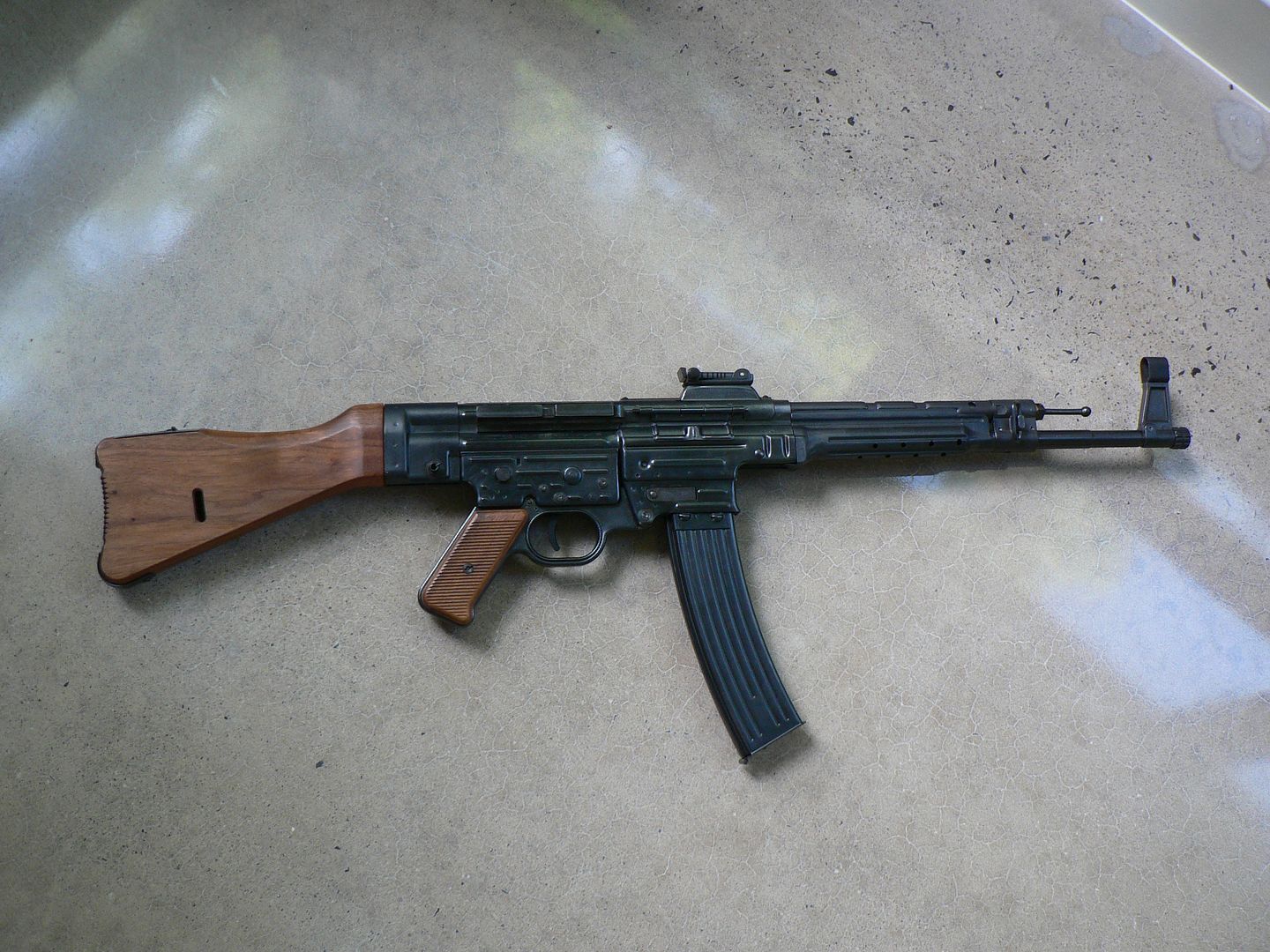
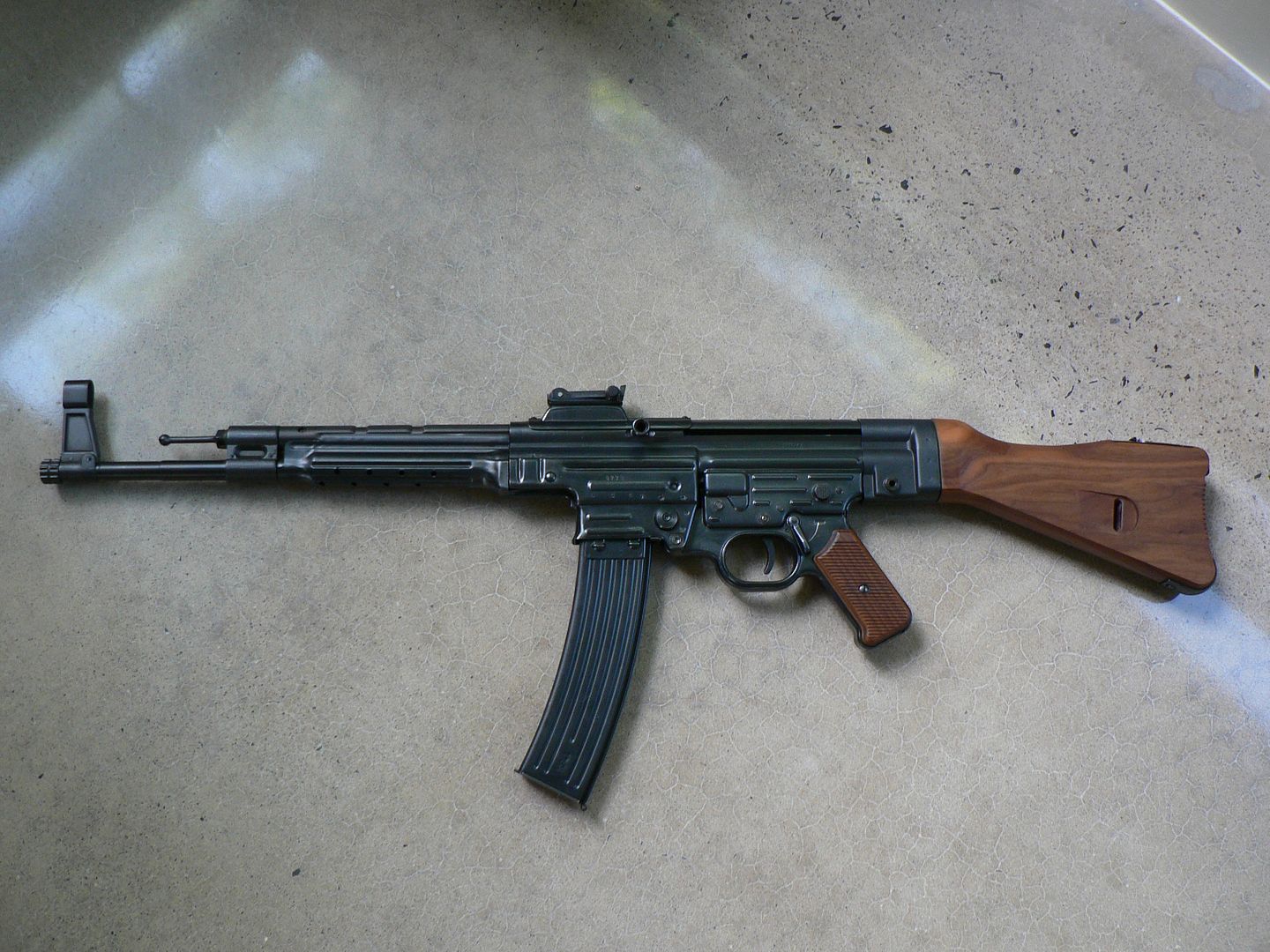
I'd wanted one of these in the worst way since I was a kid playing with plastic army men in my yard back in the 70's!! None of them were carrying an MP44 but I had seen them in books and they just looked sooooo neato so I just pretended that my little plastic dudes were carrying one! I got crazy excited when I heard I.O Inc. was planning to import these back in 2007 or 2008 (I forget just exactly when but that's pretty close). I saved up all my money like a good boy. But they just kept dragging it out; promising that they were coming and making a list of people who wanted one but not delivering on those promises. Then the price started going up because they were deluged with phone calls and emails from potential buyers. I guess they figured they would soak us poor saps for all they could get out of us. After a while, I got tired of the delays and price hikes so I took my money and bought an NDM-86 (Chinese made SVD) instead. They never did show up through I.O. Inc.. A little while later, the PTR deal came about. By then, I had researched these rifles thoroughly and, even though I don't speak German, I meticulously translated everything I could find on European gun forums pertaining to the BD44. I was aware that people were having issues with parts breaking and I decided to hold off, waiting to see it the issues would be ironed out before I plunked down my hard earned money. I am NOT a wealthy man after all! Well, I've already told you what happened and there was NO WAY I was going to spend 5K on a rifle that I would potentially have to sink thousands more $$$ into if I wanted to MAYBE work. Nope, I didn't need one that bad.
But it nagged at me. I still wanted one but I was angry too. Why couldn't they have just done it RIGHT the first time??? My pride wouldn't let me spend the money. Well, after 7 years of being pissed off about the whole affair, I decided that the whole thing was cursed. Despite MANY claims that more were coming, I came to feel that more simple were NOT coming. I still feel that way but I sincerely hope I am wrong. Whatever the case, I started looking again; casually at first but more actively as time went on. When this one came to my attention through a guy I know who has one of his own, I figured I had better get one now or accept that I was probably never going to get one at all. I contacted the owner who told me that he had put 50 rounds through the rifle when he first bought it new and then put it in the safe to sit. He still had everything it came with including the cheap Plano hard case, two magazines, manual, PTR supplied lock and other assorted paperwork thrown in by PTR such as a catalog and safety brochures. It even came with the cardboard shipping box. Well, knowing my luck and still believing that the whole modern MP44 thing was cursed, I drove to his town in a whole other state to transfer the rifle to me legally through an FFL. My thinking was that, if I was to have it shipped, it would probably get destroyed or lost in transit so I'd better cut that variable out of the equation!! It turned out to be fortuitous because the seller turned out to be just a really, really nice guy. He even bought me lunch at a local micro brewery with a bit of the money I had just given him. Thanks Richard! You have Class sir!!
OK. Moving on. Before I get into the nitty gritty of the PTR44 proper I want to touch just briefly on my thoughts about the MP44 in general. The Sturmgewehr is something of an odd bird. Being that it is the first of it's kind in known History, it's a little crude by modern standards. It's very slim and not particularly long but it's also kind of bulky. By that I mean that, although it's about the same overall size as an AK47/VZ58/HK93/take your pick, it just looks bigger unless it's side by side with one of them. It feels like it was built for Lego people. <--You either get that or you don't. And it's HEAVY, weighing in at just a bit over 11 pounds. The action also feels ratchety. When you grab the charging handle and run the action back and forth, you can feel the parts locking and unlocking in there. I imagine that it feels about the same as something built in Ape City (Charlton Heston PotA, NOT that new stuff). It's not a smooth action at all. BUT, when you shoulder the rifle, you find that the ergonomics are spot on; even better than many of today's offerings. And the recoil impulse is just phenomenal. The straight line design coupled with the weight (in 1945, men were men and weight was not the issue it is for us modern wussies!) means that there is minimal muzzle rise. You can still feel and even hear all the innards gnashing around in there but it works. In many respects, the ancient and crude MP44 still feels like a relevant design today. Yes, you can tell it's old but it's competent.
Here is an original (owned by a friend) compared to an AK, VZ58 and an HK93:
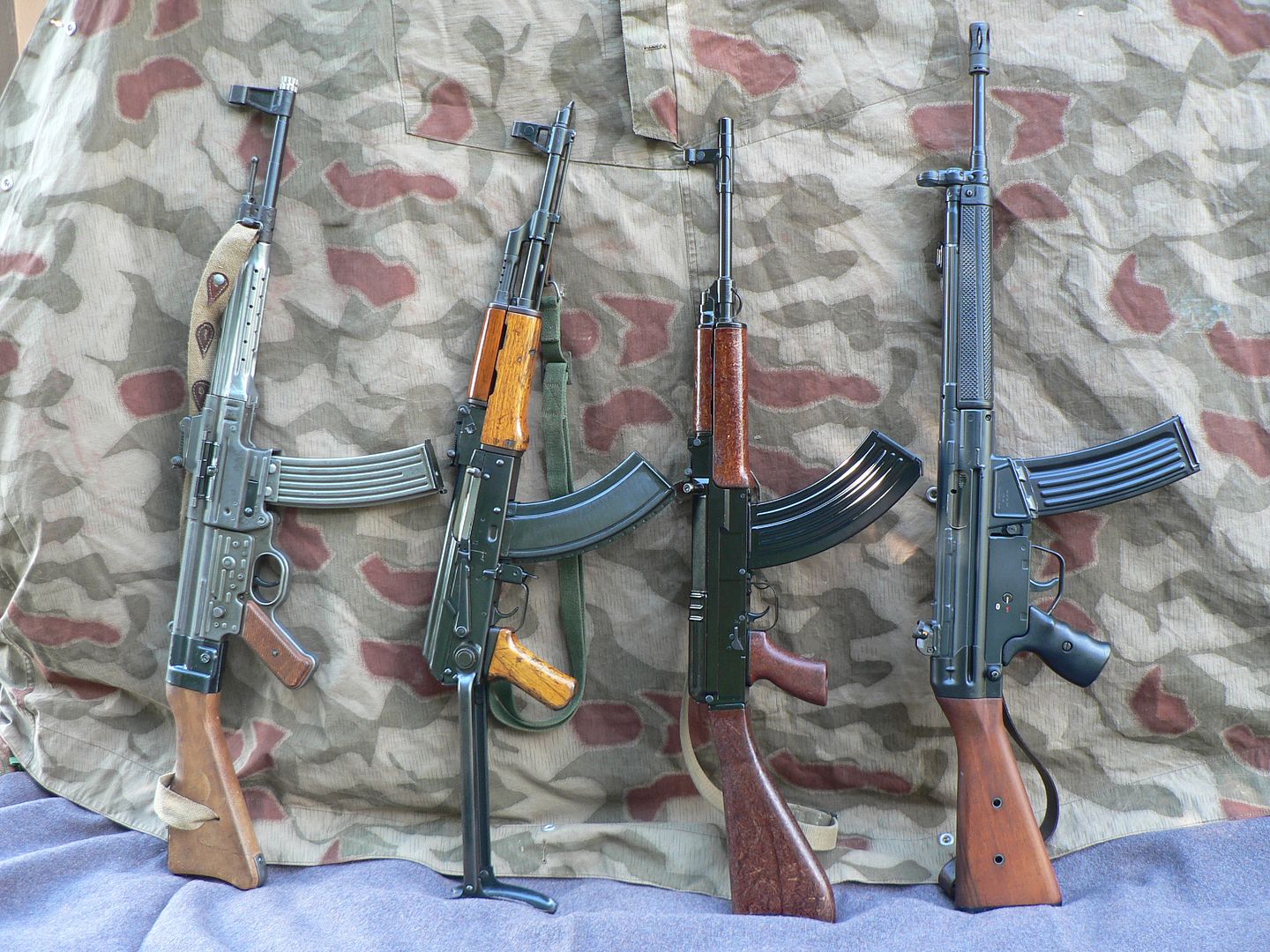
And the PTR44 shown a bit closer with two of the above rifles:
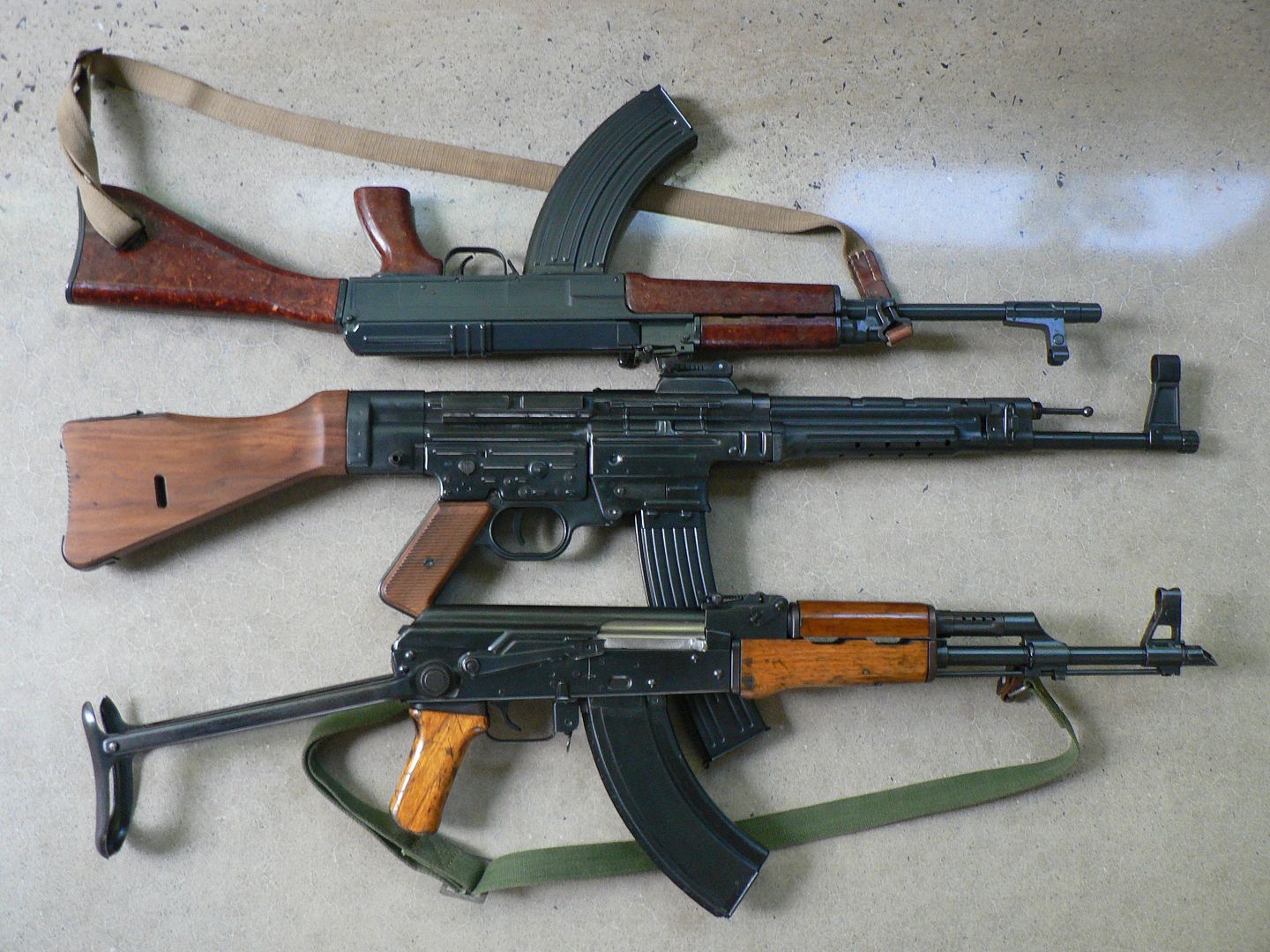
With SMG's FG42 showing just how small the FG42 really is considering it fires a full size 8mm round:
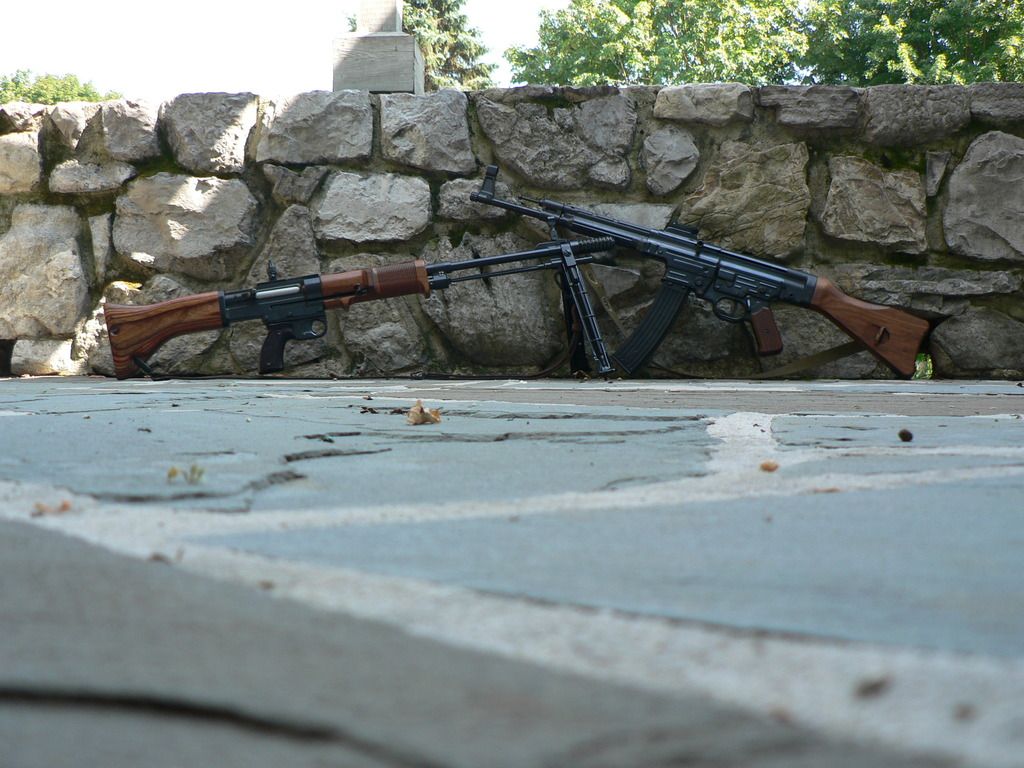
That's it for tonight. In the next post, we'll do a short comparison of the PTR44 to the HK93 and a Zenith Z43 to show just how close many of the features are between the two designs. To my mind, it's really quite remarkable how closely one follows the other. Then we'll get into the real crux of the thread. See you soon!
When the first 200 were imported, it was supposed to be the beginning of regular shipments from SSD. Collectors were VERY excited because, while the rifles cost approximately $5000 new, that price tag was still far less expensive than the cost of an original example and you didn't have to register them on a Form 4 because they were not readily convertible to select fire.
Called the BD44 by SSD but marked "PTR44" for US importation, the rifle was so precise a copy of the original that many (myself included) believe that they were/are made using WWII era stamping dies and molds. In essence, it is a "real" MP44, just made 65 years later. What was not to love?? Various things as it turned out. While the rifle appeared to be exquisitely made, serious fatal flaws started showing up almost immediately. Of the 200 imported, only about 150 were actually offered for sale due to serious issues running the gamut from poor quality control issues with both German and US compliance parts to accidents during the US conversion from importable "sporting guns" back to intended original configuration. Worse, the ones released for sale soon started having issues with parts breaking and flawed modification design intended to prevent original, fully automatic parts from being installed on the rifles. We will cover these issues in more detail as we study the PTR44. The problems were so severe that PTR cancelled further orders of the rifle from SSD after just one shipment, causing these replicas to begin climbing in value immediately despite their almost fatal flaws. Before long, they were selling on Gunbroker at prices as high as $8000. They were still so sought after that even many of the approx. 50 rifles that had originally not been available for sale were offered one at a time on Gunbroker for $5000 apiece......and they sold. Since that time, prices on Gunbroker have come down somewhat but they can still command relatively high prices. Over the years, there have been various rumors of other companies planning to import the BD44 into the United States. Even as I type this, there is word that more are coming. However, none of these rumors has yet come to fruition although the collecting community remains hopeful.
So........what about the PTR44 almost eight years after it was imported? What has become of it? What exactly were the flaws and can they be corrected? Is it a useable rifle or just an expensive wall hanger that has a nasty tendency to self destruct? This thread intends to answer those questions. It is also intended to give a good detailed look at the rifle so that you can see just what you can expect to get when you buy one. I will also cover what should/must be done to it if you do plan on using it to any real extent. I will also document my experiences over time spanning from what I got when I bought it to through what will be done to improve it and ending with (hopefully) the first thousand rounds out the muzzle. Hopefully, my work and tears will help YOU make an informed decision about whether or not you want to actually buy one if you have been interested in owning one over these years. Or, if you are just curious about what the PTR44 is (and is not) you will get some amusement out of my stupidity! This thread is going to take a long time and many posts so let's get to work!
It's late and I'm only going to post a few pictures tonight but ya' gotta start somewhere, even if it is a small beginning.
Here it is.....the PTR44:


I'd wanted one of these in the worst way since I was a kid playing with plastic army men in my yard back in the 70's!! None of them were carrying an MP44 but I had seen them in books and they just looked sooooo neato so I just pretended that my little plastic dudes were carrying one! I got crazy excited when I heard I.O Inc. was planning to import these back in 2007 or 2008 (I forget just exactly when but that's pretty close). I saved up all my money like a good boy. But they just kept dragging it out; promising that they were coming and making a list of people who wanted one but not delivering on those promises. Then the price started going up because they were deluged with phone calls and emails from potential buyers. I guess they figured they would soak us poor saps for all they could get out of us. After a while, I got tired of the delays and price hikes so I took my money and bought an NDM-86 (Chinese made SVD) instead. They never did show up through I.O. Inc.. A little while later, the PTR deal came about. By then, I had researched these rifles thoroughly and, even though I don't speak German, I meticulously translated everything I could find on European gun forums pertaining to the BD44. I was aware that people were having issues with parts breaking and I decided to hold off, waiting to see it the issues would be ironed out before I plunked down my hard earned money. I am NOT a wealthy man after all! Well, I've already told you what happened and there was NO WAY I was going to spend 5K on a rifle that I would potentially have to sink thousands more $$$ into if I wanted to MAYBE work. Nope, I didn't need one that bad.
But it nagged at me. I still wanted one but I was angry too. Why couldn't they have just done it RIGHT the first time??? My pride wouldn't let me spend the money. Well, after 7 years of being pissed off about the whole affair, I decided that the whole thing was cursed. Despite MANY claims that more were coming, I came to feel that more simple were NOT coming. I still feel that way but I sincerely hope I am wrong. Whatever the case, I started looking again; casually at first but more actively as time went on. When this one came to my attention through a guy I know who has one of his own, I figured I had better get one now or accept that I was probably never going to get one at all. I contacted the owner who told me that he had put 50 rounds through the rifle when he first bought it new and then put it in the safe to sit. He still had everything it came with including the cheap Plano hard case, two magazines, manual, PTR supplied lock and other assorted paperwork thrown in by PTR such as a catalog and safety brochures. It even came with the cardboard shipping box. Well, knowing my luck and still believing that the whole modern MP44 thing was cursed, I drove to his town in a whole other state to transfer the rifle to me legally through an FFL. My thinking was that, if I was to have it shipped, it would probably get destroyed or lost in transit so I'd better cut that variable out of the equation!! It turned out to be fortuitous because the seller turned out to be just a really, really nice guy. He even bought me lunch at a local micro brewery with a bit of the money I had just given him. Thanks Richard! You have Class sir!!
OK. Moving on. Before I get into the nitty gritty of the PTR44 proper I want to touch just briefly on my thoughts about the MP44 in general. The Sturmgewehr is something of an odd bird. Being that it is the first of it's kind in known History, it's a little crude by modern standards. It's very slim and not particularly long but it's also kind of bulky. By that I mean that, although it's about the same overall size as an AK47/VZ58/HK93/take your pick, it just looks bigger unless it's side by side with one of them. It feels like it was built for Lego people. <--You either get that or you don't. And it's HEAVY, weighing in at just a bit over 11 pounds. The action also feels ratchety. When you grab the charging handle and run the action back and forth, you can feel the parts locking and unlocking in there. I imagine that it feels about the same as something built in Ape City (Charlton Heston PotA, NOT that new stuff). It's not a smooth action at all. BUT, when you shoulder the rifle, you find that the ergonomics are spot on; even better than many of today's offerings. And the recoil impulse is just phenomenal. The straight line design coupled with the weight (in 1945, men were men and weight was not the issue it is for us modern wussies!) means that there is minimal muzzle rise. You can still feel and even hear all the innards gnashing around in there but it works. In many respects, the ancient and crude MP44 still feels like a relevant design today. Yes, you can tell it's old but it's competent.
Here is an original (owned by a friend) compared to an AK, VZ58 and an HK93:

And the PTR44 shown a bit closer with two of the above rifles:

With SMG's FG42 showing just how small the FG42 really is considering it fires a full size 8mm round:

That's it for tonight. In the next post, we'll do a short comparison of the PTR44 to the HK93 and a Zenith Z43 to show just how close many of the features are between the two designs. To my mind, it's really quite remarkable how closely one follows the other. Then we'll get into the real crux of the thread. See you soon!

